






06 The To-Do Bordowitz’s “Tetragrammaton,” Chocolate Babies, and more to check out
08 Street View Southside Blooms turns vacant lots into fashion and futures.
10 Documentary A new film on a celebrated chef is a feast for the soul.
18 Ehlers | On Prisons Revisiting pension forfeitures for misconduct settlements

22 Architecture The Floating Museum opens up possibilities for the Chicago Architecture Biennial.
24 Cra Work A ceramics artist returns to Chicago.
26 Exhibitions of Note Picks for this season’s must-see art shows
28 Living Museum The Fine Arts Building turns 125 but feels very young.
32 Theater History A young theater artist searches for the Godzilla Rainbow Troupe.
34 Preview It’s a queer theater roundup (and yes, there will be quiche).

36 Reid | Stages of Survival
38 Plays of Note Recommended theater to see, including Birthday Candles, Blues for an Alabama Sky, and Jane: Abortion and the Underground
42 Preview Oh, Rob! John Cusack revisits High Fidelity
43 Books Top Five discusses the impact of a Chicago cult classic.
CHICAGO READER | SEPTEMBER 21, 2023 | VOLUME 52, NUMBER 25
TO CONTACT ANY READER EMPLOYEE, EMAIL: (FIRST INITIAL)(LAST NAME) @CHICAGOREADER.COM
48 Movies of Note Dumb Money is tense but triumphant and The Nun II is a jump-scare romp.

50 Galil | Chicagoans of Note
Josh Horton, music videographer
54 Shows and Records of Note
Previews of concerts, including Reese LaFlare, the Cold Waves XI festival, Thantifaxath, Delaney Bailey, and the Hyde Park Jazz Festival
58 Early Warnings Concerts on the horizon
58 Gossip Wolf Hammered dulcimer player Joel Styzens celebrates a new solo album, and rapper Matt Muse releases his second EP in three months.
12 Mulcahy | Institutions
Detainee deaths continue to rise while transparency about them disappears.
15 Brown | Wages A new proposal would require businesses to pay the minimum.
16 Isaacs | On Culture Bally’s opens in Medinah Temple.
Bigger and deeper with Curious Theatre Branch’s Jenny Magnus
60 Savage Love Dan Savage wonders if Italy is for lovers and fighters.
62 Jobs
62 Auditions
63 Community
CEO AND PUBLISHER SOLOMON LIEBERMAN ASSOCIATE PUBLISHER AMBER NETTLES EDITOR IN CHIEF SALEM COLLO-JULIN
MANAGING EDITOR SHEBA WHITE PRODUCTION MANAGER KIRK WILLIAMSON

SENIOR GRAPHIC DESIGNER AMBER HUFF
THEATER AND DANCE EDITOR KERRY REID MUSIC EDITOR PHILIP MONTORO CULTURE EDITOR: FILM, MEDIA, FOOD & DRINK TARYN ALLEN
CULTURE EDITOR: ART, ARCHITECTURE, BOOKS, LITERARY ARTS KERRY CARDOZA NEWS EDITOR SHAWN MULCAHY
ASSOCIATE EDITOR AND BRANDED CONTENT SPECIALIST JAMIE LUDWIG DIGITAL EDITOR TYRA NICOLE TRICHE
SENIOR WRITERS LEOR GALIL, DEANNA ISAACS, BEN JORAVSKY, MIKE SULA
FEATURES WRITER KATIE PROUT
SOCIAL JUSTICE REPORTER DEBBIE-MARIE BROWN STAFF WRITER MICCO CAPORALE SOCIAL MEDIA ENGAGEMENT
ASSOCIATE CHARLI RENKEN
VICE PRESIDENT OF OPERATIONS ANN SCHOLHAMER
CHIEF DEVELOPMENT OFFICER DIANE PASCAL VICE PRESIDENT OF PEOPLE AND CULTURE ALIA GRAHAM
DIRECTOR OF MARKETING AND STRATEGIC COMMUNICATIONS CHASITY COOPER
MARKETING PROJECT STRATEGIST SHAWNEE DAY
DEVELOPMENT ASSOCIATE MICHAEL THOMPSON TECHNOLOGY MANAGER ARTURO ALVAREZ OFFICE MANAGER AND CIRCULATION
DIRECTOR SANDRA KLEIN
THIS WEEK ON CHICAGOREADER.COM
A new survey highlights equity, transparency, and justice issues in the arts community.
44 Festivals More films than you can reasonably watch; it’s CIFF time.
46 LGBTQ+ movies Reeling Festival returns with fan favorites aplenty.
63 Adult Services
DIRECTOR OF CHICAGO INDEPENDENT MEDIA ALLIANCE (CIMA) SAVANNAH HUGUELEY
VICE PRESIDENT OF SALES AMY MATHENY SALES TEAM VANESSA FLEMING, WILL ROGERS
DIGITAL SALES ASSOCIATE AYANA ROLLING MEDIA SALES ASSOCIATE JILLIAN MUELLER
ADVERTISING
ADS@CHICAGOREADER.COM
CLASSIFIEDS: CLASSIFIEDS.CHICAGOREADER.COM
NATIONAL ADVERTISING VOICE MEDIA GROUP 1-888-278-9866 VMGADVERTISING.COM
JOE LARKIN AND SUE BELAIR
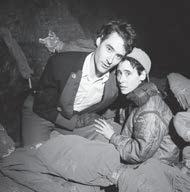
DISTRIBUTION CONCERNS distributionissues@chicagoreader.com 312-392-2970

READER INSTITUTE FOR COMMUNITY JOURNALISM, INC.
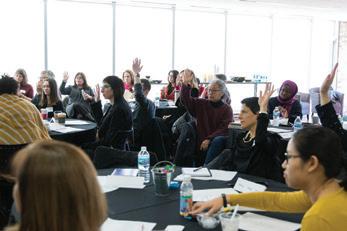
PRESIDENT AND CHAIRPERSON EILEEN RHODES TREASURER REESE MARCUSSON SECRETARY KIM L. HUNT DIRECTORS ALISON CUDDY, DANIEL DEVER, MATT DOUBLEDAY, VANESSA FERNANDEZ, TORRENCE GARDNER, ROBERT REITER, CHRISTINA CRAWFORD STEED
living monument
The designation of a Till and TillMobley national site
“Is today the day?”
On navigating Chicago’s byzantine parking ticket system
READER (ISSN 1096-6919) IS PUBLISHED BIWEEKLY BY THE READER INSTITUTE FOR COMMUNITY JOURNALISM 2930 S. MICHIGAN, SUITE 102 CHICAGO, IL 60616 312-392-2934, CHICAGOREADER.COM
COPYRIGHT © 2023 CHICAGO READER PERIODICAL POSTAGE PAID AT CHICAGO, IL ALL RIGHTS RESERVED. CHICAGO READER, READER, AND REVERSED R: REGISTERED TRADEMARKS ®
We’ll help you achieve your dream, right from your neighborhood.




12-week classes start September 25.


8-week classes start October 23.
ccc.edu/apply


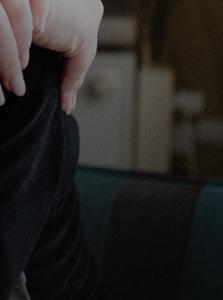












In late August, the Chicago Sun-Times calculated that more than 13,000 immigrants had arrived in Chicago since August 2022, when Texas governor Greg Abbott started his busing scheme. While our city is navigating the care and feeding of all our people, and not always getting it perfect, we’ve received an influx of even more people via Texas and elsewhere in this last year, mainly without any resources of their own. And unfortunately, a lot of the care work seems to be falling on all of us.
We’ve seen activists, mutual aid organizations, and beleaguered nonprofits challenged with everything from procuring food and supplies to finding families homes in a city where affordable housing can prove out of reach even for a renter with references and gainful employment. And still we have to keep going,

because regardless of what we think about this situation, regardless of whether the city and county seem overwhelmed into a standstill, there are people in need—and we all need one another.
In 1884, when construction started on the Studebaker Building at 410 S. Michigan, Chicago was a 47-year-old growing city that had already been through an unthinkable tragedy. The Great Chicago Fire of 1871 killed 300 people and left a full third of the city’s population unhoused. Just 13 years later, the city had spent more than a decade entertaining a flurry of architects, builders, and craftsmen who worked to not just re-create but also improve the building stock. This resulted in triumphs such as the Studebaker, these days known as the Fine Arts Building, and the Home Insurance Building on LaSalle, considered the

world’s first skyscraper. The Home Insurance Building was demolished in 1929 to make way for a corporate complex for Marshall Field’s, but the Fine Arts remains.
It’s rare and wonderful to commune with the 19th century when we can, and though the Fine Arts Building has enjoyed improvements over the years, a walk through its halls can still help you sense the presence of the hundreds of Chicagoans drawn to that section of Michigan Avenue to harness a piece of our culture. Countless piano students, dance troupes, and filmgoers moved through the Fine Arts during the 20th century, each looking for that special spark of recognition that flies when art and culture cease being just a spectacle outside us and become something we can do
The Fall Arts and Theater Preview in this issue, combined with the World Music Festival

preview that’s included as an insert, is a wellspring of hope and a reminder that humans are on this earth and in this city not only to exist, but to thrive. We create the essence of imagination with every video we shoot, every bon mot we devise, every new song we sing. We buoy each other in hard times through dreams and visions, and the arts are our key to imagining the world we wish to live in, where there’s plenty for all.
Artist and writer Seth Tobocman coined a phrase with the title of his 1990 graphic book: You Don’t Have to Fuck People Over to Survive . Let us inhabit these words as we move Chicago into the next part of the 21st century.
—Salem Collo-Julin, editor in chief m scollojulin@chicagoreader.com




The violence of the AIDS pandemic and living with HIV have been central themes in the output of new media artist Gregg Bordowitz . In his debut exhibition at Corbett Vs. Dempsey (2156 W. Fulton), he explores Judaism and queerness. “Tetragrammaton” features recent monotypes created by Bordowitz where the Hebrew word of the show title is traced into a blend of yellow, white, purple, and black—the colors of the nonbinary flag. The tetragrammaton refers to a word for which there is no English equivalent. It’s never spoken and only appears in written form. The gallery notes that Hebrew letters are part of a numerological system. Their combination with the nonbinary flag —each image an edition of one—underscore both the systematized and mystical qualities of gender as much as how nonbinary identity is expressed in uniquely individual ways that can evade tidy language. The exhibition opens September 21 and continues through November 4. corbettvsdempsey.com
I try to make a point of seeing at least one movie in a theater per month, and this September, I’m torn between Def by Temptation at Music Box Theatre (3733 N. Southport) and Chocolate Babies at Facets (1517 W. Fullerton). Both are screening on Thursday, September 28.

Presented as part of Fresh Films, the Music Box’s month-long celebration of 50 years of hip-hop, Def by Temptation is a standout of Black noir filmmaking with a banger soundtrack. In late 1980s Brooklyn, a super hot succubus is preying on horny Black men. Can a minister-in-training, aspiring actor, and beat cop version of Agent Mulder stop her?
Featuring cameos and music from R&B pioneers Freddie Jackson, Melba Moore, and Najee, this Troma production is a who’s-who of early R&B as much as a twisted urban fairy tale. Jump on tickets ($8, $6 members) quick, though: this film is presented in the Music Box Garden, so seating is limited. musicboxtheatre.com
Also on Thursday, September 28, Facets is showing Chocolate Babies , a 90s classic of New Queer Cinema. Set in New York, Chocolate Babies follows a genderfluid crew of HIV-positive activists of color causing mayhem for conservative politicians they believe are collecting secret lists of people with HIV

As the friends languish in laughter and chaos, their antics—both extreme activism and drug-and-alcohol binges—begin to fracture the group. Questions arise like what is loyalty, and how far is too far? What can or should peace look like when the world has sentenced you to die?
Tickets are $12 ($10 for members), and the 9 PM screening is preceded by a trivia competition hosted in Facets’ lounge (doors open at 6:30 PM. facets.org
On Saturday, September 30, poet and teaching artist William Estrada will be hosting a poetry and art-making workshop at the National Museum of Mexican Art (1852 W. 19th St.). Happening from noon-3 PM, Estrada will guide participants through the exhibit “Carlos Cortéz 100 Años,” a retrospective currently on view at the museum.

Cortéz is one of Chicago’s most influential Latine social justice artists and someone whose practice Estrada is indebted to. (Estrada has his own career-spanning solo show happening at the Hyde Park Art Center through October 29.) After the walk-through, Estrada will provide exercises inspired by the exhibit to encourage poems and art. Participation costs $10, which covers all materials and supplies, and you must be 18 or older. Space is limited. nationalmuseumofmexicanart.org
Later in the evening of September 30, Fire-Toolz will headline a show at Digital Art Demo Space (DADS) Chicago (2515 S. Archer, Suite 2). The gallery is one of the best places to catch digitally-based music and adjacent projects right now.
While the bill is rounded out with other
favorites of the local glitch and e-pop scene, RXM Reality and Ivy Hollivana , this is also a rare opportunity to see Flesh Eater, a Nashville-based project that creates music that juxtaposes moments of soft and romantic wistfulness with electric avalanches of chaos.
The evening promises to be a small but gen-
erous sample of music that’s indebted to the Internet but intended to be experienced live.
Music starts at 8 PM. Tickets are $15 ($10 in advance) and available to all ages.
dadschicago.com v
m
mcaporale@chicagoreader.com
Exhibition on view

September 8 – December 30







Free Admission

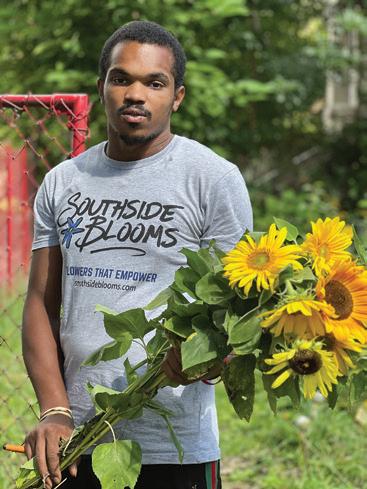 By ISA GIALLORENZO
By ISA GIALLORENZO
petals on the back of his white denim jacket. “I feel like red roses are the favorite flower of Englewood,” said Bonham Blackwell, who helped create the designs.
Hopkins and Little were both recently promoted to team lead, so they are involved in many facets of the business. “I help with weddings. I design centerpieces, bouquets, corsages, boutonnieres . . . sometimes I’m on a farm. I plant, harvest, weed, anything . . . [my coworkers] are basically my second family,” Little said.
According to Bonham Blackwell, one of Southside Blooms’s farms is currently beaming with life. “There are really beautiful sunflowers, zinnias, and marigolds that are coming o the farm. We have the heights of the harvest going, so that’s been keeping our farm team really busy. There’s just rows and rows of these colorful flowers—sunflowers, probably the tallest ones, at ten, 11 feet high. You don’t even feel like you’re in the city anymore, and it’s really great when you’re out on the [Englewood] farm just enjoying nature,” she said.
Making garments out of flowers might be a creative endeavor, but it’s nothing new. We’ve all seen that happen for challenges on the show Project Runway or closer to home at Garfield Park Conservatory’s yearly show, Fleurotica, and the itinerant Fleurs de Villes events.
Southside Blooms, a “farm-to-vase florist” with a storefront in Englewood, organized one of such efforts last spring at Ken nedyKing College. It is fair to say, though, that Southside Blooms raised the bar for future flower fashion-makers by infusing sustainability and community development into its petalous creations.
Southside Blooms is the commercial arm of Chicago Eco House—a nonprofit founded by Quilen Blackwell, 39, and his wife, Hannah Bonham Blackwell, 41, in 2014. Motivated by their faith, the Blackwells decided to dedicate their lives to their mission of “using sustainability to alleviate poverty,” as the organization describes on its website. At the time they came up with their concept, the Blackwells noticed under-resourced neighborhoods such as Englewood suffer from a serious lack of job opportunities but
SOUTHSIDE BLOOMS
offer an abundance of vacant land. At first, the Blackwells thought about starting a food-farming project but then realized cultivating and selling flowers could be a much more viable business model. Their enterprise has been growing and thriving ever since.
To celebrate its success, in June, Southside Blooms presented its second annual Street Flower Fashion Show, in which the organization’s employees displayed their work in their outfits and in the stage decor. The fashion show also included contributions from other south-side organizations and talents, such as the youth performing arts organization Downstage Arts, musical duo Zach and Jenna, and spoken-word artists Prolific and Fullamusu.
“We try to make everything as collaborative and community-based as possible. We also want this to be a showcase not just for our own youth talents but youth across the south side in Chicago,” Blackwell said.
In keeping with the eco-conscious philosophy at Southside Blooms, the flower looks presented at the show were made with foam-free sustainable mechanics. Drawing from the organization’s experience at Fleurs
de Villes earlier this year (when it featured a gown made of flowers for a fictitious Nigerian bride), it employed materials commonly used at the flower farm. One example was the chicken wire that doubled as the base for a covetable carnation skirt worn by Kelise Rather, 16.

“I feel good! Like a flower girl!” said Rather, sporting a jacket with matching details made with flowers and a pair of cool Nike sneakers to honor the “street fashion” aspect of the show. Rather talked about her job at Southside Blooms: “We do a lot of di erent wonderful, creative things. I never saw myself doing [this job], but it’s actually fun. I would prefer it over fast food or any other job because who doesn’t love flowers? . . . I know it’s still a job, but all the people who work there are just so fun. The whole community is just awesome.”
Her colleagues Armani Hopkins, 16, and Rashod Little, 17, also skillfully mixed flowers and street fashion. Hopkins’s outfit was sprinkled with Hypericum berry patches and accessorized with exclusive “flower tattoos” pasted on her skin with surgical tape. Little made sure to perfectly match his sneakers with the giant flower fashioned with rose
Volunteers are needed to help with planting, harvesting, and other tasks. Go to southsideblooms.com/volunteer for more information.
Now that the bustling fall season has hit, Southside Blooms has been doing a lot of weddings and events for notable venues, such as the Field Museum, which has the organization listed as one of its preferred flower vendors. “[Our young employees] belong up there with the best,” Bonham Blackwell said proudly.
There is no lack of options for those wanting to support the mission. Though they are wrapping up their CSA (community supported agriculture) season now, the Blackwells o er weekly and monthly bouquet subscriptions and can deliver throughout Chicago and its suburbs. Nonsubscription purchase options include unique greeting cards made with recycled paper from south-side Chicago schools that are turned into handmade seed paper using native wildflower seeds and individual flower arrangements.
By late October or early November, Southside Blooms will start taking orders for its popular Christmas wreaths and holiday greens. “We’re really excited to continue to look towards expansion. We have plans to open a shop on the west side hopefully sometime next year, because we want to be able to positively impact youth on the west side and give them the same opportunities,” Bonham Blackwell said. “We’re motivated and very energized about the future.” v












Reeling Chicago’s LGBTQIA+ International Film Festival premiers an intimate documentary of a former Chicago chef’s rise.
By XIAO DACUNHALiving in Chicago, we hear these amazing restaurant success stories that sound like unimaginable adventures. Too often, these tales have undergone massive editing and polishing to the point where even the worst struggle sounds like a finely crafted Shakespearean sonnet. We rarely see the raw truth. We look at successful restaurants and chefs with their list of awards, and the first thing we think is that they are di erent from people like us. Then an independent documentary like Susan Feniger.
FORKED shows up.

As one of the featured titles at this year’s Reeling Chicago LGBTQ+ International Film Festival, FORKED shows a di erent side of the restaurant industry. Produced by Feniger’s spouse, Liz Lachman, the documentary is a tender, unfiltered narrative about how one woman works in an industry dominated by men.


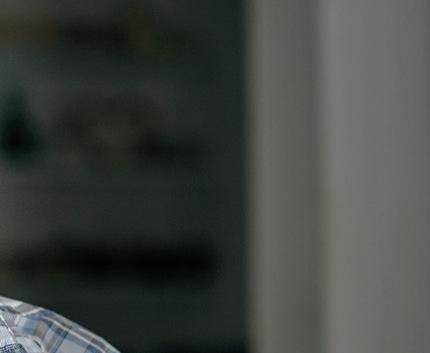

An award-winning chef, Feniger and her lifetime culinary partner Mary Sue Milliken, began as cooks’ assistants in the back kitchen


of Chicago’s iconic French restaurant, Le Perroquet. A 1986 Chicago Tribune article on the two shortly after leaving Le Perroquet describes their initial forays into the culinary world—among them shared struggles with
closet-sized spaces and problematic chefs. They ended up a legendary duo in the culinary world, opening popular Los Angeles restaurants focused on Mexican-influenced cuisine like City Cafe, Border Grill, and Ciudad in the 80s and 90s, writing half a dozen cookbooks into the 90s, appearing on TV in their own popular 90s television shows Too Hot Tamales and Tamales World Tour, and winning several awards. In 2013, Feniger won the California Restaurant Association’s Lifetime Achievement Award. And in 2018, she won the Julia Child Award.
The 90-minute film suggests that Feniger never intended to become a legend. She and Milliken didn’t even know what they were doing when they started Too Hot Tamales, one of the most loved shows in the Food Network’s history, judging by its 400 episodes. (The show ran from 1995 to 1999.) They simply did what they wanted to do and hoped it worked out.



Throughout the verite documentary, the one thing we hear Feniger say the most is how she had no idea where she was headed. The film doesn’t shy away from showing her dicult times. At one point we hear her admitting that they were cooking food on a hibachi grill in their cafe’s parking lot next to their custom-



100% of Profits go toward Alzheimer’s care, support, education, and awareness programs in Illinois.RSUSAN FENIGER. FORKED 9/24, 4: 30 PM, Landmark Century Centre Cinema, Theater 4, 2828 N. Clark St. $12 general admission, $10 Reeling members Stream online starting 9/29, $10 streaming ticket reelingfilmfest.org
ers’ cars when they first started. We see a chef who once dominated the Food Network tell us she was miserable at her first restaurant job and often cried in the cooler, as we all did.
These insights are what make FORKED a refreshing culinary documentary. Feniger didn’t enter the scene with a massive culinary heritage like many Chicago chefs and restaurateurs. This lack of inheritance surprisingly liberated her from all rules and restrictions. What she didn’t know, she chose to explore and learn. Whatever she felt herself drawn toward, she incorporated into her menus from the beginning.
She calls her focus on multiethnic cuisines “global.” It’s a term not without its detractors, but we often take for granted today that many ingredients had barely entered common American cuisine when she began her career. Passion fruit, avocado, tuna—what we see as regular food items on modern restaurant menus were the crab nobody had eaten back then.
The film shows how early on she sought out ingredients and dishes from Vietnam, Mexico, Thailand. As Feniger put it, too many people were afraid to eat like the locals when they traveled, but that was usually where the best food came from. So she went out into the world, walked the streets, and tasted the food
The Reader’s weekly chef pop-up series, at Ludlow Liquors.
The Reader’s weekly chef pop-up series, at Ludlow Liquors.
Follow the chefs, @chicago_reader, and @mikesula on Instagram for weekly menu drops, ordering info, updates, and the stories behind Chicago’s most exciting foodlums.
Follow the chefs, @chicago_reader, and @mikesula on Instagram for weekly menu drops, ordering info, updates, and the stories behind Chicago’s most exciting foodlums.
Sept. 25: Food for chefs and scumbags by Dive Bistro @divebistro
in its most authentic forms. Then she came home, cooked her heart out, and dealt with restaurant construction failures, city health regulations, financial struggles, infestations, and who knows what other nightmares that didn’t fit into the film.
By 2009, Feniger decided to open her first solo restaurant project, STREET. It lasted four years, but she wasn’t deterred. She jumped into a new project in 2013, Mud Hen Tavern, which ran until 2016. Since then, she’s been appearing in cooking competitions and making guest appearances on various television programs with her trademark warm smile that reveals her energetic curiosity, evident in one of her first television appearances, on Julia Child’s Cooking with Master Chefs FORKED is primarily focused on the struggles that Feniger faced in opening her own restaurant during a time when there were so many more reasonable and less costly options. But in the end, it’s an intimate and raw documentary that highlights the chaos, distress, tears, laughter, failed experiences, and triumphs behind anyone with determination and desire. The documentary is a feast for the eyes and the soul, and reminds us of our most fearless selves going boldly out into the world. v

m letters@chicagoreader.com
Sept. 25: Food for chefs and scumbags by Dive Bistro @divebistro
Oct. 2: Foodball O.G. Shaker BBQ @shakerbarbeque
Oct. 2: Foodball O.G. Shaker BBQ @shakerbarbeque
Oct. 9: Food of the Levant by Laimoon @laimoon_ chicago
Oct. 9: Food of the Levant by Laimoon @laimoon_ chicago
Oct. 16: Filipino barbecue from Mabu Yami @mabuyami
Oct. 16: Filipino barbecue from Mabu Yami @mabuyami
Oct. 23: The return of Piñatta @pinattachicago
Oct. 23: The return of Piñatta @pinattachicago
Oct. 30: Devil’s Night with Chubby Boy’s Burgers @chubbyboysburgers
Oct. 30: Devil’s Night with Chubby Boy’s Burgers @chubbyboysburgers
Nov. 6: Malört-themed food and good times with Rafa Esparza
Nov. 6: Malört-themed food and good times with Rafa Esparza
@lknuck_if_u_unclebuck
@lknuck_if_u_unclebuck
Head to chicagoreader.com/monday-night-foodball for weekly menus and ordering info!
Head to chicagoreader.com/monday-night-foodball for weekly menus and ordering info!
Cook County Jail is one of the largest singlesite county jails in the U.S., based on its daily population and its capacity.

At least 15 people have died in 2023 while detained at Cook County Jail; family members and advocates cite a lack of transparency from the sheriff ’s office.
By SHAWN MULCAHYTyler Spratt had a smile for everyone. He’d spin tales with loved ones, trying to get them to bite, and, when they’d discover the ruse, he’d let out a laugh. Spratt was warm and loving, his obituary notes, particularly with his nephew and younger cousins. He took pride in his job as a chef—the 28-year-old, without any formal training, learned on the job, working his way through a handful of restaurants in Chicago’s south suburbs.
In late April, Spratt was arrested by the Cook County Sheriff’s Office and booked at the county’s police headquarters in Maywood. The following afternoon, he called his mom, Leslie, and told her he’d need $2,000 to bond out while his case made its way through the
courts. He called again later that evening, this time letting her know he’d been moved to the Cook County Jail in Chicago’s Little Village neighborhood, an imposing compound of concrete, brick, and barbed wire atop chain-link fences. Mere hours later, just after four on the morning of May 2, Spratt was found unresponsive in his cell. An hour later, at the hospital, a doctor pronounced him dead.
“He wasn’t even there [at the jail] for, I think, 12 hours,” Leslie Spratt tells the Reader. “So what can happen to him in 12 hours?”
Four months later, she says, the Cook County Sheri ’s O ce, helmed by Tom Dart, has yet to provide any answers. “It’s just very frustrating that you get nowhere. I can’t even get his life insurance to pay for his funeral because his death certificate says ‘pending.’”
Tyler Spratt was among 15 people who’ve died this year while detained at the jail. Loved ones of those who lost their lives and advocates who work with people imprisoned in the jail tell the Reader they’ve largely been kept in the dark. In some cases, they say investigations dragged on for months with little or no communication. In others, they say jail o cials waited hours before telling them their loved ones had died. And above all, they say there’s no public accountability for the violence and death meted out behind bars.
On May 2, an investigator from the Sheri ’s O ce rapped on the door to the house owned
by Tyler Spratt’s parents. The investigator said their son had died earlier that day. He stayed in touch for about a week. Then, without any resolution, communication abruptly stopped.
Spratt is frustrated by the slow pace of the investigation, but even more so by the lack of information. At one point, investigators shared information about Tyler’s death with his girlfriend, but neglected to share it with his parents. “There’s a lot of questions I have that I’d like answered,” she says.
As the investigation drags into its fourth month, the Cook County Medical Examiner’s office has yet to even determine a cause of death, according to Spratt and publicly available data. Indeed, autopsies for at least seven people who’ve died at the jail remain pending,
including one person who died in February. “Since [the jail] is supported by taxpayers, are we allowed to know what goes on in there? Or is it all a big secret?” Spratt asks.
Natalia Derevyanny, a spokesperson for the medical examiner’s o ce, says that each case requires “specific kinds of testing and evidence reviews. These cases required extensive testing and a great deal of evidence that the pathologists must conduct and review in order to ensure that the cause and manner of death is properly determined.”
Shoddy, inadequate communication is, unfortunately, not new. Nickolas Lee was incarcerated at the Cook County Jail in February 2020. As COVID-19 began to creep, then run rampant, through the facility, his wife, Cassandra Greer-Lee, frantically called jail o cials to sound the alarm on the cramped quarters and lack of sanitizer or masks. “When you walk into the Cook County Jail, you don’t have to worry about what’s going to happen in court. You just need to survive,” Greer-Lee says. “You have to worry about dying now.”
In late March, Lee began to exhibit symptoms of the virus. Greer-Lee called Cermak Health Services, the jail’s infirmary unit run by Cook County Health, but she heard nothing back. Undeterred, she held vigil outside the jail, pleading with correctional o cers walking in and out of the jail.



Lee’s symptoms progressively worsened, and jail sta at last transported him to John H. Stroger Jr. Hospital, where he was admitted to the ICU. Greer-Lee only found out her husband had been taken for outside medical care because a person detained with Lee tipped her o , she says. Lee died alone in mid-April, shackled to a hospital bed.
“Here in Chicago—in the state of Illinois—inmate lives don’t matter to people in power,” Greer-Lee says. “To them, I’m just nothing.”
Matthew Walberg, the sheriff’s communications director, in an emailed response to questions from the Reader , said when a person in custody dies, “staff immediately attempt to notify the person the deceased provided as his or her emergency contact.” He said it can sometimes be di cult to fi nd people who changed phone numbers or moved, though it’s unclear how often that happens.
With regard to protracted investigations and infrequent communication with loved ones, Walberg said the sheri ’s o ce “does its best” to provide updates “without jeopardizing the investigation.”
Around 11:30 AM in late April, correctional officers led a group of people from a dayroom in Division 11 back to their cells and another from their cells to the dayroom. An officer had just finished unlocking cells on the tier’s second fl oor when a person called out that there was something wrong with his cellmate, public records show. The o cer entered the cell to find the 26-year-old “lying face-up, back against the wall and slumped over on the lower bunk.” The o cer unsuccessfully tried to wake him, shaking him on the shoulder. Jail staff and first responders attempted to revive him, using naloxone and CPR, to no avail. He was pronounced dead just after noon.
For six hours, his lifeless body languished in the jail as dozens of officers, administrative staff, investigators, and first responders cycled in and out of the tier, the documents show. At 5:45 PM, his body was taken to the morgue—his family had yet to learn of their loved one’s demise. A lawyer working with the man’s family told the Reader the family was notified nine or ten hours after his death.
The Reader obtained a copy of the December 2021 procedure manual for the sheriff’s o ce, which states, after discovering someone in their care has died, the watch commander should first clear the area and treat it as a crime scene. Any recording that captures events leading up to following the death “should not be released or shared with anyone other than those directly involved in the investigation” without permission from jail leadership.
The watch commander, the manual continues, should then notify a slew of agencies—the medical examiner’s o ce, the Illinois State Police, the “person designated by the deceased individual,” and the Illinois Department of Corrections. It instructs the sheri ’s Bureau of Strategic Operations and Investigations to make “an in-person notification to the family” if they live in Illinois, or make “other arrangements” to notify their family if they live outside the state.
The Cook County Department of Corrections’s executive director or an “authorized designee” is responsible for maintaining contact with the family of the person who died in the jail and for providing “practical support and information in accordance with state and federal law,” the manual says.
With three months still to go, 2023 is one of the deadliest years in a decade—but it’s just another chapter in the jail’s fatal history. From 1995 to 2004, 178 people died in the jail, an average of almost 20 deaths per year. And in the five years between 2017 and 2021, 57 people lost their lives.
Throughout the brunt of the pandemic, jail officials routinely notified the public when someone died in their custody. In most cases, press releases were sent to local media
outlets. The sheriff’s website maintains an archive of press releases. As the jail became what the New York Times called “the nation’s largest-known source of coronavirus infections,” it created a detailed public dashboard with near-real-time information about positive cases and deaths. (The dashboard has since been taken down.)
But recently, Dart’s administration appears to have changed course. The sheriff’s office not only stopped notifying the media when someone died at the jail—it appears to have scrubbed any mention of previous in-custody deaths from its archives.
Now, one of the only ways to learn of deaths in the nation’s second-largest jail, and the circumstances surrounding them, is through the state Freedom of Information Act. But even there, information is hard to come by. The sheri ’s o ce denied a request from the Reader this month for documents pertaining to deaths in the jail in August and early September, claiming the release of such records would “interfere with . . . open investigations, including inadvertently identifying witnesses and possibly unduly influencing witness statements.” In response to another request, the o ce provided an incident report that was almost completely redacted.
“The lack of transparency is of the utmost concern and one of the most disturbing aspects of this whole ordeal,” says Briana Payton, senior policy analyst at the Chicago Appleseed Center for Fair Courts. “Going to jail, as horrible as it is, is not supposed to be a death sentence for people.”
Prisons and jails have always been opaque, the flow of information tightly controlled and monitored. But the move to shroud in
secrecy the deaths of community members, many of whom were detained awaiting trial, is conspicuous.
“When someone is in jail, the state has total control over their lives,” says Sarah Staudt, policy and advocacy manager at the Prison Policy Initiative. “The least we can hope for is that when somebody dies in the state’s custody, there’s a full and public accounting of why that happened.”
In his statement, Walberg, the sheriff’s spokesperson, said the agency “does not send press releases about deaths in custody.” He said it “promptly reports” all deaths to the medical examiner’s o ce (as is required by law), which, he noted for some reason, is “completely separate and independent” of the sheriff’s office. The Reader asked if the sheri ’s o ce would commit to providing the public with detailed and timely information about deaths in its care. Walberg didn’t answer, instead repeating that it reports every death to the medical examiner (again, as the sheri is legally obligated to do).
Lack of transparency, particularly surrounding dangerous conditions, is a hallmark for jails
and prisons nationwide. In May, the New York City Department of Correction, which operates the notorious Rikers Island jail complex, also ceased notifying the press of deaths behind bars. The year prior was Rikers’ deadliest in a decade. And in Houston, families of people whose loved ones died at the Harris County Jail likewise were not notified by o cials for hours.
At the height of the pandemic, jails and prisons created data dashboards with near-realtime health information, offering the public a unique view of the conditions behind bars.
“There was so much scrutiny related to the COVID pandemic that we saw this interesting reversal, where systems became even more closed,” says Lauren Brinkley-Rubinstein, founder and principal investigator at the Third City Project, which works to promote data transparency within the carceral system.

Part of the problem, Brinkley-Rubinstein says, is that prisons and jails are only mandated to report deaths to the federal government, per the Death in Custody Reporting Act passed by Congress in 2013. Until recently, that information had been aggregated and published, with a significant time delay, by
the U.S. Bureau of Justice Statistics. But in 2019, it stopped.
“So now there’s still this requirement to report to the federal government, but there’s no good indication that we’ll ever get a clear understanding of what those deaths look like publicly related. And there’s no mandate to make that information publicly available at all or in real time,” Brinkley-Rubinstein says. In a system in which people of color are disproportionately represented, and caged on the taxpayer’s dime, timely information about deaths behind bars is critical.

So far, that information has proved elusive for Leslie Spratt and others whose loved ones died in the county’s care. “I just want [Tyler] to call me on the phone and say, ‘Hello, mama,’” Spratt says.
“He was there by himself. He wasn’t around anybody that really wanted him or anything,” she says. “It would be nice to know what happened. What happened at the jail before they called the ambulance? You know, I don’t know.”

A proposal would require that businesses pay their tipped employees at the statewide $15.80-per-hour minimum wage.
By DEBBIE-MARIE BROWNAproposed ordinance moving through the complicated world of city council committees would require businesses to pay their tipped employees—like bartenders, bussers, and servers—at the statewide $15.80-per-hour minimum wage instead of the local $9.48-per-hour subminimum wage.
The proposal, introduced by 26th Ward alderperson Jessie Fuentes in July, had languished because of business pressure. But it’s been given new life in recent months. The motion has drawn ardent responses from restaurants and workers alike, each of whom will be a ected by the $6.32 increase in wages that would phase in over a five-year period.
Antoinette Simmons, a 20th Ward resident, spoke at an early September Rules Committee hearing on behalf of tipped workers who are the sole breadwinners for their families. “We’re not going back to work because it’s not livable—the wage isn’t livable—and we need it to live and take care of our families to be stable,” Simmons said.
The proposal is spearheaded by Chicago organizers and workers, part of One Fair Wage (OFW). OFW is a national coalition seeking to end subminimum wage across the U.S., and to make fair wages and working conditions in service jobs more sustainable for businesses.
Tipped workers have a poverty rate more than twice that of nontipped workers, according to a 2014 joint report by the Economic Policy Institute and the Center on Wage and Employment Dynamics at the University of California. The Bureau of Labor Statistics shows two million people in the U.S. work as restaurant servers—70 percent are women— and they rely on food stamps at a rate one and a half times greater than the general working population.
The way wages are structured now pressures workers into tolerating customers’ harassment and abusive behaviors out of fear of losing tips. But a fair wage, the ordinance argues, would give employees more independence, as it’ll empower them to quit jobs where they feel threatened by the actions of
an employer or customer.
Nicola Giuseppe Persico is a professor at Northwestern University’s Kellogg School of Management. He says economists are somewhat divided about the impact of minimum wage increases on employment. On one hand, some economists believe increasing the minimum wage reduces employment because some workers become too expensive to be employed profitably. Persico says this makes sense from a theoretical perspective, but others look at the data and have a hard time fi nding the so-called disemployment e ects.
Today, the profession more or less accepts that any impact on employment is minor—but Persico has studied only small minimum wage increases, like 75 cents an hour, that occurred over several years. In terms of the impact on workers, his research shows raising wages makes workers more productive because they value their current employment more.
Research from the National Employment Law Project shows that local and state-level minimum wage increases boost income for low-paid workers without reducing overall employment. On top of that, businesses can absorb many of the costs of higher wages from having higher employee productivity and less employee turnover.
The Illinois Restaurant Association has argued against the proposal, and recommends that, instead, the city should beef up enforcement against employers, who are required to make up the di erence if a tipped worker makes below the $15.80 hourly minimum wage. The association prefers that the city just impose stiff penalties on restaurants who don’t comply, an alternative that would cost less for businesses overall.
A survey of 315 Chicago restaurants, conducted by a Pittsburgh-based marketing research and consulting firm for the restaurant association, lists several consequences restaurants say their customers and employees will suffer if forced to adopt the tipped minimum wage hike. A majority of restaurants surveyed say they’ll raise menu prices, reduce employee hours, and eliminate

or consolidate sta positions to deal with the new cost burden.
At the September hearing, Patrick Doerr of the Hospitality Business Association of Chicago asked the committee for accommodations on the bill to help businesses weather higher costs, expenses, and challenges.
First, he asked that the city consider a slower implementation structure for employers with between four and 20 employees, giving them the same incremental accommodations they were allowed when the $15.80 minimum wage ordinance passed in 2018. Second, Doerr asked that outdoor dining programs for breweries, taverns, and music venues be extended this fall, “so they can plan ahead and have the economic certainty of knowing they’ll be able to o er outdoor dining in 2024–2025.” Doerr said that Chicago’s taverns and smaller retailers need outdoor dining to absorb higher labor costs.
Terri Evans, owner of Windy City Ribs & Whiskey, met OFW organizers after purchasing her restaurant in 2018. Evans has an MBA from Northwestern and spent 17 years in corporate America before entering the food industry, so she notes she’s the first to say that profits have to make sense for her to be in business at all.
“I was blown away when I walked into the kitchen and realized that people have worked in this industry for decades and had no savings,” Evans said. “I was like, ‘How do people show up for work in these hot kitchens, in these environments, hour after hour, and have nothing to show for their family beyond the wages that they get and they’re struggling to pay their bills?’”
Evans took it upon herself to learn about the imbalanced wage system in the food industry and “ripped the Band-Aid o ” to pay her tipped workers at nontipped minimum wage, although it was difficult. She went through training with OFW, who walked her through how to do it—and how to do so sustainably.
“A lot of the restaurants here will say this is impossible. Well, I’ve done it. And I’ve been able to scale while doing it. So it is possible. It’s about knowing the narrative of your numbers,” Evans said. “It’s been tough. It’s been a challenge. But do I go to sleep better at night because I can feed the people that are working for me every day?”
Nataki Rhodes is OFW’s Illinois organizer. She’s been a tipped worker for over 15 years, and has made subminimum wage through two mayoral administrations. Rhodes told the Rules Committee that this issue should have been “taken care of” when the city raised the minimum wage in 2018, but tipped workers were left out. Rising prices, inflation, and rent increases don’t only a ect businesses, Rhodes said. They impact tipped workers as well.
“We are labeled workers with no union. But we’re still workers here serving every time you come to the restaurant. Every time you go to an Applebee’s, every time you go to an Original House of Pancakes, we are there to serve you. And so we deserve this raise,” she said. “We’ve been at the table, but we’ve been looked over. And so we’re just grateful to move this process forward.” v
m dmbrown@chicagoreader.com
Chicago architects Harris Huehl and Richard Gustave Schmid, along with what looked like a nascent couple of elephants, a big cat, a large fez, and—sailing right out of my memory—an airborne young woman on a flying trapeze.
Warren says that image came from a vintage poster. He expects to finish the mural this week.
Meanwhile, news of the casino opening drew some backlash abroad, where the name “Medinah Temple” has been taken by some to mean a religious facility. A casino in a former mosque could be sacrilege. But Medinah Temple has never been a religious facility or a sacred space.
If you were a Bloomie’s Chicago customer at the River North store, you won’t be hugely surprised when you walk into Bally’s new pop-up casino in the 111-year-old Medinah Temple.

Bloomingdale’s saved this massive Moorish Revival architectural fantasy (at 600 N. Wabash) from demolition when it opened a store there in 2003, restoring the dome-topped brick exterior, while gutting and transforming the inside.
But if your memory of this landmarked building goes back to the time when it was home to the annual Shrine Circus (as well as a headquarters for the Shrine organization, the bizarrely branded but once-ubiquitous philanthropic club also known as the “Ancient Arabic Order of the Nobles of the Mystic Shrine”), you’re in for a surprise.
The old Shrine circus, like the orientalism of its sponsoring group, was a product of its time. Its flaws, including cultural appropriation and animal abuse, are obvious in the rearview mirror, and should have been then. But for its audiences of clueless kids, the circus was also thrilling: the big caged jungle cats going through their paces (the trainer daring to enter the cage and turn his back on them!); the elephants on parade (glamorous, scant-
ily clad women perched atop!); the human cannonball (hurtling across the 4,200-seat amphitheater!); the clowns and contortionists; and, most of all, the dazzling aerial ballet performed at a breathtaking height on (and o !) the flying trapeze.
The scene inside the old building is still mesmerizing, but unrecognizable. The amphitheater has been replaced by a throbbing, multilevel arcade, populated with acres of glowing, beckoning machines—robots all—primed and ready to boogie down with you. If you’re over 21, an ID is all it takes to get in, the sta is welcoming, and if you want to register as a member, they’ll start you o with some free games. The doors open at 8 AM and close at 4 AM; take a seat, push a button, you’re a player.
When I dropped in at noon, five days after the September 9 opening, attendance was sparse. The rationale for a downtown casino has always been that it’ll draw tourist dollars, as opposed to sucking up money residents would otherwise spend at existing businesses (or on feeding their families). Maybe that’ll happen at night and on weekends, but if I had to guess about these relatively few lunchtime gamblers, most of them of a certain age, I’d say they were also mostly locals.
The only thing that looked familiar inside
was the domed ceiling, with its ring of stained glass windows. To turn the old structure into a functional department store, Bloomingdale’s (which left in 2020) had created a completely new, four-story interior, with an atrium offering a dome view from every level. It now houses nearly 800 slot machines spread over the three upper levels; 50-some table games (roulette, blackjack, etc.) on the top two floors, three restaurants (only one was open at lunch), and a couple bars. A lower level is visible from the atrium, but o -limits to customers. Peering down there, I spotted artist Shawn Michael Warren taking a paintbrush to the wall.
Warren was born and grew up in the Chicago area, graduated from the American Academy of Art, and spent an inspirational term studying the old masters in Florence, Italy. His virtuosic body of work has often focused on American history as experienced by people of color. But in this piece, a mural commissioned by Bally’s that will stay with the building after the temporary casino closes, he’s paying homage to Chicago’s rich architectural legacy and the venue’s circus history. Taking shape directly on the wall was a representation of the original blueprints for the building, which Warren noted was designed by
I called CAIR-Chicago to ask about this; here’s what executive director Ahmed Rehab said: “This was never a mosque, but it’s a place with Islamic inscriptions on a building in the style of Islamic cultural design. A lot of people consider gambling to be antithetical to religious values.”
So, should the inscriptions be removed? I asked. “That’s going to be impossible in my opinion because it’s a historic landmark building, and I believe this casino is temporary,” Rehab said.
“I don’t believe these inscriptions are Quranic,” he continued. “They’re not from the holy scriptures; they’re from Arabic texts, and I believe the meaning of them is ‘There is no winning without God.’ So ironically, it’s an interesting reminder. Gambling is something Muslims consider to be predatory, because mostly it’s poorer folks that su er, losing their hard-earned money for the prospect of hitting something big, which hardly ever happens. It’s not something Muslims do; it’s something in our faith considered against our values.”
“I’ve received hundreds of emails and calls about it,” Rehab said. “I think if the inscriptions can be covered in a respectful manner during the period of the casino’s operation, that would be ideal. But ultimately, it’s the gambling culture that hurts families that o ends me as a Muslim, more than that this is happening in this particular building. Our faith is about substance more than symbolism, and here the substance is the havoc that is wreaked on the lives of people who fall into gambling addictions.” v



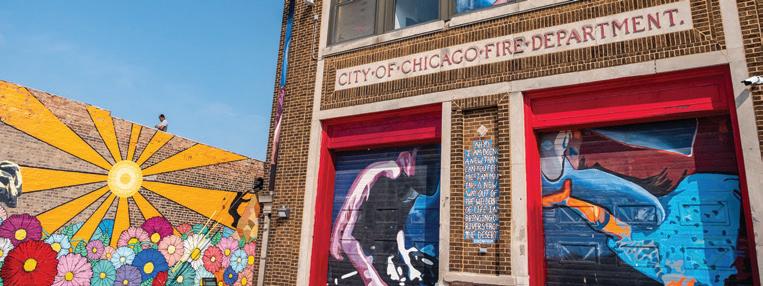

Chicagoans know the names of Jon Burge, Reynaldo Guevera, and Ronald Watts: o cers who tortured and framed countless Chicagoans. Yet how many know the names of the o cers who witnessed and corroborated their reports to help frame innocent people? These men didn’t do this in a vacuum. They had help and protection from other cops. When Van Dyke killed McDonald, he initially claimed the 17-year-old had “aggressively” lunged at him with a knife, and other o cers corroborated his claim on o cial reports.
But dashcam video showed it wasn’t true. Sergeant Stephen Franko and officers Janet Modragon, Daphne Sebastian, and Ricardo Viramontes were fired for allegedly covering up the murder.
When then-Chicago police o cer Jason Van Dyke killed Laquan McDonald in 2014, the fallout prompted thenIllinois attorney general Lisa Madigan to ask the U.S. Department of Justice to launch an investigation of the police department’s use of force. That investigation, the results of which were released in 2017, found “CPD officers engage in a pattern or practice of using force, including deadly force, that is unreasonable.”
In 2019, the department was placed under a federal consent decree that ordered changes to everything from the use of force and foot pursuits to training and o cer mental health.
Four years later, how much progress has been made?
The consent decree’s independent monitor, Maggie Hickey, expressed “significant concerns” in June about the department’s compliance with the decree, noting it was in full compliance with
only 5 percent of its goals. And last year, a report by the Office of the Inspector General found the Chicago Police Department initiated an “overwhelmingly disproportionate” number of police stops of Black people and also subsequent use-of-force incidents. Some 83 percent of such incidents involved a Black person.
Five percent compliance in four years is a slap in the face of McDonald’s family and an insult to the whole city of Chicago. It shows not only that there is resistance to change but opposition to and active defiance of it. The Chicago police want to be free to continue to terrorize Black and Brown citizens.
For years, CPD was essentially lawless. Ocers have routinely used unnecessary and unreasonable force, including deadly force. The evidence is the more than half a billion dollars the city has paid to settle police misconduct lawsuits since 2010.
Department leadership often laments the perception of police officers. Few trust the police anymore—and why should they? Judging from the department’s history, they have every right to fear them.
This is the situation Mayor Brandon Johnson inherited. The mayor is being pressed by activists who want fundamental changes to policing, including cutting the police budget. They want to see these changes implemented faster than the results of the consent decree have been. Homicide clearance rates are a common measure of a department’s e ectiveness at contributing to public safety. Johnson alluded to this in his campaign when he spoke about promoting 200 detectives. This would help an ailing police department to get back on its feet and bring closure to families that really need it.
What, though, can we do about police misconduct?
Quite a bit, if our elected o cials are serious about creating change. I believe there is one power that can almost immediately, fundamentally change the way CPD works: pension forfeiture.
“Pension forfeiture for misconduct is pretty rare,” D. Bruce Johnsen, a George Mason University law professor emeritus, who has studied pension forfeiture specifically for police officers, told CNN after then-officer Derek Chauvin murdered George Floyd in Minneapolis in 2020. “With this terrible tragedy, it might be a good time to push in this direction.”
Police officers tend to be rewarded with some of the most lucrative retirement benefits

of any public-sector employees, allowing them to retire far earlier, and with bigger payouts, than most Americans.
In Illinois, an officer’s pension can be forfeited if they are convicted of a felony. It’s exceedingly rare for Chicago police o cers to be charged with a crime, let alone convicted. This means o cers like the ones who lied in their o cial police reports, and allegedly tried to cover up McDonald’s murder, will still get their pensions.
Then-police chief of Miami Art Acevedo told CNN in 2021 the threat of losing a pension could be a powerful deterrent to bad behavior.
“Imagine if this type of consequence had prevented Officer Chauvin from sitting on George Floyd’s neck for nine minutes and 29 seconds,” Acevedo told CNN. “Imagine if all of a sudden, it clicked in his mind, ‘If something happens to Mr. Floyd, I could lose my retirement.’ . . . If we could avoid one George Floyd, I’m all for it.”
The lawlessness that we see CPD participate in is compounded because o cers who commit misconduct rarely face consequences. As a result, they have no reason not to do whatever they want, to whomever they want.
The mayor and legislators must come together and pass something that will give the mayor or the police superintendent the right to strip officers of their pensions for misconduct.
Furthermore, the money for misconduct settlements should come out of CPD’s budget. Otherwise, it’s the city that ends up paying victims. The CPD budget for 2023 is $1.94 billion; any money paid out in settlements for police misconduct should come out of that. The poor and dispossessed should not have to pay for the misconduct they are victims of.
Tools such as the consent decree are not working. It’s time for Chicago to use new tools and to fundamentally change the way the police conduct themselves. We must get rid of the bad o cers, make misconduct cost them personally, and put the burden of paying for misconduct on the police department. v
Anthony Ehlers is a writer incarcerated at Stateville Correctional Center. Find out more about incarcerated journalists from the Prison Journalism Project (prisonjournalismproject.org).
m letters@chicagoreader.com
The public should not have to subsidize settlements for bad behavior.
“With this terrible tragedy, it might be a good time to push in this direction.”
JP VALERY/UNSPLASH



























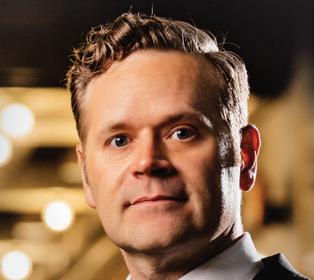































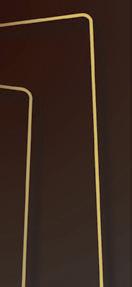












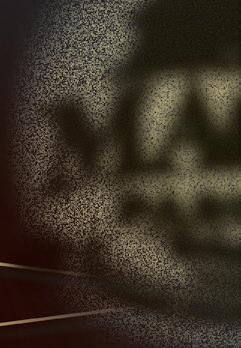
































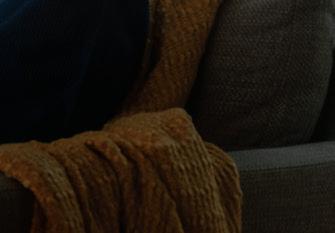









Alzheimer’s disease and related dementias (ADRD) impact people of every walk of life. In 2020, Illinois Lottery launched a new specialty Instant Lottery ticket called The End of Alzheimer’s Begins With Me, designating 100 percent of its profits to the Alzheimer’s Association, Illinois Chapter. To date, the Illinois Lottery has raised more than $3 million to the association’s Alzheimer’s Awareness Fund, which provides care and support services for individuals and families grappling with ADRD as well as education and public outreach programs. This year’s ticket, which was released on September 5, is called Wild Tripler Win. It costs $2 and is available at more than 7,000 Illinois Lottery retailers statewide. With its bright, colorful design, the Wild Tripler Instant Ticket makes a great gi for anyone 18 and over. Visit the Illinois Lottery website for more information about Wild Tripler Win and other specialty tickets, and read on to learn more about ADRD, and the vital work of the Alzheimer’s Association in Illinois and beyond.
“When I share what I do outside of work with friends, family, and strangers in casual settings, people are curious— extremely curious,” Olivia Matongo says. “It’s amazing.”
That’s because Matongo is the vice president of programs at the Alzheimer’s Association, Illinois Chapter. While Alzheimer’s disease and related dementias (ADRD) touch every community, they are o en misunderstood. As the public hungers for more knowledge, the Alzheimer’s Association, Illinois Chapter is ready to fill them in.
Alzheimer’s disease is a debilitating, progressive medical disorder characterized by cognitive impairment due to tau protein deposits and beta-amyloid plaques in the brain. According to the Centers for Disease Control (CDC), an estimated 6.7 million Americans live with Alzheimer’s disease or related dementia (ADRD) in 2023, and they project that number will rise to 14 million by 2060. Though some medical interventions and therapies may help slow its progression, there is no known cure. In January, the Illinois Department of Public Health (IDPH) released their Alzheimer’s Disease Plan, revealing that 230,000 Illinoisians over age 65 lived with Alzheimer’s disease in 2020, which they expect to increase to 260,000 people by 2025. They also reported that in 2021 approximately 383,000 caregivers in Illinois provided upwards of 486 billion hours of care to Illinois residents living with ADRD.
These realities make the work of the Alzheimer’s Association, Illinois Chapter all the more vital. As part of the national Alzheimer’s Association, the organization is leading the way to end Alzheimer’s disease through advocacy, research, risk reduction, and more. On a local level, they support Illinois individuals, families, and caretakers grappling with ADRD, while providing outreach and education services for the greater community. The money
they receive through the Illinois Lottery Specialty Ticket program supports their Alzheimer’s Awareness Fund, which fuels those efforts.
“We are present in 87 counties across the state of Illinois,” says Matongo. “And we have eight points of service, which includes Chicago, Rockford, Joliet, Peoria, Bloomington, Springfield, southern Illinois, and Quincy.”
With her team at the Alzheimer’s Association, Illinois Chapter, Matongo facilitates support groups for patients and caregivers and fosters community through social engagement events—past examples include live music sessions and trips to the Lincoln Park Zoo. They also host conferences and community listening sessions, where they can learn more about the communities they serve and fill in gaps in resources. “It’s such an honor to be in this role and to be able to be helpful to the families and communities that really need us,” she says.
They also provide in-person and virtual educational events tailored to a variety of audiences. “[We work with] anything from huge corporations, to community organizations, to health-care systems, all the way down to being at a library where families are attending,” Matongo says. “So, it’s all groups, and they come in different forms and shapes, but as long as we are reaching as many people as possible, that’s really what matters to us.”
That’s important because despite the prevalence of ADRD, there are a lot of misconceptions about what it looks like and what it means to live with it. That’s partially because complexity of the condition means that no two patient journeys are completely alike. The survival rate
for people 65 and older who are diagnosed averages four to eight years; however some live as long as 20 years. People living with ADRD may also experience a wide variety of symptoms throughout the course of their illness. In the early stages they might include memory loss, mood swings, changes in sleep patterns, and difficulty completing ordinary tasks. As the disease progresses, people may experience difficulty with communication and changes in motor skills, and require assistance with basic daily activities and personal care.

ADRD also disproportionately impacts some communities more than others; Matongo says the rates of Alzheimer’s are 1.5 times higher among Latine Americans and twice as high among Black Americans as they are for white Americans. At the same time, disparities in the health-care industry o en result in delayed diagnoses or insufficient support for those in marginalized communities. “We have to make sure that we’re targeting those communities and raising awareness, because they need it more and are also less likely to seek help,” Matongo says. “It’s important that they know that there are resources available to them.”
Perhaps the most pervasive stereotype about ADRD is that they only afflict the elderly. However, early-onset dementia can be diagnosed in people in their 30s, 40s, and 50s. Early detection is crucial to empower those living with ADRD to play a more active role in their healthcare plans, participate in clinical trials, and access therapies that may help slow the progression of the disease and prolong their quality of life. It also enables those who have been diagnosed to help break stigmas surrounding their illness.
“Literally up until I was diagnosed, if someone had told me I had Alzheimer’s, the first thing that would have popped
one spitting. Brian with
lifelong spent fighter, and when lost Michigan mation While served summer wife next ing Since time Philippines has and with neighborhood, years,”
ting port served visory the
Chapter four Peovariety
In mood completmay changes in activicommunities Alzheimer’s as Amerininsufficient have and also that ADRD is early-onset 40s, livhealththerdisease who surrounding me popped
in my mind is someone who is—not to be rude—but someone who’s wearing a diaper and yelling, and swearing, and spitting. That was my dad. He died of Alzheimer’s,” says Brian Gaughan of Arlington Heights, who was diagnosed with early-onset dementia in 2020 at age 61.
A lifelong learner and former labor organizer who had spent a decade in law enforcement and 23 years as a firefighter, Gaughan was working as a criminal investigator and studying for his ESL teaching certification at night when he realized something was amiss. He’d begun to get lost during his commutes between Ogilvie Station and his Michigan Avenue office, and he struggled to retain information from his courses.
While receiving his diagnosis was devastating, it also served as a reminder to make every day count. By the summer of 2020, Gaughan had quit his job. He and his wife bought a camper and hit the road; they spent the next four months driving across the country and spending time with their eight adult children and their families. Since then, the couple has spent a significant amount of time in Southeast Asia, and have plans to return to the Philippines for a six-month stint. Gaughan says traveling has been good for his condition; he’s o en less anxious and stressed abroad, where he expects to be unfamiliar with his surroundings, than at home. “I get lost in the neighborhood, and I’ve lived in this neighborhood for 15 years,” he says.
He also connected with the Alzheimer’s Association, getting involved with advocacy efforts, participating in support groups, and attending social engagement events. He served as a member of the organization’s Early Stage Advisory Group, during which he gave a keynote speech at the association’s 34th Annual Rita Hayworth Gala. “[Serv-
ing as an advisor] really filled the void that I felt a er I le the workforce, of not having something to be an advocate for and to speak to people about,” he says. “So, it was a really good thing to do.”
Gaughan and his siblings had shared caretaking duties for their father during his illness, which deepened his appreciation for what family members and caregivers endure a er their loved one is diagnosed with ADRD. To that end, he says the Alzheimer’s Association has been a valuable resource for his wife. “Whenever I talk to people who have Alzheimer’s, I tell them ‘As goofy as you think this is from you as a person who has been diagnosed, it’s even harder for your caregiver.’ This is harder on my wife than it is for me.”
“The bulk of the education programs that we have are really in support of the caregiver, helping them navigate things like money matters, living with Alzheimer’s disease, things like that,” Matongo says. “We also have our helpline (1-800-272-3900), where we have master-level clinicians working with families. You can call it 24/7, and can get assistance in 200 different languages.”

Along with purchasing a Wild Tripler Instant ticket from the Illinois Lottery, Illinoisans can support the Alzheimer’s Association by volunteering with the organization, and attending their many programs, events, and fundraisers, which recently included its 17th annual Memory Rock concert at the Old Crow Smokehouse in Wrigleyville.

This fall, the Alzheimer’s Association is partnering with the National Museum of Mexican Art for their Dia De Los Muertos ofrenda exhibit, which runs from September 22 through December 1. Created in collaboration with care-
givers from the community and local artist Gabriel Moreno, the ofrenda will include oral histories, photographs, and more to honor and share the stories of beloved Chicagoans whose lives were touched by ADRD.
And that’s not all. Through October 8, the public is invited to participate in one of their 2023 Walk to End Alzheimer’s events throughout the state, and on November 3, caregivers and professionals can attend their annual research symposium at Northwestern University’s Feinberg Pavilion Conference Center in honor of National Family Caregivers Month.
“People don’t realize that this really can affect you, and if not you, then someone who’s near and dear to you,” Gaughan says. “So this might not be your fight today, but it should be, because it might be your fight tomorrow.”
At the helm of this year’s Chicago Architecture Biennial, the Floating Museum invites us all to be participants.
By ANJULIE RAOIn 2017, a barge drifted along the Chicago River. It wasn’t carrying the usual Ozinga concrete or gravel; instead it floated a museum. Produced by the Floating Museum, an interdisciplinary collective comprised of architect Andrew Schachman, artists Faheem Majeed and Jeremiah Hulsebos-Spofford, and poet avery r. young, the museum barge showcased artwork from dozens of local and national artists. But for those lingering along the Chicago Riverwalk, the barge’s approach was announced by song: every Wednesday night, the group would float up the river, transporting a chorus led by young. For weeks the floating chorus practiced, until its o cial debut at the 2017 Chicago Architecture Biennial (CAB), when crowds arrived to see the barge dock and to “visit” the museum. But what the Floating Museum found wasn’t a crowd of visitors; it was a full-throated public chorale, made up of Chicagoans who had learned the song throughout previous weeks’ rehearsals. Through rehearsal, the public became not observers, but participants.
Today, the Floating Museum has ascended from participants to artistic directors of the 2023 edition of the CAB, which opens September 21. Borrowing from their experience in 2017, they’ve named this year’s biennial theme, “This Is a Rehearsal.” Expanding on their experience transforming public visitors into participants, the team has theorized an entire philosophy around what it means to live in, build, and partake in city life: that everything we do, from building parks and o ces, to walking along the river at dusk, is a rehearsal Cities are not static spaces, despite our use of brick and concrete—materials of permanence. Instead they are open to trial and error, failure, and experimentation. Similar to rehearsing a musical performance, the 2023 CAB will be a testing ground for local organizations to try out new ideas and initiatives, and to explore rehearsal itself as a mechanism for building
civic life.
Producing a biennial as a testing ground goes against what many other art and architecture biennials seek to accomplish; too often biennials exist to declare where a particular field is heading, or to take the temperature of the most prominent ideas and practitioners in those fields. What ends up being produced, Schachman said, is a manifesto, something the Floating Museum views skeptically.
“Instead of thinking what a biennial could say, or proclaim, it seemed more interesting to think about what a biennial could do as a relational machine, as a way to think together, a kind of feedback loop for an entire region, or city, or discipline,” he said. “Pretending like we have answers to things that we don’t have answers to—especially now, there’s so much ecological, political, economic uncertainty—it would be foolish to start making proclamations.”
The team has assembled 80 international participants—artists, architects, performers, and more—who will work with local organizations and individuals to respond to the theme in neighborhoods across the city. One example cited by the team comes from the Urban Growers Collective, a Black- and women-run nonprofit farm on the south side, which will be paired with the Living, a New York-based research and design practice. The Living has been experimenting with using biodegradable materials like agricultural waste and mycelium “glue” to construct structures—an apt pairing for Urban Growers Collective which, according to Majeed, is looking to build a pavilion to host an upcoming artist residency. These strategic pairings are designed to be responsive to community or organizational needs. Rather than existing as temporary installations that come down after the biennial ends, they are designed for long-term use as a means to test out these responses. Young called this a “revolutionary” shift from
commission to conversation; these interventions are designed to be useful to those communities. Failure and recalibration will be embraced as opportunities. This is not a typical ethos found in architecture and urban planning—in those fields, strategies originate from top-down authorities and manifest literally in concrete. But, Majeed said, these too are in some ways rehearsals.
“If you step back, cities are being built and they’re being torn down. The mayor comes in, does INVEST South/West, and then the next mayor comes in with another initiative, and the next, and so on,” he explained. “They may put on this show, like, ‘We have all the answers.’ But in four years, we’re gonna have a di erent initiative. It’s that pragmatic aspect of what we’re talking about. It’s like, let’s call that out and leverage it as a strength versus a failure or flaw.”
Reconsidering city-making as a state of rehearsal could inform new methods and strategies for grappling with what role the biennial could play in the Chicagos yet-to-be. It’s a di erent philosophy from past editions— from the inaugural 2015, “The State of the Art of Architecture,” and its bold proclamations claiming to put a pin in the field and practice of architecture, to the recent 2021 edition, “The Available City,” which spotlighted the city’s plentiful and questionably available vacant land. CAB 5 will also take on a di erent format. Unlike past years, the festival will ocially “open” on September 21 to Chicagoans, launching programs and unveiling installations; it won’t open nationally to press and visitors until November 2.
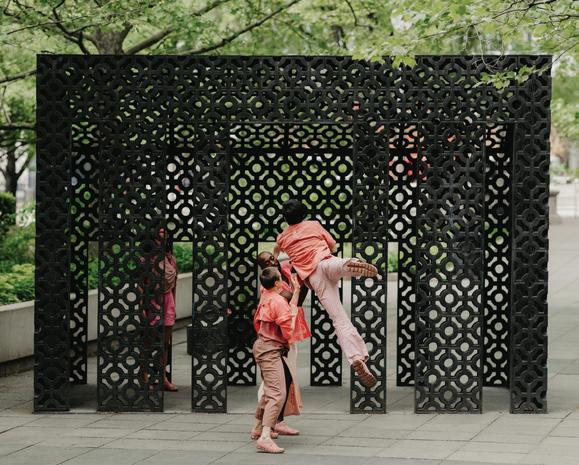
CAB 5 will also return to the Chicago Cultural Center after taking a short hiatus from having a downtown presence in 2021. There, visitors can expect a range of exhibitions that deal directly with rehearsal itself. Production designer Ruth De Jong, who leads set design for Jordan Peele, will create an installation related to her work on Peele’s Nope. There will also be installations by visual artist Andrea Carlson, who will present an installation that speaks to what Schachman called “the long history of the land.” Each floor will feature practitioners who reckon with rehearsal through history, performance, landscape, capitalism, and more.
The vision for “This Is a Rehearsal” promises to unlock the layered complexities of living in and building cities that are overlooked in the search for “solutions.” The artistic team, instead, wants us to consider imagination— how residents and city officials alike might imagine and experiment with the city itself. Young wants to see train cars become concert venues—a “concert on the way to a concert,” he exclaimed. We can imagine rebellious uses for alleyways as night markets or art galleries, viaducts as stages for performances—interventions that capture what Chicago is in this precise moment. There is playfulness and possibility at the heart of rehearsal, and when CAB 5 opens in just a few short weeks, Chicagoans should again join the chorus with their own strategies to practice just what it means to inhabit, play, and assert their place in the city. v






The artist’s ceramic figures are meant to embody the essence of Black and Brown youth.
 BY BOUTAYNA CHOKRANE
BY BOUTAYNA CHOKRANE
In the care of a collector in Miami, Sydnie Jimenez’s self-portrait stands tall, immortalizing her and her twin sister, Haylie, in a side-by-side embrace. “The person who bought it is also a twin,” the 25-year-old says. Reaching about four feet in height, the sculpture emanates a sweet and soothing presence. Haylie’s clay fingernails and toenails are painted glossy black, in contrast to Sydnie’s vibrant crimson ones. Both sisters don two-piece ensembles, lovingly baring their skin for all to see. “My sister is a tattoo artist, and she drew all of our tattoos,” Sydnie says proudly. This self-portrait—self-expression as a tool of protest—mirrors her profound connection to her identity.
Family is an anchor for Jimenez, and Haylie has been a constant source of support. “Sometimes family can be di cult but they can also be there for you and hold you up,” she says. “Not everybody has that, and I cherish it a lot.”
Born in Orlando, Florida, and raised in Rossville, Georgia, Jimenez’s multicultural background—as the child of a Dominican father and white mother—is etched into her art. Growing up in rural Georgia, she found herself questioning her single mother’s perspective on race. “My mom was like, ‘Your dad wasn’t Black, he was Dominican,’” Jimenez recalls. “Dominican is an ethnicity, that’s not a race.” She adds:
“I came to the realization that race is a construct. I’m learning about the Dominican Republic and the racial mixing there. It was one of the first stops of the transatlantic slave trade, so enslaved Africans were there. The Taíno population was there, which is the In-
digenous population, and then the Spaniards came. So Dominicans are kind of a mix of all of them. But also, I learned that I’m Black because that is how Americans treat me—because of how I look, my facial features, and my skin color.”
Jimenez’s artistic journey began with an ordinary childhood pastime: “All kids draw, and I just kept drawing.” She and her twin attended the School of the Art Institute of Chicago. During her time there, she discovered her passion for ceramics, a choice partly motivated by practicality. “I was a broke college student paying for all these materials, and one of my TAs was like, ‘You should sign up for a ceramics class because all of those materials are free.’”
The Art Institute of Chicago and its rich Mesoamerican and African art collection were a boundless source of inspiration for Jimenez. “When people think of sculptures, they think it’s Greek or Roman, and that’s not very inclusive,” she says. Ceramicists like En Iwamura and Natalia Arbelaez, along with comics and animation, also deeply influenced her work.
Each of Jimenez’s sculptures possess a unique persona, expressing themselves through attire and demeanor, channeling the queer punk and metal scene, Internet subcultures, and hypebeast aesthetics. Together they form a resilient community, balancing defiance with vulnerability, and celebrating the power of the individual and the collective. As Jimenez intends, they’re an embodiment of the essence of Black and Brown youth.
With their cartoonish and emotive features, her sculptures exude a childlike spirit. They’re deliberately racially ambiguous and meant to transcend the confines of gender, countering the historical erasure of non-white cultures. In doing so, they underscore the urgency of representing Black and Brown bodies in figurative art.





They’re also political statements, challenging Eurocentric ideals that dictate how we perceive people of color and their self-concep-
tion in relation to whiteness. “They’re all individuals, and I think that’s important,” Jimenez says about her figures. “It’s a form of control to di erentiate yourself. But at the same time, you can have similarities with people.”
Jimenez’s exhibition “How Aweful Goodness Is” at the Mindy Solomon Gallery in Miami explored the complexities of “goodness” and “righteousness,” concepts often weaponized against marginalized people. One of her figures, Maria, stands four feet tall, plunging a sword into the ground. She sports a striped zip-up, a midi skirt, sneakers, and frilly white socks. Tears of blood appear to rush down her face, and a tattoo on her forehead reads, “Blessed.”
“Some say Mary, the mother of God, is a protector of women and that her wrath is something to behold,” Jimenez writes in her Instagram caption of a photo of the piece. “Instead of a glorified womb and symbol of humble purity, I see her more like an avenging angel.”
Jimenez’s creative process flows organically, “depending on what music I’m listening to, or how I’m feeling, or what I’m thinking about,” she says. “I get more emotional with figurative work.” Lately, she’s been listening to rap, metal, and rock music, with artists like Young Thug, Type O Negative, and Slipknot fueling her creativity.
Working with clay allows Jimenez to visualize her creations from all angles, a process she describes as second nature. “My brain is just wired to 3D now. I don’t know how to render in 2D anymore,” she says. “The only planning I do is, ‘I’m going to make this figure.’ I start with the shoes, and I use coils, so I build up that way.”
Massachusetts. “Worrying about money is tures, so I don’t really make cups that much
After her graduation in 2020, Jimenez planned to visit the Dominican Republic, seeking art and a deeper bond to her roots. But the pandemic put those plans on hold. With the support of a grant, Jimenez secured a studio space in Pilsen, dedicating a year to creating art for her debut solo exhibition, “Skirts and Hoodies,” at Lucy Lacoste Gallery in Concord, Massachusetts. “Worrying about money is a real thing, so when I first started, I would make cups,” Jimenez says. “That would be my main income to fund the sculpture practice I was doing. Then people started buying sculptures, so I don’t really make cups that much anymore.”
As she settles into Chicago, Jimenez is excited to connect with fellow artists and expand her teaching experience. An upcoming show at the Charlie James Gallery in Los Angeles this November, alongside her sister’s work, promises to be another milestone. She also plans to showcase her work at Miami Beach’s Untitled Art Fair. “Something I really want to do is make large-scale public art,” she says.
This pivotal period led to a two-year residency at the Archie Bray Foundation in Helena, Montana. Now back in Chicago’s art scene, she’s embarking on a yearlong residency at the Lillstreet Art Center in Ravenswood.
dency at the Archie Bray Foundation in Helena, Montana. Now back in Chicago’s art scene,
As a teacher, Jimenez offers a somewhat ironic piece of advice for emerging artists: don’t always listen to your professors. “It’s just their opinion, they’re just people, and they’re also artists with their own taste, so make what you want.” Also, “You don’t have to go to art school to be a professional artist. You just have to make work.”
Which is to say God lacks a steady hand when sketching which is to say my father gave me his nose my mama a gallery of ghosts which is to say I used to heel turn when they speak which is to say she praised the Lord none of her children quartered illness her tenant in childhood which is to say some fears can’t let go like a mother who can’t name what haunts her baby boy which is to say my mama will wedge prayer between me and my undoing which is to say I learned to listen to my dead grannies when they perch in my dreams which is to say I know how to love my daughter from the peripheral to soothe the shudder when another toddler shoves her and she can’t understand some gestures knuckle lessons into our teeth and generosity which is to say my mama said beat they ass
By Quintin Collinsif they puts hands on you which is to say I never did which is to say I wish my kid doesn’t have to inherit a cache of punches I withheld as she grows which is to say my doctor assures the heritability of colitis is negligible but everyone says my genes are strong says I can’t deny my baby with that smirk which is to say I see my daddy’s nose cut above her smile after I dull life’s latest chisel against her being everything un-exorcised when my mama says she wishes I confessed how deep my suffering mounted to bone which is to say my roots lack reconciliation with the violence
God smudged on my sketch which is to acknowledge I tremble pencil in my hand to drag a line a curve to stencil an image for my daughter erase repeat erase repeat repent which is to say I can’t draw past self-portraits that bear a closed fist at the core
Quintin Collins (he/him) is a writer, Solstice MFA Program assistant director, and a poetry editor for Salamander. His work appears in various publications, and his first poetry collection is The Dandelion Speaks of Survival. His second collection is Claim Tickets for Stolen People, winner of the Charles B. Wheeler Prize and a BCALA Literary Award honor book.
Poem curated by Cortney Lamar Charleston. Cortney Lamar Charleston, originally from the Chicago suburbs, is a Cave Canem fellow and the author of Telepathologies (Saturnalia Books, 2017) and Doppelgangbanger (Haymarket Books, 2021). He serves as a poetry editor at The Rumpus and on the editorial board at Alice James Books.
A biweekly series curated by the Chicago Reader and sponsored by the Poetry Foundation.





Hours
Wednesday & Friday: 11:00 AM–5:00 PM
Thursday: 11:00 AM–7:00 PM
Saturday: 10:00 AM–5:00 PM
Poetry Off the Shelf: Ben Okri
Thursday, September 28
7 pm CT
Join us for a special US appearance by acclaimed Nigerian-born British novelist and poet, Ben Okri.
Benji Hart: World After This One
Saturday, September 30

2 pm CT
Join us for a workshop production of Chicago

Dancemakers Forum 2023 Lab Artist Benji Hart’s solo performance.
Learn more at PoetryFoundation.org
Our picks for must-see exhibitions
With shorter days and a slight chill in the air comes the fall art season, and 2023 has a bounty of cultural o erings. Launching this season is the first-ever Chicago Exhibition Weekend, presented by Expo Chicago and cultural agency Gertie, taking place September 29 through October 1. The event is aimed at getting more people out to the dozens of visual arts institutions we have throughout the city, from the South Side Community Art Center in Bronzeville to the Hyde Park Art Center to a bevy of galleries in West Town and our hub of museums in the Loop, and many more in between. Many sites are staging activations alongside their openings, from artist talks to tennis matches—be sure to check their website (www.cxw23.co) for the full schedule. And all offerings, with the exception of the Art Institute and the MCA, are free of charge. In addition to CXW, here are seven more recommendations of art exhibitions to check out this season.
—KERRY CARDOZAThe brilliant sculptures of Camille Claudel return to Chicago.
Like many brilliant women artists, Camille Claudel’s life has o en overshadowed her work. Her relationship with fellow sculptor Auguste Rodin and her long, forced institutionalization later in life have been portrayed onstage and film and in music and books. But her works! Viewing her lifelike sculptures, in terracotta, plaster, bronze, and stone, depicting busts and real-life and allegorical scenes, is a rare delight. Her Torso of a Crouching Woman, though headless and missing pieces, looks as though it might start to breathe. And her well-known The Waltz is a masterful depiction of a couple midstep. Working at a time when there were few women sculptors, it’s no surprise that a contemporary critic described her as “a revolt of nature: a woman genius.”
This exhibition, which will travel to the Getty Museum next year, is the first U.S. show on Claudel in nearly 20 years. Indeed, the show is meant to, in part, bolster the French artist’s renown stateside, where less than ten of her works are held in museum collections. Claudel’s reintroduction to the U.S. taking place in Chicago could not be more apt; her work was first shown in this country 130 years ago, at our city’s 1893 World’s Columbian Exposition. She deserves a warm welcome. —KERRY
CARDOZA “Camille Claudel” 10/7/23-2/19/24: Mon 11 AM-5 PM, Thu 11 AM-8 PM, Fri-Sun 11 AM-5 PM; Art Institute of Chicago, 111 S. Michigan, artic.edu, adults $32 ($40 Fast Pass, $27 Illinois residents, $20 Chicago residents), seniors 65+, students, and teens 14-17 $26 ($34 Fast Pass, $21 Illinois residents, $14 Chicago residents), children and under 14 and Chicago teens 14-17 free
The work of painter and printmaker Rafael Tufiño comes to the National Museum of Puerto Rican Arts & Culture.
Rafael Tufiño is kind of a big deal. In his lifetime, the painter and printmaker was known in Puerto Rican communities as the “Painter of the People,” and he’s still a highly regarded cultural figure. Trained in the history, style, and techniques of artists such as Diego Rivera, José Clemente Orozco, and Taller de Gráfica Popular (People’s Graphics Workshop), he borrowed from a Mexican tradition of populism to describe Puerto Rican history, life, and ideas, particularly for Puerto Rican audiences. Now, his work is part of museum collections such as MoMA, the Met, and Galería Nacional.
In this retrospective, 39 paintings, drawings, and prints—most never shown in the continental United States—capture the breadth of his work. Tufiño worked at a time when there was robust government and private funding for public works, and developing a visual language for Boricua identity—through narrative, style, image, and color—was a broad cultural priority. Represented are recurring aesthetic fascinations, like motion, as much as central themes, like collaboration.
“Celebrating 100 Years of Rafael Tufiño” is a must-see for anyone excited by muralism, wheatpasting, block printing, Latine history, or modern art—and in keeping with Tufiño’s values of accessibility, it’s a museum show that’s free. —MICCO CAPORALE “Celebrating 100 Years of Rafael Tufiño” Through 8/24: Tue-Fri 10 AM-5 PM and Sat 10 AM-2 PM, National Museum of Puerto Rican Arts & Culture, 3015 W. Division, nmprac.org, free
Viennese art collective Gelitin invite you to be part of the sculpture.
Gelatin: it’s very cheap, and silly willies love its ability to assume endless shapes and colors while maintaining a deliciously whimsical bounce. No wonder a humanist and play-oriented collective from Vienna owes its namesake to the food (and toyed with its spelling). Gelitin was founded in 1993 by longtime friends Ali Janka, Florian Reither, Tobias Urban, and Wolfgang Gantner. For their populist, free-spirited interventions, the group has become renowned in the world of relational aesthetics—a contemporary art movement where artists are aesthetic facilitators of experiences that make viewers into participants in ways that challenge their relationships to the world.
Gelitin makes its Chicago debut at the Neubauer Collegium Gallery with “Democratic Sculpture 7.” It’s a giant piece of New York-style pizza made mostly from used clothes with five holes where toppings would be for people to poke their heads through. In doing this, observers become part of the pizza, inviting them to consider how pizza is a uniquely human way of feeding ourselves as much as clothes are a uniquely human way of marking ourselves. But also . . . you’re putting your head through a pizza made of clothes, presumably with others (strangers?). That’s pretty “hee-hee.” Don’t overthink it—or do! Deeper conversations and having fun can coexist. Your relationship to the materials and the object is up to you. Isn’t it fun to make things for people? Isn’t it fun to be people making things? “Democratic Sculpture 7” is a perfect introduction to what these intellectual jokers are about. —MICCO CAPORALE “Gelitin: Democratic Sculpture 7” 9/23/23-1/12/24: Mon-Fri
9 AM-4 PM, Neubauer Collegium Gallery, 5701 S. Woodlawn, neubauercollegium.uchicago.edu/exhibitions/gelitin-pizza-peace
Bassim Al-Shaker uses a digital aesthetic to portray the Iraq War.
In 2003, painter Bassim Al-Shaker was living in Iraq when then-President George W. Bush decided to go
jingo on the country. It’s an experience many Americans, like myself, understand only at a distant remove mediated by television and computers—–a thing we can intellectualize as very real and tragic but that we’ve only witnessed on a screen, allowing us to exercise a certain detachment. Al-Shaker experienced it firsthand. In his new solo exhibition “Four Minutes,” he uses sumptuous oils to attempt to distill his experience into frames on canvases but with his own remove: time.
Warm, lush colors and explosive streaks give the images a firework-like quality, while the compositions border on something AI-generated. But they’re not; they exist like the escapist or worldbuilding potential of a video game while retaining all the evidence of a human’s touch, including the ethereal glow of oils that even the best inkjet couldn’t capture. Al-Shaker describes his emotional experience of the bombing by appropriating a digital aesthetic in a very human way, articulating something both physically and emotionally specific while using qualities only paint has. “Four Minutes” are the works of a paint lover living in a digital world as much as they are dispatches from a warm, open human who survived—like the “Firework” described by the great poet Katy Perry. —MICCO CAPORALE “ Four Minutes” Through 10/21: Tue-Fri 10 AM-5 PM, Sat 11 AM-5 PM, Rhona Hoffman Gallery, 1711 W. Chicago, rhoffmangallery.com/exhibitions/bassim-al-shaker
Dala Nasser brings the Adonis River to the Renaissance Society.
For her first institutional solo exhibition, Lebanese artist Dala Nasser will stage a re-creation of sorts of the Adonis temple, the cave where Adonis was said to be killed, and its surroundings. In Greek mythology, Adonis—the mortal lover of Aphrodite—was killed by a wild boar near the body of water, now known as the Abraham River in Lebanon. Some versions of the myth describe anemones growing in the places where his blood was shed; legend has it that the river ran red each year during the festival of Adonis, hosted annually to commemorate his death.
Taking over the Renaissance Society’s gallery space, Nasser will configure fabrics dyed with the reddish clay of the Abraham River and washed in its water. On the



fabric are paintings made inside the Adonis cave. In her work, Nasser, who o en comingles disciplines, is interested in making direct contact with land, drawing attention to both the materiality of the work and the political and environmental degradation of the location. Curated by Ren executive director Myriam Ben Salah, the immersive installation surely needs to be experienced in person.
why) requires carefully studying the images. This show is an exercise in visual meditation that’s sure to raise questions about lifestyle, loss, and where wealthy Americans’ homes sit within the narrative of western expansion.


—KERRY CARDOZA “Dala Nasser: Adonis River”
Through 11/26: Wed and Fri noon-6 PM, Thu noon-7 PM, Sat-Sun 10 AM-6 PM, Renaissance Society, 5811 S. Ellis, Cobb Hall, 4th Fl., renaissancesociety.org/ exhibitions/553/dala-nasser-adonis-river
Artist Judy Fiskin’s haunting images of real estate for sale

In “The Way We Live Now,” Chicago-born photographer Judy Fiskin appropriates and augments images of expensive homes from real estate websites to underscore the isolating qualities of capitalism, including the increasing dissolve between public and private life.
Fiskin came of age as an artist in the 1970s in southern California, where, among other things, she was codirector of Womanspace Gallery during a time when feminist art championed reflections on the politics of the domestic sphere. This is the eye she brings to her snapshots of homes for sale during late-stage capitalism.
From opulent fixtures to eccentric staging, the images provide a quiet window into the specifics of wealth while capturing a sweeping sense of loneliness. Some of this owes to the artist’s intervention, and some of it is inherent to the spaces and how they’re staged and lit for a digital audience of would-be buyers and voyeurs. Identifying when it’s the former vs. the latter (and
—MICCO CAPORALE “Judy Fiskin: The Way We Live Now” 9/24-11/19: open by appointment only, email thewaves@ruschwoman.blue, Ruschwoman, 2100 S. Marshall, Unit 105, ruschwoman.blue
New sculptural works by Sanford Biggers stretch across time.
For Sanford Biggers’s fourth solo show with Monique Meloche Gallery, the New York-based artist will show new marble works and three-dimensional quilt sculptures. In his work, Biggers takes historical art forms and delves into their materiality and social context—bringing new energy to formal structures.
In his Chimera series, Biggers draws attention to the historical erasure of sculptures’ contexts—from the tradition of polychromy (wherein classical Greek and Roman sculptures, which we typically associate as purely white, were originally multicolored) to the “blackwashing” of African art objects. For this series, the artist will show two new hand-painted marble busts. As part of Biggers’s ongoing Codex series, the artist will show a new largescale quilt sculpture, wherein he stretches geometric fabric across wooden frames. The resulting pieces are origami-like in execution, as seen in his last solo presentation at the gallery, 2018’s “New Work.” —KERRY CARDOZA “Back to the Stars” Through 10/28: TueSat 11 AM-6 PM, Monique Meloche Gallery, 451 N. Paulina, moniquemeloche.com/exhibitions/214-sanford-biggers-back-to-the-stars

 By ALBERT WILLIAMS
By ALBERT WILLIAMS
Because Chicago is so well known for its “Magnificent Mile” retail district— North Michigan Avenue between Oak Street and the Chicago River—it’s all too easy to overlook, or take for granted, the importance of what can be called the city’s cultural corridor: Michigan Avenue stretching south from the river to Roosevelt Road. What an extraordinary array of arts institutions and attractions inhabit this one-anda-half-mile strip! On the east side of the boulevard are Millennium Park and Grant Park, with their plaza and public artworks, such as Cloud Gate and Crown Fountain, as well as the Harris Theater, the Jay Pritzker Pavilion, and the Art Institute of Chicago. And on the west side of Michigan Avenue are some of the city’s landmark arts venues, including the Chicago Cultural Center, the nation’s first free municipal cultural center (built in 1897 as the central public library); Symphony Center, home of the Chicago Symphony Orchestra (dating from 1904, extensively renovated in the 1990s); and the grand 1889 Auditorium Theatre. The Michigan cultural corridor also houses several smaller institutions, among them the Amer-
ican Writers Museum, the Design Museum of Chicago, and the Pritzker Military Museum & Library, as well as performing and visual arts spaces operated by Roosevelt University, DePaul University, Columbia College Chicago, and other schools.
And then there’s the Fine Arts Building, arguably the city’s premier commercial, public, and multidisciplinary arts center. Founded in 1898, the ten-story venue—located at 410 S. Michigan (between Van Buren Street and Ida B. Wells Drive)—is home to the 650-seat Studebaker Theater as well as to dozens of shops and studios devoted to the arts. Under one roof are teachers of vocal and instrumental music, galleries and studios occupied by visual artists and craftspeople, the o ces of arts organizations, and sellers of books, sheet music, and musical instruments.
To mark its milestone 125th anniversary, the Fine Arts Building hosts a free public celebration on Friday, October 13, from 5 to 9 PM—an expanded edition of its monthly “Second Friday” open house events. Buoyed by a proclamation from Mayor Brandon Johnson declaring the date as “Fine Arts Building
Day in Chicago,” the event will feature family-friendly programming throughout the venue. Visitors can sample refreshments, enjoy performances and hands-on creative activities, and mingle with the artists and craftspeople who call the building their professional home. Participating tenants include the Chicago Human Rhythm Project dance and music school, the Chicago International Puppet Theater Festival, the Jazz Institute of Chicago, the Chicago Youth Symphony Orchestras, Chicago Opera Theater, the 2nd Floor Art Gallery featuring artist Don Yang, and Exile in Bookville bookstore.
A high point of the evening will be a free concert in the Studebaker Theater by pianist Yulia Lipmanovich, who will recreate part of the original recital program that opened the Studebaker on September 28, 1898, when Fannie Bloomfield Zeisler performed Beethoven’s “Pathetique” sonata and selections by Schubert, Chopin, and Liszt. (Advance registration for the 7:30 PM concert is recommended by visiting fineartsbuilding.com/ events/125.) Lipmanovich is one of the many music teachers who operates a studio in the
building, which from its opening has been one of the Chicago area’s premier locations for private lessons in vocal and instrumental music. (Full disclosure: I took piano lessons there as a child, and as a teenager I performed in Curtiss Hall with the Sulie and Pearl Harand youth theater.)
I asked Erica Berger, proprietor of Berger Realty Group, which acquired the building in 2014, why her company has chosen to invest in elevating the venue’s profile as an arts center rather than converting it to other uses. Her response was a refreshing change from the cries of “OMG THEATER IS DYING!” we’ve been hearing lately:
“My father taught me the power of restoring and maintaining old buildings, and he was always in love with the Fine Arts Building,” Berger said in an email. “He and Berger Realty Group started experimenting in the Studebaker Theater in 2016, and saw a real desire from presenting groups and performers to reactivate the space. In 2019, we had a very meaningful potential tenant in public media approach us—dear to both my father and me— and we decided to go for the full renovation. Admittedly, we didn’t know the full extent of what we were getting into.”
Without operating under the auspices of a governmental entity or educational institution, the Fine Arts Building lives up to its brand as “Chicago’s cultural hub”: a thriving center for artists and arts students in all disciplines. It’s also a space of enormous historic significance: for more than a century, the building has embodied Chicago’s identity as the United States’s midcontinental cultural capital.
Not bad for a building that began life in 1885 as the home of the Studebaker Carriage Company’s buggy factory. (Founded in 1852 as a blacksmith shop in South Bend, Indiana, the Studebaker family firm began manufacturing horse-drawn wagons—filling orders for the Union army during the Civil War—and then added carriages to their output before eventually transitioning to automobiles.) The Studebaker building, which opened in 1887, was designed by architect Solon S. Beman, a New Yorker who had moved to Chicago in 1879 to create the houses of Pullman, a small company town just south of Chicago that was built for workers in George Pullman’s railroad-car
OR, BEHIND EVERY GREAT DUMBASS ARE SEVEN WOMEN TRYING TO KEEP HIM ALIVE
By SELINA FILLINGERDirected by ensemble member
AUDREYFRANCIS
Featuring ensemble members
Celeste M. Cooper, Sandra Marquez, Caroline Ne and Karen Rodriguez
A laugh-out-loud look at the women in charge of the man in charge
NOW THROUGH NOV 18



Directed by STEPH PAUL
A hopeful and harrowing tale of immigration and young love from the Pulitzer Prize-winning playwright of Cost of Living
TICKETS START AT $20 $15 FOR STUDENTS steppenwolf.org
312-335-1650
OR GET THE RED CARD: Under 30? RED = 6 ticket credits for $99.












TICKETS START AT $20 $15 FOR STUDENTS steppenwolf.org
312-335-1650

OR GET A BLACK CARD: Six Discount Tickets (up to 50% o ) to use however you want


factory. (The town was annexed by Chicago in 1899 and is now an o cial national historical park.) Beman designed the structure’s facade in the Romanesque style, prominently employing rounded arches and large windows in the lower floors, which were originally used as showrooms for carriages.
Within a decade, business was so good that the Studebakers decided to move into a larger plant. Fortunately, they decided to retain ownership of the Michigan Avenue building and hired Beman to renovate it. His changes added two upper floors, creating the ten-story edifice that stands today. The renamed Fine Arts Building opened in 1898 under the management of Charles Curtiss, a music-business entrepreneur and friend of the Studebaker family. Curtiss—whose legacy is honored in the top-floor concert space, Curtiss Hall—envisioned the repurposed venue not just for musical performances, but for all the arts. The Fine Arts Building—designated as a historic Chicago landmark in 1978—has been a center of theater, music, dance, the visual and plastic arts, and literature ever since.
Located where the Studebaker Carriage Company’s carriage showroom once sat, the Studebaker Theater opened as a venue for classical music, opera, vaudeville, and “legit” theater. (In 1910, legendary French actress Sarah Bernhardt starred there in one of her several American “farewell tours.”) In 1917, the venue underwent a major reconstruction— though the original 1898 ceiling survived and endures to this day. In the 1930s and ’40s it hosted celebrity tours by such stars as Ethel Barrymore in Emlyn Williams’s The Corn Is Green and Mae West in her own play Catherine Was Great
In the 1950s, after serving briefly as a studio for NBC, it was home to the short-lived Studebaker Theatre Company led by producer Bernard Sahlins, later cofounder and longtime producer of the Second City comedy theater. Productions by Sahlins’s company included André Gide’s The Immoralist with Geraldine Page and Beckett’s Waiting for Godot with the young Mike Nichols. The Studebaker returned to hosting touring productions throughout the 1960s and ’70s, such as the Chicago premiere of Harold Pinter’s controversial The Homecoming, performed by the Royal Shakespeare Company with American guest star Carolyn Jones (of TV’s The Addams Family ), as well as the 1972 Chicago premiere of Godspell starring rising young Chicago performer Joe Mantegna.
artist J.C. Leyendecker, the gay German immigrant who helped define America’s idealized image of elegant yet rugged masculinity with his “Arrow Collar Man” shirt ads; sculptor Lorado Taft; political cartoonist John T. McCutcheon; and artist William Wallace Denslow, famed for his original illustrations for Chicago writer L. Frank Baum’s 1900 The Wonderful Wizard of Oz
The building is also identified by some as the birthplace of the “Little Theatre” movement that paved the way for American regional theater in the 20th century. In 1912, the Chicago Little Theatre opened in a converted storage area at the rear of the fourth floor under the leadership of Chicago actress Ellen Van Volkenburg and her British-born husband, playwright-director Maurice Browne. Over a five-year period, the Little Theatre o ered productions of plays by George Bernard Shaw, John Millington Synge, W.B. Yeats, August Strindberg, and Henrik Ibsen—radical writers of the modern drama—as well as an acclaimed staging of Euripides’s tragedy The Trojan Women, which went on tour.
House, and Harriet Monroe, founder of Poetry magazine—still publishing today—which introduced readers to the work of Gertrude Stein, T.S. Eliot, Langston Hughes, and others. The building is also the original home of one of the world’s most influential literary publications, the avant-garde Little Review, edited by Margaret Anderson and her lover, Jane Heap. Founded in 1914, the magazine published work by anarchist Emma Goldman and poet Ezra Pound before relocating to New York City and eventually Paris; it’s best remembered for introducing American readers to James Joyce’s groundbreaking novel Ulysses , which was partly serialized in its pages—until Anderson and Heap were found guilty of distributing obscene materials through the U.S. mail in a landmark trial.
All this history and much more is chronicled in depth through exhibits and plaques throughout the building, which can be visited during the October 13 event—or any time.
In 1982, the Studebaker was converted into the multiplex Fine Arts movie theaters. But after the cinemas closed in 2000, the space sat empty until 2014, when the building’s new—and current—owners, Berger Realty, undertook a restoration. After hosting occasional live performances for five years, the Studebaker underwent a major renovation that included the installation of new seating and state-of-the-art lighting and sound systems. Since reopening last year, the theater has featured performances by Chicago Opera Theater, the Chicago International Puppet Theater Festival, the Chicago Jazz Orchestra, and Chicago Repertory Ballet, as well as recent runs of the musicals Personality: The Lloyd Price Musical and Skates . National Public Radio’s popular comedy news quiz show Wait Wait . . . Don’t Tell Me!, hosted by Peter Sagal with Bill Kurtis, is recorded there on most Thursday nights. Upcoming productions at the Studebaker include a Porchlight Music Theatre concert version of Stephen Sondheim’s Sunday in the Park With George next May.
The Fine Arts Building is also uniquely reflective of Chicago’s history as a center of both commerce and culture. Among those who occupied studios in the building during its early years were architect Frank Lloyd Wright, who not only maintained an office there but designed several interior spaces; commercial
The company closed in 1917, burdened with financial debt as its already small audience dwindled further with the onset of World War I. But the Chicago Little Theatre left a lasting legacy as an early pioneer in America’s “art theater” movement that paved the way for such companies as the fabled Provincetown Players (founded in 1915 in Provincetown, Massachusetts), which launched the career of playwright Eugene O’Neill, among others.
As scholar Shannon Epplett notes in his essay “All Passes – Art Alone Endures”—published in the 2021 Northwestern University Press anthology Makeshift Chicago Stages: A Century of Theater and Performance —“the Chicago Little Theatre created the template for O -Loop theater production through their use of converted space and their innovation in terms of production design within the confines of their small space and budget.” Adds Epplett: “A new approach to theater production emerged amid the marble tile and art nouveau embellishments of the Fine Arts Building, an approach that influenced a nationwide Little Theatre movement but also became the prototype for alternative theater production in Chicago.”
The Chicago Little Theatre also inspired the creation of the Little Room, a social organization of artists and art supporters who met regularly for parties and performances at the Fine Arts Building. The club’s members included Jane Addams, cofounder of Hull

In 2019, Berger Realty Group hired Jacob Harvey—the onetime producing artistic director for the Greenhouse Theater Center and then a producer for Cirque du Soleil in California—to come back to Chicago as the building’s managing artistic director.
“When I got involved in the day-to-day of the project in 2020, I spent months talking to friends in the theater world, and quickly realized that we needed to treat the theater as a fully operable business,” Erica Berger explained in her email. “This made sense not only from the business perspective, but from the cultural perspective, as we had to reimagine where we would fit in the Chicago theater world. Jacob and I have both lived in Chicago, LA, and New York, so I was happy to hire someone who spoke the same cultural languages, per se.
“Jacob and his team, and the renewed building management team, have done an incredible job at bringing the building to a new life by honoring the past, present, and future. It feels like a living and breathing museum and cultural space, which speaks to me personally as an artist and traveler. I understand the capacity for these shared spaces to connect people and energy, and am proud of what we have done and will continue to do with the Fine Arts Building. . . . How lucky are we that we have such an iconic and beautiful old building that we can maintain and continue to operate? Who knows what the future will bring, but 125 is feeling very good.”
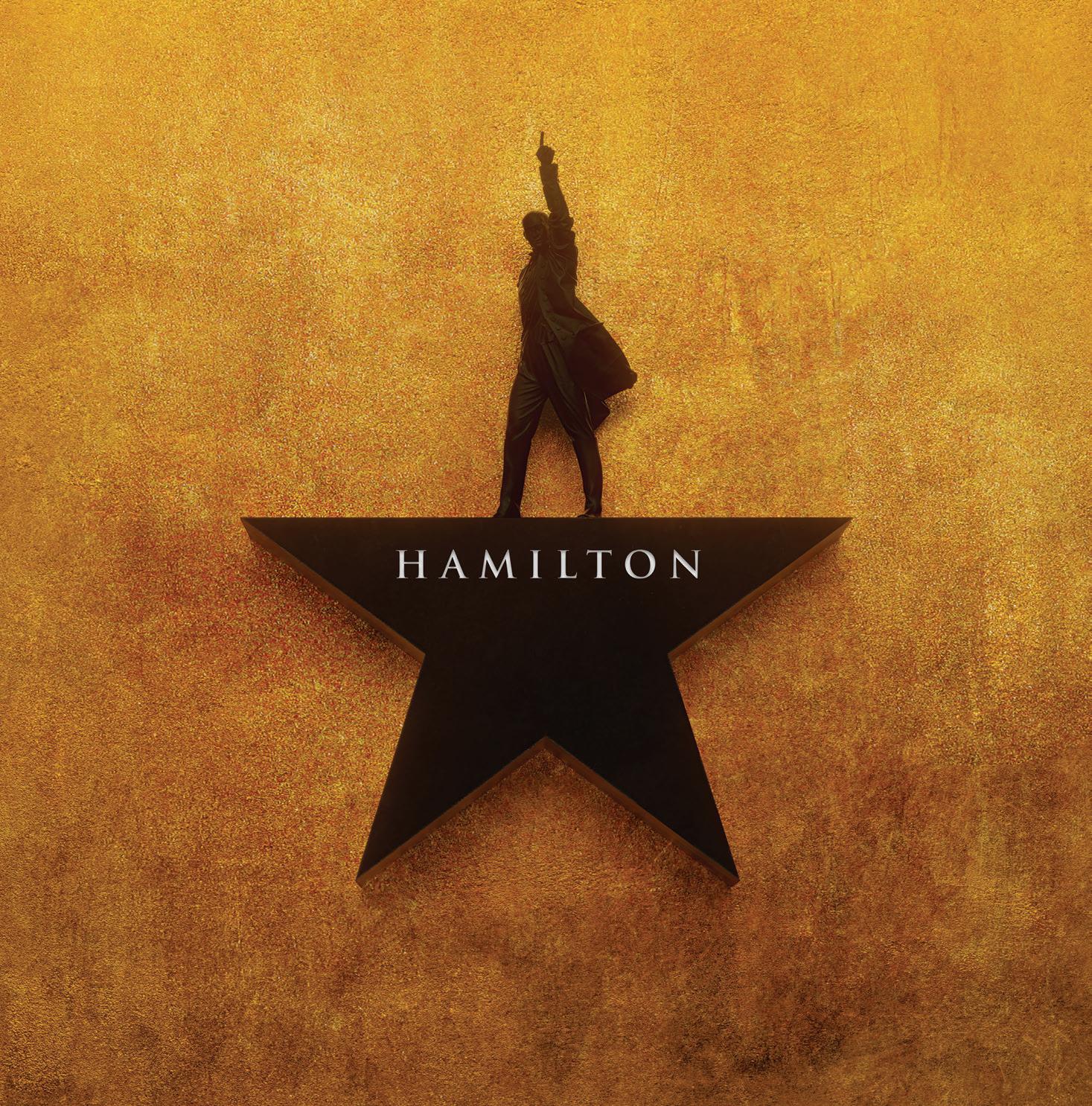
Curtain up. I’m sitting at the Harold Washington Library, looking through the Godzilla Rainbow Troupe file in the Chicago Theater Collection archives for my dramaturgy class final at the Theatre School at DePaul. In it, I see old programs, reviews, and even a script for a show called Whores of Babylon. But what fascinates me the most is a name. Or rather, a person who goes by the name “Eleven.”
Though the name Godzilla Rainbow Troupe was (understandably) enough to pique my interest, I felt myself drawn to this “Eleven.” Who were they? What else have they done? Why Eleven? Two things popped up after a cursory Google search. I, with my professor’s help, found Gary Tucker, aka Eleven, mentioned in the foreword of a Tennessee Williams play, A House Not Meant to Stand, where Gregory Mosher (the Goodman Theatre’s former artistic director) wrote that Tucker directed Williams’s last play before his death. The second thing that popped up was, sadly, an obituary. Tucker passed away in 1989. Cue the rug pulling from underneath my feet. Now, more than ever, I knew that I had to find out more about this Eleven. I came to the realization that in this quest, I needed to do more than just sit and look through the


archives. I finally sat down and asked myself, “Who can I talk to? Who can I connect with?” It took me a while to figure out exactly what I wanted to do with this project. Then, I looked back to my previous experience with theater.
I’ve always been drawn to oral history and its relation to theater. I took part in The Laramie Project back in 2019, so I have a slight connection with Tectonic Theater Project and their work. I admire the way they utilized real-life stories and recollections of the Matthew Shepard murder to create a compelling theatrical narrative.
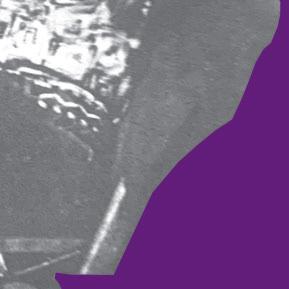

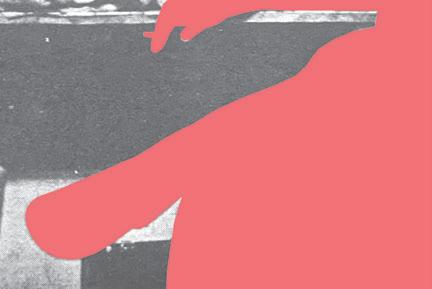
On Monday, May 8, I sent an email to Corky Siegel, Chicago musician and Tucker’s brother-in-law, requesting an interview. On Wednesday, May 10, after thinking I wouldn’t get a response, I saw in my spam folder an email from Holly Tucker-Siegel, Tucker’s sister. She wanted to take part in the interview. The scope and gravity of this research suddenly all became real.
I found Tucker-Siegel to not only be kind, but also someone dedicated to preserving the memory of her brother. I almost didn’t reach out to her out of fear that she wouldn’t want to participate. This notion seems preposterous to me now. Without this conversation, I definitely would not have been able to answer the
question, “Who was Gary/Eleven?”
Tucker-Siegel’s recollections of Tucker painted a picture of an ambitious, intelligent man who put 110 percent into anything he did. She remembered a Tucker who skipped grades in school, got into the American Academy of Dramatic Arts, spent time with Andy Warhol’s crew, and attempted to pioneer a new theater movement in Chicago—Charles Ludlam’s Theatre of the Ridiculous. I spent almost an hour on the phone with her, where we talked about Tucker’s life and legacy. (I can also say that I am two degrees of separation away from Tennessee Williams—if he were still alive— which I feel is something not a lot of people could say.) Talking to Tucker-Siegel gave me the opportunity to learn about Tucker, but also Williams, in a sense. After completing the interview with Tucker-Siegel, my confidence in this project grew significantly.
The next person I interviewed was Albert “Bill” Williams, former theater editor (and current contributor) to the Reader , theater professor at Columbia College Chicago, and a member of William Russo’s Free Theater in the early 70s. His contribution was just as invaluable, as Williams holds a plethora of knowledge as a longtime LGBTQ+ activist and former editor of Windy City Times . As such,
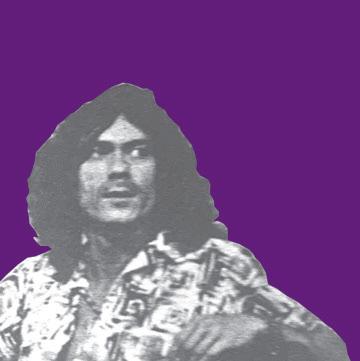
he helped me gain a deeper understanding of Tucker’s work.
Williams noted that Theatre of the Ridiculous was, among other things, “scruffy,” “bizarre,” and “outrageous.” None of this was said pejoratively, by the way. Theatre of the Ridiculous and by extension Godzilla Rainbow Troupe aimed to challenge audiences’ ideas on what theater should be.
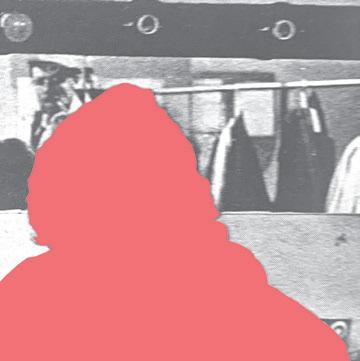

Tucker-Siegel recounted the time a critic (who did not think that Godzilla Rainbow was doing the “right” kind of theater) went to Whores of Babylon . A performer, dressed in drag and looking like the critic, plopped right next to the critic and mimicked her until the critic exasperatedly left the theater. Though Theatre of the Ridiculous wasn’t as successful in Chicago as in New York (Godzilla Rainbow only lasted from 1971 to 1974), audiences were challenged by the work Tucker produced.
Not only did Williams chronicle the kind of work Godzilla Rainbow performed, but he also reminded me that “as a critic, as a reviewer, you’re creating a historical record as well as opinions,” something that struck me profoundly while working on this project. I remembered how little I could find about Tucker/Eleven and Godzilla Rainbow. After our interview, Wiliams provided more resourc-
es—scans of articles, pictures, more archival collections. I left the interview impressed by how much he knew about Chicago theater. This interview also showed how well-connected Tucker was; he came to Chicago through the encouragement of others.
Finally, after my two interviews with Tucker-Siegel and Williams, I reached out to David Wirth, former Godzilla Rainbow Troupe company member, and former Goodman artistic director Mosher. While both responded to my initial email, it was Wirth who answered my questions. In this go-round, I found out more about Godzilla Rainbow and also the kind of artist that Tucker was.
Wirth recalled, “He knew more about stagecraft and how a physical movement can provoke laughter from an audience than anyone I’ve worked with since. I refer to what I learned from him to this day. I found Eleven to be a sensitive, intelligent, passionate, ambitious man not without flaws, of course, but blessed with large amounts of charm and charisma.”
He was also the only one out of the three I interviewed who could answer the question, “Why Eleven?”
“. . . he was in Greenwich Village in New York City riding in a car with members of Andy Warhol’s entourage—the names Ultra Violet and Viva are the only ones that come to mind. Eleven said he was high on some sort of hallucinogenic, LSD I think, and was discussing with his companions the possibility of him changing his name. They agreed that a name change from Gary Tucker was a very good idea. The car stopped at a red light and through the window, Eleven saw an awning with a large number eleven on it. He said he spoke, ‘eleven’ out loud and he liked the way it sounded and the way it felt to say the word ‘eleven.’”
These three perspectives provided more than I could have ever hoped for: personal stories, photos, archival news clippings, etc., but I still felt like I was missing something.
A sobering realization that this project brought out was that a lot (or at least it felt like a lot) of the people in Tucker’s circle had passed or moved on from Chicago. The main
piece of the puzzle was still Tucker. With Tucker not alive, then, how could I finish this project?

The elephant in the room was AIDS, or rather what AIDS took. Though it wasn’t explicitly stated in the obituary, it was confirmed to me by Bill Williams that Tucker had passed due to AIDS, as did so many other theater artists, including Theatre of the Ridiculous founder Charles Ludlam, J. Pat Miller, and Tom Biscotto. Ludlam cast Tucker in the o -o -Broadway production of Whores of Babylon , Biscotto encouraged Tucker to move to Chicago and cofounded Godzilla Rainbow with him, and Miller was in the Godzilla Rainbow production of Whores. (After Miller and Biscotto died of AIDS, their friends in Chicago theater started the Biscotto-Miller Fund, which later became Season of Concern and still provides financial assistance to theater artists in need.)
Though Tucker’s story is rife with mystery, the history of gay artists who died before their time is too well-known. While he did theater elsewhere, including in Atlanta and New York, Tucker’s legacy in Chicago isn’t well recognized or known. Perhaps, to me at least, this is the largest reason why his impact on Chicago theater isn’t remembered: he wasn’t able to advocate for it.
A common thread in all of the questions that I asked was the issue of legacy. Just like anyone, Tucker was a multifaceted individual, and as such, so is how he is remembered. Even now, it is astounding to me that even a few months ago, I wasn’t aware of Gary Tucker or the Godzilla Rainbow Troupe. Without sounding too corny, I feel as though I am a part of that legacy now, simply because an archival collection by the name of Godzilla Rainbow caught my eye. There have always been people who have advocated for Tucker’s story to be told: his sister, his peers in the theater, and now those who know his story. Not only did I find out who Gary/Eleven was, but I also discovered the many ways he was remembered.
There are more forgotten people whose stories are waiting to be told. It’s now up to us, as critics, theater makers, historians, people, to find them. Curtain down.
m letters@chicagoreader.com





MISS WHAT THE NY TIMES HAS NAMED ONE OF THE TOP 25 PLAYS OF THE LAST 25 YEARS.Pictured: Sarah Price. Photo by Saverio Truglia.
“I always thought there would be more interesting people at my wedding.” - Eurydice
Love,” “One,” and “I Can Do That,” this production, directed by Wayne Mell, is running now through October 8 at Skokie Theatre.
MadKap follows up A Chorus Line with gay writer/performer Charles Busch’s acclaimed The Tale of the Allergist’s Wife. Centering on an Upper West Side housewife in the midst of an existential crisis, this production, directed by Steve Scott, runs October 27-November 19, also at the Skokie Theatre.
One of Chicago’s greatest treasures for its LGBTQ+ community and its allies is the city’s queer theater scene. As the 2023–24 season kicks in, there will be no shortage of queer stories playing out on Chicago’s stages.
Uptown-based LGBTQ+ theater stalwart PrideArts got an early start, kicking o its fall season back in August with Ryan Korell and Jonathan Keebler’s musical Gay Card, which runs through September 24. Directed by Jay Españo, Gay Card centers on a college freshman looking for an “in” among the gay crowd at his new school.
In November, PrideArts presents the adult pantomime Sleeping With Beauty, written by Tom Whalley and directed by Bryan McCaffrey, the same team behind last year’s delightfully vulgar Jack O the Beanstalk, one of my favorites from 2022. Sleeping With Beauty centers on Princess A’whora (it’ll be that kind of show) trying to stave o a curse from the evil fairy Carabitch.
Edgewater-based Redtwist Theatre kicks off the season with a reimagining of their own—a “gory, gay” retelling of the Little Red Riding Hood fable, Wolves, which runs October 1-November 5. Written by Steve Yockey and directed by Redtwist artistic director Dusty Brown, Wolves is the story of roommates and
former lovers Ben (Joshua Servantes) and Jack (Gardy Gilbert) struggling with their isolation in a new city. Ben and Jack’s tenuous relationship unravels even further when Jack brings back a new lover. Redtwist’s “season of pride” continues after Wolves with Larry Kramer’s classic The Normal Heart Open Space Arts has been presenting the drama Massage Therapy, which was written by Joe Godfrey and directed by David Zak. Running through October 1, Massage Therapy centers on the friendship between a woman (Mary Anne Bowman) and her longtime massage therapist (Raymond Nicholas).
The relatively young Mosaic Players (founded in 2020) are presenting performances of the comedy 5 Lesbians Eating a Quiche by Evan Linder and Andrew Hobgood at a number of venues, both suburban and in the city, throughout the fall. According to artistic director Allison Fradkin, the show is “a scintillating satire of women’s roles in the 1950s— not to mention an unapologetic declaration of lesbi-independence!”
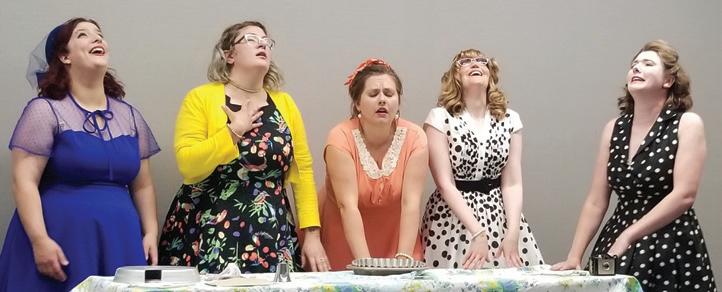
Skokie’s MadKap Productions offers two shows that should be of interest to queer audiences, with the first being the classic musical A Chorus Line by James Kirkwood, Nicholas Dante, Edward Kleban and Marvin Hamlisch. Featuring classic songs like “What I Did for
The Seven Thirty Theatre Company offers up a new production of the musical The Color Purple September 30-October 1 at the Studebaker Theater. This stage version of Alice Walker’s 1982 novel—about a Black woman in the south who finds her self-worth in part thanks to a loving relationship with her husband’s longtime mistress—first appeared on Broadway in 2005 and received even more acclaim with a 2015 revival. A new film adaptation of the musical appears in cinemas this Christmas.
Members of City Lit Theater Company will appear at various locations in and around Chicago October 2-7, which is Banned Books Week, for Books on the Chopping Block , a one-hour program of readings from the top ten books banned in 2022. Among the books excerpted are Gender Queer by Maia Kobabe; All Boys Aren’t Blue by George M. Johnson; Flamer by Mike Curato; and The Perks of Being a Wallflower by Stephen Chbosky. Additional readings are scheduled for September 27 and November 14. The program is presented in conjunction with the American Library Association’s O ce for Intellectual Freedom.
Evanston’s Fleetwood-Jourdain Theatre presents This Bitter Earth by Harrison David Rivers October 28-November 12 at Noyes Cultural Arts Center in Evanston. The drama addresses issues of race, class, and courage as it centers on an introspective Black playwright whose political apathy is called out by his boyfriend, a white Black Lives Matter activist.
Northwestern University stages Bob Martin, Chad Beguelin, and Matthew Sklar’s musical The Prom November 10-19 at the Ethel M. Barber Theater in Evanston. Directed and choreographed by Tor Campbell, The Prom , winner of a Drama Desk Award for best musical, focuses on four eccentric Broadway divas who enlist in a small-town girl’s efforts to bring her girlfriend to her high school prom.
It’s not the most LGBTQ+-positive portrayal of same-sex love in the world, but I’d be remiss to leave out Court Theatre’s upcoming production of James Goldman’s The Lion in Winter , which addresses the man-on-man bed-hopping of Philip II of France (and shows o the most dysfunctional family Christmas ever). The Court production runs November 3-December 3 and is directed by Ron OJ Parson.
Porchlight Music Theatre will have a season-long tribute to Cole Porter, culminating in its production of Anything Goes this winter. Programming for the tribute is to be announced but will include a roundtable discussion centering on Porter’s contributions as a gay artist.
Theo (formerly Theo Ubique Cabaret Theatre) in Evanston kicks off a number of Stephen Sondheim productions this season with Assassins, running October 27-December 17.
About Face Theatre this fall will focus its energies on Re/Generation Studio, a public workshop series aimed at creating “a collective dreaming space for connecting with each other, learning about new plays, world-building, and exploring new production models. Each workshop will be grounded by staged readings of sections of new plays designed to invite conversation, collaboration, and creation in a shared space,” according to the company.
The workshop dates and times are still to be determined but About Face is aiming for sessions between November 30 and December 16 at the Den Theatre in Wicker Park. The workshops are free and open to the public (recommended for ages 12 and over).
The company, which held similar sessions this past winter, hopes the workshops will help them to more meaningfully engage the public after the pandemic shutdown. Cocurator Pen Wilder says: “Re/Generation Studio is all about taking the risk of coming together and sharing experiences. The perspective I gained through the [previous] workshops as an artist, a playwright, and a person were invaluable. Every great play was once a new play, and being there for so many different beginnings, middles, and ends is something really special.”
And on Saturday September 23, 5:30 PM, About Face presents Loud and Proud, a concert of Broadway hits by queer composers at Navy Pier as part of the free Chicago Live! festival. v m


This week, we’re kicking off a new occasional series, Stages of Survival, spotlighting theater companies that are, despite the pervasive gloom-and-doom narratives about the performing arts, still producing. The plan is to eventually encompass a broad range of companies: Equity and non-Equity, those that are itinerant and those that have their own spaces, and companies from all di erent geographic locations in the Chicago area. But since the idea for this series came in part from a Facebook post by Curious Theatre Branch’s Jenny Magnus asking where the attention was for companies that are still alive and kicking, it felt appropriate to start o by talking to Magnus about Curious, now in its 35th season.
Cofounded by Magnus and her then-romantic partner Beau O’Reilly, Curious began as a “branch” of their cabaret rock band, Maestro Subgum and the Whole. “Both Beau and I wanted to do more theatrical things in the band,” Magnus says. “I remember one time, in one song, I just wanted the whole band to lean to the left physically, as a visual aesthetic thing. And a couple of people in the band were like, ‘No, we’re playing music. That’s what we do. We’re not interested in these other things.’”
They dipped their toes into a couple of Brecht pieces first, but the real start of Curious as a theater company came with 1988’s musical (featuring Maestro Subgum songs) Careening Is a Skill, starring Jenny, her brother Bryn Magnus, and O’Reilly, and directed by Stefan Brun (cofounder of Prop Thtr who would later marry Jenny—emblematic of the deeply entwined families of a nity that have
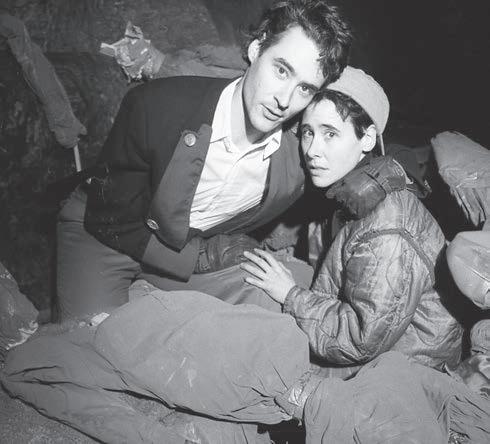
dominated Curious’s shifting ensembles over the years). “That was the first time we used music and theater,” says Magnus. “We were doing [Maestro] songs in the context of a show. And that really was like, ‘OK, this is the direction we’re going to go in.’
“Both coexisted quite a while in different iterations and the band eventually fizzled out, but the theater company sustained. I remember being surprised that the theater company sustained and the band ended.” (Magnus and O’Reilly still perform with others occasionally in another band, the Crooked Mouth.)
The company bounced around to di erent venues and neighborhoods, from Wicker Park to Lincoln Park to Rogers Park to Avondale (where for several years they were a resident company with Prop, before the latter gave up their building in the early days of the pandemic). They almost always did new work, most of it created, especially in the early days, by the triumvirate of O’Reilly and the Magnus siblings. (Bryn’s latest, Moon at the Bottom of the Ocean, kicked o their new season this month.) Early on, Curious also became the key producer for the annual Rhinoceros Theater Festival, the city’s oldest celebration of fringe theater. But the creative output initially far outpaced administrative function.
Magnus, who worked with Madison’s experimental Broom Street Theater before moving to Chicago, notes that neither she nor O’Reilly had much interest in hierarchy. “Let’s just do it through discussion and decide together. Let’s not have these labels of artistic director and all this stuff that we didn’t actually understand very well.” They also committed to working day jobs and paying out of pocket for
production costs—made easier in the early days because storefront rent was far more a ordable than it is now.
Curious, along with several other small performing arts groups, including Theater Oobleck and Redmoon, received a three-year grant in the early 90s from the MacArthur Foundation. The amount seemed small: $10,000 per year. But Magnus says, “For us, that was absolutely game-changing. Because suddenly we had a nut. We could produce o that money.” Magnus also notes that MacArthur provided “grant bait” for other funders who began supporting Curious.
But Curious’s production model never really took into account paying artists in the early days.
“I really think the idea of saying, ‘We must have pay equity or we shouldn’t be doing it’ is just patently absurd,” Magnus says. “I as an artist am never going to be paid what I’m worth. And I just know that’s true. I’m doing it because I’m compelled to do it.” But she adds, “I think it’s good to work towards. I think it’s crucial actually, to work towards being paid for labor and recognizing artistic output as labor. I think those are all very interesting and important ideas that must rise to the top. But with a small company like ours—I think that’s actually why some of these companies are folding. Because they simply cannot pay a living wage to people and continue.”
Curious (which “will never be Equity,” according to Magnus, and operates on an annual budget that’s hovered around $50,000 for years) has evolved to where they do o er stipends to all artists. “We can’t a ord to pay a living wage or market rate. But what we do
is we’re always trying to up the ante, pay more than we did before, and also pay everyone equally. So the woman running the tech gets paid the same as the writer.”
Along with Oobleck’s “more if you’ve got it, free if you’re broke” model that helped pioneer what we now call “radical hospitality” in ticketing, Curious also always worked on a pay-what-you-can model, which is another form of economic justice. Magnus notes, “We recognized that the people who were going to come and see our shows were our peers. They weren’t di erent from us. They were us. They were all working jobs. They were scroungers, basically. So we better find some kind of strategy to deal with the fact that if you price yourselves out of the ticket, people won’t come.”
For Magnus, what’s lacking in the current scene is a funding commitment to companies like Curious that are devoted to sustainability, rather than growth for its own sake.
“When you’ve still been at it a really long time but you’re no longer sexy or young or emerging, it’s much much harder to get attention. Middle-aged people are kind of invisible. Middle-aged concerns are not as interesting. But in the funding realm, I’m finding in talking to other people that it’s a lot harder than it used to be.
“Why wouldn’t the fact that we’ve survived and sustained ourselves all this time, why isn’t that a high value just the same as a new company? Being able to sustain through everything, through economic downturns, through deaths in your company [longtime Curious managing director Matt Rieger died in 2021], through people having children and you still sustained? I think personally that is so much more di cult than being young and fresh out of school—‘Yeah, we’re going to do the sexy stu !’ Anybody can do that, I feel like.”
She adds, “I’ve been selling for years the idea of ‘We don’t want to get bigger. We want to get deeper.’ That’s my big tagline to all these people and I still don’t think they’re hearing it. They want quantitative proof of growth. It’s just a fundamentally flawed paradigm to me. Arts organizations shouldn’t be scrambling around trying to get bigger so they can get more money. I think that’s completely self-defeating, really. Give smaller amounts of money to more people. How about that?” v m
















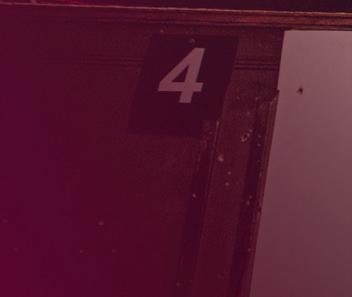



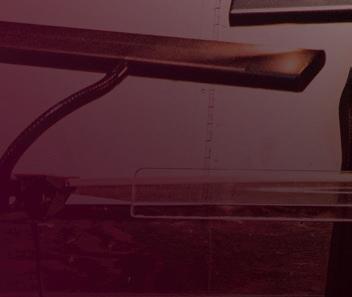
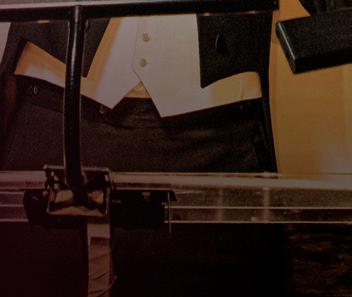

Kate Fry (le ) and Timothy Edward Kane in Birthday Candles
MICHAEL BROSILOWacolyte of birth control pioneer Margaret Sanger, who starts her own romance with hard-partying doctor Sam (Edgar Sanchez). The entrance of conservative Alabama country transplant Leland (Ajax Dontavius) into their circle throws multiple dramatic spanners into the works.
But Cleage’s play, especially in the hands of Burke and his empathetic ensemble, never becomes a soapy museum piece. As a writer, Cleage has always been excellent at centering the idea of what freedom means, especially for Black women dealing with the double reality of racism and sexism. “Truth or solace?” Arzell’s Guy asks Johnson’s chanteuse early on, when she’s asked him a tough question about herself. The beauty of Blues is that we see plenty of both in full and sometimes sorrowful detail. —KERRY REID BLUES FOR AN ALABAMA SKY Through 10/15: Thu-Fri 7:30 PM, Sat 2:30 and 7:30 PM, Sun 2:30 PM; Theater Wit, 1229 W. Belmont, 773-975-8150, remybumppo.org, $36-$48 ($10 students)
The Duchess of Malfi dissects the underlings.
Northlight’s Birthday Candles is an emotionally illuminating experience.
Noah Haidle’s play got absolutely savaged in New York, with the critics’ main objection being that the story of a family over time had already been told in Thornton Wilder’s Our Town and The Long Christmas Dinner Apparently they’d never heard that there are only seven plots in the world.
In any case, I could barely recognize in their dismissive reviews the delicate and thought-provoking piece now at Northlight. Birthday Candles does indeed pay homage to Wilder as it investigates the costs of being alive. From the beginning, when we see Kate Fry’s Ernestine playing “Queen Lear” in high school, Haidle makes us feel the shadow of loss lying behind every triumph. If this is not an original notion, that’s because it’s one of life’s great truths. The playwright uses repetition of lyrical dialogue by different characters—first Ernestine, then her daughter and granddaughter and great-granddaughter—to remind us that everyone faces the same questions.
As the play is constructed around the ritual of baking Ernestine’s birthday cake, the title’s reference to candles seems slightly off, until we consider that illumination—understanding— increases with years.
Jessica Thebus directs her ensemble with tenderness but without sentimentality: when people die, they simply walk the lighted circle at the edge of the stage and disappear. (Kudos to Sotirios Livaditis’s set and JR Lederle’s lighting design.) Fry is flawless, aging without makeup or stereotyping. Timothy Edward Kane plays the boy and then man next door, faithful as Lear’s Cordelia, and does so with perfect calibration of humor and pathos. The other four actors represent everyone else in Ernestine’s long life. Cyd Blakewell vividly distinguishes Ernestine’s mother from her troubled daughter and then renews some of the mother’s joie de vivre as
the great-granddaughter. Chike Johnson as Ernestine’s husband and Samuel B. Jackson as her son engage in a recurrent power struggle, then perform painfully accurate scenes of debility before returning in other roles. And Corrbette Pasko is both funny and touching, especially as Ernestine’s daughter-in-law, whose repeated line is, “I remain a stranger to my own heart.”
Though it’s based loosely on a real story, John Webster’s Jacobean revenge tragedy The Duchess of Malfi plays like a cross between torture porn and Shakespeare, what with the piling up of butchered bodies, hints of incestuous longing, and even a touch of lycanthropy thrown in for good measure.
critic-proof. (Once you’ve had an entire episode of Drunk History dedicated to your recap of the events in your musical, what else is there to achieve?) But for the fanatics and newbies alike, I’m happy to report that the current Broadway in Chicago touring production of the Show That Saved Broadway (or so I assume, from all the hype) is in fine (if somewhat familiar) fettle.
Between the first time Miranda’s hip-hop take on the Founding Father and first Secretary of the Treasury (inspired by Ron Chernow’s biography) played here in preelection 2016 and today, we’ve been through a few events that hit a little close to home. This is, a er all, a story about power-hungry politicos and how to tie together a country of confounding and conflicting interests during and a er a time of revolution. (Neil Haskell’s hilariously insinuating take on King George’s “You’ll Be Back” made me uneasy, considering who’s running again for POTUS on the GOP side.)
Don’t we all? But you’ll recognize yours somewhere in Birthday Candles, which is why even the New York critics had to admit that this corny play le the audience in tears. It does so here as well.
—KELLY KLEIMANBIRTHDAY CANDLES Through 10/8: Wed 1 and 7:30 PM, Thu-Fri 7:30 PM, Sat 2:30 and 7:30 PM, Sun 2:30 PM; relaxed/sensory sensitivity performance Wed 9/20 7:30 PM, open captions Friday 9/29, description/touch tour Sat 9/30 2:30 PM; Northlight Theatre, North Shore Center for the Performing Arts, 9501 Skokie Blvd., Skokie, 847-673-6300, northlight. org, $49-$89 ($15 students pending availability)

Remy Bumppo’s Blues for an Alabama Sky is stellar.
I don’t know who came up with the idea of a Pearl Cleage festival for Chicago theater, but based on Mikael Burke’s gorgeous production of the Atlanta poet laureate’s 1995 drama, Blues for an Alabama Sky, I’m glad they did. (Goodman Theatre’s staging of Cleage’s comedy The Nacirema Society is in previews now.)
Set during the Great Depression in Harlem, Cleage’s play follows five Black people whose lives all intersect in the same apartment building (neatly captured in Lauren M. Nichols’s set). The famous names are all offstage: Adam Clayton Powell, Langston Hughes, and Josephine Baker. The image of the latter hangs like a holy relic in the apartment of gay costume designer Guy (the effervescent Breon Arzell) and nightclub singer Angel (Tiffany Renee Johnson), who just lost her job and her Italian mobster boyfriend; Guy dreams of moving to Paris and designing for the star of the Folies Bergère. Across the hall is Delia (Jazzlyn Luckett Aderele), an
Babes With Blades’s current production, directed by Hayley Rice, doesn’t find its way cleanly through all the tricky shi s in tone (for a tragedy, you may find yourself giggling at some of the over-the-top twists). The fate of the title character (played by Carrie Hardin)—an Italian widow who flouts the dictates of her brothers (a duke and cardinal) and remarries below her station—feels ancillary to that of a more compelling figure.
That would be Bosola, a recently paroled steward and “intelligencer” (fancy word for “spy”) whose machinations on behalf of the dastardly duo of brothers set off the bloody chain of events. As played by Maureen Yasko, Bosola is a complex and slippery person whose decision to follow the least trustworthy people in the room, only to find out that they have no intention of following through on their pledges of fortune and security, may remind you a bit of some recently indicted coconspirators in Georgia. Yasko’s performance is by far the most solid in the show, whether she’s fulminating against the elites who abused Bosola’s loyalty (or greed) or handling sword and dagger in the final thrilling fight (designed by Maya Vinice Prentiss). When people show you who they are, believe them. Preferably before you kill others, or they kill you. —KERRY REID THE DUCHESS OF MALFI Through 10/21: Thu-Sat 8 PM, Sun 3 PM (livestreaming 10/12-10/15); Factory Theater, 1623 W. Howard, babeswithblades.org, $35 ($28 seniors/ students; streaming $30); masks required
Hamilton holds up in the latest tour.
At this point, Lin-Manuel Miranda’s Hamilton is beyond
Pierre Jean Gonzalez in the title role feels a bit more rough around the edges initially than either Miranda or Miguel Cervantes, who played the role in the original Chicago production. But that works for a story about a young man in a hurry in the first act. And as both the music and the story take on more mournful hues in the second act, so, too, does Gonzalez’s performance. That’s when the contrasts with Jared Howelton’s showboating Thomas Jefferson and Deon’te Goodman’s glowering Aaron Burr come into sharp focus, all leavened by the sweet brokenhearted figure of Eliza (Nikisha Williams), Hamilton’s wife. But perhaps my greater love for the second act is itself a product of the heartbreak of living in America during the last administration. —KERRY REID HAMILTON Through 12/30: Tue and Thu-Fri 7:30 PM, Wed 1:30 and 7:30 PM, Sat 2 and 8 PM, Sun 2 PM (see website for complete schedule); James M. Nederlander Theatre, 24 W. Randolph, broadwayinchicago.com, $42.50-$182.50
Jane: Abortion and the Underground reminds us to find strength in organizing.
From 1969 to 1973, a Chicago-based organization known by the code name “Jane” brought safe and accessible abortions to more than 10,000 women. Paula Kamen’s Jane: Abortion and the Underground gives voice to the women who ran the resistance collective, risking their freedom to champion the right to choose.
Director Morgan Manasa and Idle Muse’s ensemble cast thoughtfully weave through firsthand accounts of the women who powered the abortion underground, beginning with its founding and ending with its shutdown a er the Roe v. Wade decision came down.
Kamen pulls the “Janes’” stories from verbatim interviews, o en highlighting how the women’s personal relationship to the cause intersected with the political and cultural circumstances driving the organization.
The story is well-paced and gripping, moving between the interviews and fictionalized scenes. Notably, it also provides plenty of space for the women who sought care from the service and never so ens the emotional and physical struggles they endured.
In the show’s conclusion, the women of Jane celebrate the progress that resulted from their efforts
SEPTEMBER 19–OCTOBER 29

OCTOBER 12–29










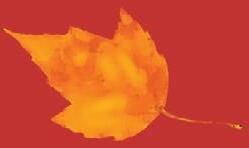

OCTOBER 31–NOVEMBER 12









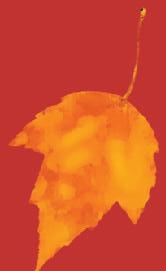
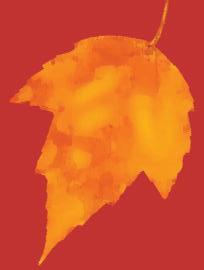
NOVEMBER 7–19



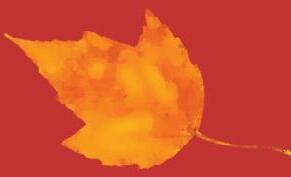

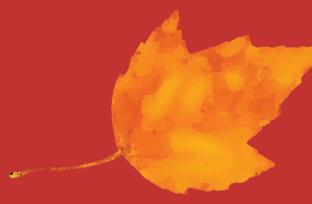

continued from p. 38 but acknowledge the fight yet to come. A year out from the Dobbs decision, when Illinois remains a haven for abortion amidst a mass of regressive restrictions nationwide, this message feels particularly heavy. But as demonstrated by Jane, hope remains in the power of organizing. —KATIE POWERS JANE: ABORTION AND THE UNDERGROUND Through 10/15: Thu-Sat 8 PM, Sun 3 PM; The Edge Off Broadway, 1133 W. Catalpa, 773-340-9438, idlemuse.org, $20 ($15 seniors/ students, $10 industry Thu)
Brett Neveu’s latest is hilarious and moving. Chicago playwright Brett Neveu is so good at writing about the darker side of life (as in his 2002 play Eric LaRue, now a film directed by Michael Shannon, his fellow ensemble member at A Red Orchid Theatre) that it’s hard to remember how flat-out hilarious he can be. If you need proof, look no further than Red Orchid’s season opener, Revolution, in which a trio of misfits gathers in the alley behind Revolution Haircuts in a mall in some unnamed town to celebrate a birthday party.
Puff (Stephanie Shum) is the birthday girl, but 26 is hitting a little different, now that being named manager for the hair salon has kicked her anxiety disorder into a higher gear. Her employee/best friend Jame (Taylor Blim) is game for anything, including hanging out in the alley drinking cheap beer rather than hitting the bar at Rainforest Cafe. But the appearance of odd-duck Georgia (Natalie West), a Ross employee with a seemingly wild past and a filter-free mouth, turns the night into an evening of small and large revelations.
top dollar to see—chief among them the title character’s intolerably abusive, self-obsessed, alcoholic mother. Little Voice, a painfully shy girl with a remarkable talent for imitating famous singers (Judy Garland, Billie Holiday, Marilyn Monroe), is much more sympathetic. But it is just painful to watch her again and again over the course of the play alternately abused and ignored by the selfish people around her.
The current production is full of terrific performances. I bet the cast had a blast learning to speak in the o en nearly impenetrable northern England dialect Cartwright’s characters employ. But a little of that goes a long way. Emjoy Gavino is a revelation as Little Voice; watching her transform in the blink of an eye from wilted wallflower to a singing powerhouse and back again is truly a thing to behold. Still, I kept hoping Gavino would ditch the script and just spend the rest of the evening belting out one song a er another from the Great American Songbook. —JACK HELBIG THE RISE AND FALL OF LITTLE VOICE Through 10/15: Thu-Sat 7:30 PM, Sun 3 PM; open captions Sat 9/23, open captions and audio description Sun 9/24, sensory-friendly performance Sun 10/1, masks required all Thu performances; Filament Theatre, 4041 N. Milwaukee, 773-283-7071, thegifttheatre.org, $35$45 ($35 veterans/seniors, $15 students)
Class and internalized racism explode in WELCOME TO MATTESON!
“Well, look who’s come to dinner!” bellows Gerald (Ronald L. Conner) to the neighbors he and wife Patricia (Sydney Charles) have invited to their home in Inda Craig-Galván’s WELCOME TO MATTESON! But the neighbors here aren’t white or interracial, and nobody’s trying to marry anyone else’s daughter. That aside, the parallels to Guess Who’s Coming to Dinner are apt, though Craig-Galván’s play digs into a lot of meaty issues over 90 minutes, much of it focused on class and economic anxiety in Black communities.
—KERRY REID REVOLUTIONNeveu’s high-octane script pinballs from examinations of lesser-known Warner Brothers characters (Puff has a tattoo of Gossamer), to the freakiness of megachurches like the one Georgia’s husband attends, to the universal human condition of not knowing exactly who you are or how to relate to people. On the latter score, this may be the best post-pandemic play I’ve seen so far in terms of emphasizing that we find joy where we actually find it, not where we expect to see it. West, a longtime legend on Chicago stages including Red Orchid’s, is a marvel. But Shum and Blim also bring highly relatable truth to their portrayals of young women just trying to figure it all out while the world keeps unfolding in new and scary ways.
Through 10/29: Thu-Fri 7:30 PM, Sat 3 and 7:30 PM, Sun 3 PM; open captions Sat 10/7 3 and 7:30 PM, ASL interpretation Sun 10/15 3 PM, masks required Fri 10/13; A Red Orchid Theatre, 1531 N. Wells, 312943-8722, aredorchidtheatre.org, $35-$45

Gi ’s The Rise and Fall of Little Voice is at its best when it sings.
When people talk about the glory years of Chicago theater they rarely mention Jim Cartwright’s The Rise and Fall of Little Voice. A er opening in London’s West End in 1992, with Jane Horrocks in the title role, it was done at Steppenwolf in 1993 (with Hynden Walch as Little Voice) and was later transferred to Broadway in 1994, as the Steppenwolves do, where it quickly closed a er 19 previews and 9 performances.
Seeing the Gi Theatre’s revival (directed by Devon de Mayo and Peter G. Andersen), it is not hard to see why. The play, at two-plus hours, is just too long, and is packed with loathsome characters no one wants to pay
Corey (Anthony L. Irons) and Regina (Alexis J. Roston) have recently moved to the south suburb of the title as a result of the closing of Cabrini-Green. Under duress, tightly wound Patricia has agreed to host them as a neighborly gesture. But from the jump, it’s clear that she doesn’t think much of them. (She keeps the good red wine for herself and serves cheap moscato to the guests.) Regina, who’s studying interpersonal communications at Governors State, calls out the microaggressions from Patricia, while Corey and Gerald try to bond over furnace maintenance tips.
De ly staged by artistic director Ericka Ratcliff, this rolling world premiere at Congo Square is sharp, smart, and acted to comic perfection by the cast of local heavyweights. I found some echoes of Jackie Sibblies Drury’s Fairview, but here Craig-Galván is exploring internalized racism rather than stereotypes imposed by white supremacy (which really is the same thing, actually). A late-in-the-play shi to Jordan Peele territory is a bit jarring, but builds effectively on the clammy unease just beneath the surface we’ve already glimpsed.
—KERRY REID WELCOME TO MATTESON! Through 10/1:
Thu-Fri 7 PM, Sat 2 and 7 PM, Sun 2 PM; Wirtz Theatre in Abbott Hall, 710 N. DuSable Lake Shore (entrance on Superior), congosquaretheatre.org, $45 ($75 radical generosity tickets cover one admission plus an additional sponsored admission for a community member; contact communitypartner@ congosquaretheatre.org for information on donated tickets.) v

A “laugh-out-loud” (Broadway World) “hilarious comedy” (Arts ATL) from nationally renowned playwright, poet and NY Times best-selling author Pearl Cleage.
It’s 1964 Montgomery, Alabama, and the Nacirema Society prepares for its annual introduction of six elegant African-American debutantes to a world of prosperity, privilege and social responsibility. This centennial year, the Society’s grande dame, Grace Dunbar, will have nothing less than perfection for her granddaughter Gracie’s debut. And with young love brewing, old family skeletons rattling, national media attention abounding and a blackmail plot bubbling…what would dare go awry?


NOW THROUGH OCTOBER 15

SPECIAL OFFER: Get $30 main floor tickets with code READER



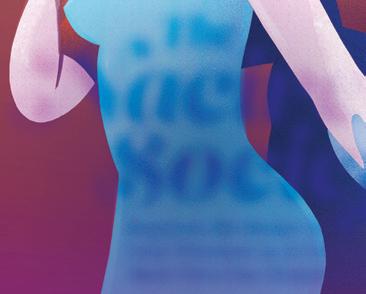
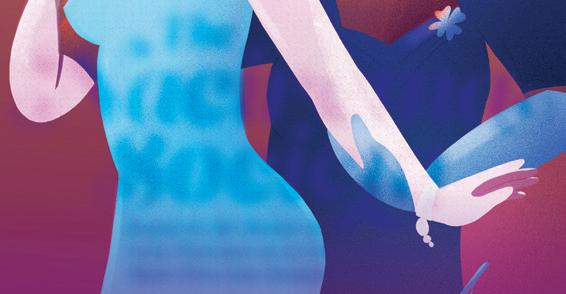



*Not valid on premium seating, on previously purchased tickets or in combination with other offers.
GoodmanTheatre.org
312.443.3800
Groups 10+: Groups@GoodmanTheatre.org Lead
Pro wrestling bursts onto the stage in a high-octane, immersive, 90-minute thrill ride.

It’s a night in the theater that you’ll never forget. Experience the heart-pumping action ringside, as the Goodman transforms into a professional wrestling arena—a perfect backdrop for the high drama and rich cultural history of lucha libre. Originally developed with Prism Movement Theater and produced in partnership with CLATA and the National Museum of Mexican Art as part of 2023 Destinos Festival, actors and luchadores (wrestlers) in masks representative of Aztec gods play out an exciting wrestling story about family, honor, tradition and redemption.
SEPTEMBER 29 – OCTOBER 29


SPECIAL OFFER: Get $30 main floor tickets with code READER30





*Not valid on premium seating, on previously purchased tickets or in combination with other offers.

GoodmanTheatre.org
312.443.3800
Groups 10+: Groups@GoodmanTheatre.org

Some records never get old. Often on repeat, we grow fonder, more in love with our favorite tracks. Of course, there’s always the fear of getting sick of the songs we love the most, but let’s be fair: nostalgia isn’t easily muted. Like these sorts of records, High Fidelity, no matter how many rewatches, remains a classic hit in Chicago’s cinematic playlist. The movie is whimsical and undeniably fun, packed with a love for music, but not unaware of the troubling side of romance. It’s a film that reimagined the rom-com, inviting emotional complexity and cynicism into the love story, and its influence is still sampled today. And in January 2024, barring any further delays due to the WGA and SAG-AFTRA strikes, John Cusack will host an intimate screening of the
long-admired film at the Auditorium Theatre. The Evanston native will follow the screening with a conversation about his career and the making of the film, plus an audience Q&A.
Rob (Cusack) isn’t your average romantic lead. In fact, he’s everything but. High Fidelity opens with “You’re Gonna Miss Me” by the 13th Floor Elevators playing into Rob’s headphones, a premonition of the lovesickness to come. Safe in his music, he keeps his back to the world, but more specifically, to his girlfriend Laura (Iben Hjejle). She’s moving out, and almost too obviously, Rob is in the wrong. He’s a stubborn, self-absorbed record-store owner who refuses or avoids accepting blame for his actions. Yet somehow, he and his sulking are endearing enough to us to listen as he monologues his top five breakups of all time.
Here’s a character that can’t get out of his head. So much so that director Stephen Frears and Cusack break the fourth wall, giving Rob the space to ramble directly to the audience. “What came first, the music or the misery?” Rob asks viewers after Laura leaves him. Almost blind to the women around him, Rob fails to understand why he’s emotionally stunted. Not to mention, his two confidants other than the audience are equally immature and snobbish music fanatics, Dick and Barry (Todd Louiso and Jack Black), the two employees at Rob’s store who spend most of their time debating the songs in their “top five” playlists. But what makes High Fidelity so enduring is the film’s refusal to let Rob get o easy. Roles reverse; the audience is in the know, and Rob is clueless. Its real pull is our desire for him to wise up.
Once Rob finishes listing his top five breakups, a brilliant idea dawns on him: he decides to contact every ex-girlfriend on the list to ask them, “Why?” He finds former girlfriends like Penny Hardwick (Joelle Carter), his first girlfriend who holds him accountable for unwanted advances, and Charlie (Catherine Zeta-Jones), the girl he remembers as undoubtedly “out of his league”—conversations with valuable lessons. But Rob twists these encounters to support his self-fulfilling hypothesis that he’s not the problem. All the while, it is more painfully apparent to us that his self-absorption robs him of the love he desperately seeks.
High Fidelity unravels seamlessly, almost too naturally, for an adaptation of Nick Hornby’s original London-based 1995 novel. To this day, the entire film feels embedded in Chicago. Not only do landmarks like the Music Box Theatre and the Blue Line make cameos, they feel integral to the storyline. Rob’s record store, Championship Vinyl, and his two music-obsessed record clerks are swallowed into the city so convincingly that we should be able to stop by after the film to see them. The remix, in many ways, feels more authentic. It’s a film where the nuance is so organically en-
twined that it feels like insight into the lives of real Chicagoans.
Cusack, Frear, and writers Steve Pink and D.V. DeVincentis don’t throw Chicago in the audience’s faces like Ferris Bueller’s Day O . The filmmakers veer away from showy aerial shots of the Sears Tower or Lake Michigan. Instead, High Fidelity focuses on real people living in the neighborhoods. Not to mention, the film takes place in several cherished venues, including Lounge Ax, Double Door, and, of course, the Green Mill. Admittedly, most landmarks featured in High Fidelity have reached touristy levels of popularity. However, the film made sure to populate those spaces with real people who are full of flaws and authentically complicated.
Since 2000, High Fidelity has been far from the last rom-com to introduce a self-centered jerk, not shy to show us the unsavory sides of men’s arrested development. But for these lack-of-maturity stories to work, audiences need to see the room for growth, to root for self-betterment against all odds. The film ushered in an era of rom-com antiheroes that spurred movies like Ghosts of Girlfriends Past (actually, many Matthew McConaughey-led movies). Rob’s inability to listen to the women in front of him, opting instead to listen to either his own monologue or the music safeguarding him, became a thematic vehicle to address men’s unhealthy relationships with romance. It’s a movie that holds toxicity accountable.
Traditionally, rom-coms exaggerate. Typical leading characters fall head over heels and act irrationally. But High Fidelity skews away from that. Rob’s ex-girlfriends live independently from him, and despite the expected heartbreak, the film avoids earth-shattering breakups. The only character hyper-obsessed over his past relationships is Rob himself. His flaws consistently entrap him, turning the audience he’s pleading to against him. Still, in his quest to win Laura back, he realizes that his “top five” preferences are not always the most important. Maybe, just maybe, there’s room in his vinyl collection for someone else’s tastes. Or, at least, the time to listen to them. v m

An interview with Andrew Buss, author of Top Five: How High Fidelity Found Its Rhythm and Became a Cult Movie Classic
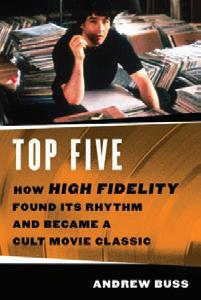 By DONALD LIEBENSON
By DONALD LIEBENSON
High Fidelity did not exactly do Barbie numbers when it was released in 2000. It brought in $47 million at the box o ce worldwide. Nor does it enjoy basic cable perennial status along such ubiquitously broadcast films as The Shawshank Redemption, Happy Gilmore, and Road House.
But especially here in Chicago, where it is set, High Fidelity has a fiercely devoted cult following who get this movie to their very souls, which is what compelled Chicago native and writer Andrew Buss to revisit the film on the occasion of its 20th anniversary and write an oral history on the making of the film and its cultural legacy for Consequence of Sound. That oral history has been expanded into a book, Top Five: How High Fidelity Found Its Rhythm and Became a Cult Movie Classic, to be released October 31 (Applause Books).
Buss’s off-center comedy worldview is reflected in the films he’s previously given the oral history treatment, including Airheads , Gremlins 2: The New Batch , Zoolander , and Superbad . But High Fidelity , he says, has a special resonance for him, from its Chicago neighborhood locations and Jack Black’s star-making clowning to its fraught love story. For Top Five, he spoke with, among others,
John Cusack and coscreenwriters D.V. DeVincentis and Steve Pink, director Stephen Frears, Black, Todd Louiso, Sara Gilbert, Fred Armisen, and Scott Rosenberg, whose original, scrubbed screenplay for the film sparked an accreditation battle with the WGA.
Buss spoke with the Reader about why High Fidelity tops his list of Chicago movies.
Donald Liebenson: I looked it up: High Fidelity was the 89th biggest box-o ce hit of 2000 between Love & Basketball and Book of Shadows: Blair Witch 2.
Andrew Buss: When I talked to D.V. DeVincentis, I said that what made me laugh is that in its opening week, it came in at number five, so the movie made it into the top five.
But 20 years later, it’s got this passionate cult following. You write that High Fidelity has a little something for everyone because there are so many working parts to it. What about the film resonates most for you and makes it oral history-worthy?
It’s cliche, but it was just a love for that movie, a connection with the source material, in-


cluding Nick Hornby’s book. It was a more everyday portrayal of Chicago you didn’t get in more commercial films, like Ferris Bueller’s Day O . But I really love the fact that there’s a movie with a deep love of pop culture; that’s something I can relate to. I can relate to the collector standpoint, someone who is really obsessing [over] the nitty-gritty detail of things. And, of course, you’ve got the universal story—everyone’s been through a breakup, everyone’s had that internal monologue. I have not gone to the extremes that John Cusack’s Rob has. That’s a whole other level.
What do you consider your top five films made in Chicago?
High Fidelity (2000), Thief (1981), The Fugitive (1993), The Blues Brothers (1980), and Planes, Trains and Automobiles (1987).
When did you first see High Fidelity?
They would have been cool parents if they took me to it when I was six [when the film came out]. I saw it when I was in college [Flashpoint Chicago, the now-shuttered campus of Columbia College Hollywood].
Does the film speak differently to you as you’ve grown up?
Absolutely. When I was younger, it was all about the Jack Black material. The broader and more comedic stuff gets ya. As I’ve become an adult [ Laughs ] and gone through relationships and all the shit you go through in your 20s, I relate more to the film’s introspective moments. We’ve all been there, trying to figure out where something went wrong.
Speaking of Jack Black, High Fidelity put him on the map, and his appreciation for the film really comes through in his contributions to your oral history. I can’t imagine the film—or the book—without him.
Jack was so helpful. Jack’s people initially told me he was unavailable, but for some reason, I was weirdly confident I would talk to him. I set up an interview with Todd Louiso. I get on the phone with him, and he drops the bomb, which is, “By the way, you’re talking to me and Jack Black.” And I’m like, “You and who?” For a split second, I thought Todd was using an old-school Jack Black soundboard, like they do on Howard Stern. It was such a great surprise, and I’m so happy it played out that way. I’ve got one more Jack Black story. Jack asked me to let him know once the book came out, so he could buy a copy. When I told him I’d send him one, he said, “That’s very kind of you, but I like to support the arts.” v
m letters@chicagoreader.com
This autumn, Cinema/Chicago presents the 59th Chicago International Film Festival.
By LAUREN COATESFrom locally produced independent movies to international gems and high-profile festival-season darlings, the Chicago International Film Festival has spent the past 59 years bringing the world’s most exciting titles to the Windy City. Starting October 11, CIFF will once again grace the halls of the Music Box Theatre (and a number of other local venues), delivering 150 films from more than a dozen countries to movie lovers across Chicago.
It would be nearly impossible to highlight all of the incredible films that were selected, but here are a few of the exciting titles moviegoers can expect at this year’s fest.
Following a block party outside the Music Box, CIFF will kick things o with the opening night feature: Minhal Baig’s We Grown Now, which will have its U.S. premiere on October 11 at 7 PM. Starring Blake Cameron James and Gian Knight Ramirez, the film tells the heartfelt story of a pair of ten-year-old boys exploring their neighborhood and savoring the joys of youth and boyhood. When their idyllic upbringing in Chicago is fractured by violence close to home, one of the boys’ mothers (Jurnee Smollett) struggles with whether to stay or move away.
Rooted in and based on the real-life experiences of Chicago’s Black community, We Grown Now promises to be a captivating chronicle of friendship and coming-of-age, anchored by a slew of powerful performances
from both newcomers and familiar faces. The film will also serve as the second CIFF entry for writer-director Baig, a Chicago native, following 2019’s Hala.
One of the most celebrated and prolific filmmakers of the 21st century, David Fincher will bring his severe stylistic sensibilities to Chicago with The Killer. Starring Michael Fassbender and Tilda Swinton, the film follows an assassin (Fassbender) who clashes with his employers after a near miss on the job. Partially shot in Chicago and featuring an o eat sense of humor alongside Fincher’s signature eye for detail and taste for high-stakes thrillers, The Killer is already one of 2023’s buzziest titles. Though it’s already made its worldwide premiere at a number of other festivals, its turn at CIFF will give Chicagoans a chance to catch The Killer on the big screen well before it’s set to drop on Netflix in November.
Continuing the trend of filmmakers who’ve already picked up plenty of buzz at previous festivals is Saltburn, Emerald Fennell’s sophomore feature film and the hotly anticipated follow-up to her 2020 breakout hit, Promising Young Woman . Starring Euphoria ’s Jacob Elordi and Banshees of Inisherin scene-stealer Barry Keoghan, Saltburn follows Oliver (Keoghan), a misfit struggling to fit in at Oxford who finds himself suddenly infatuated with his charming, handsome, uber-rich classmate Felix (Elordi).
When he scores an invite to Felix’s eccentric, historic family estate for the summer, Oliver is plunged into a strange, psychosexual world of wealth and deception—and the result is a viewing experience that critics have likened to doing “a line of coke o a copy of Brideshead Revisited.” With an ensemble cast filled out by the likes of Carey Mulligan, Richard E. Grant, and Rosamund Pike, Saltburn is sure to be a festival highlight—and CIFF attendees will be able to catch it months before its wide release in December.
Among this year’s “special presentations” is another high-profile film with a Chicago connection: Eric LaRue, the first-time feature from Academy Award-nominated and Chicagoraised actor Michael Shannon. Based on screenwriter Brett Neveu’s stage play of the same name, Eric LaRue follows Janice (Judy Greer), a shell-shocked mother who struggles to navigate her life in the wake of a school shooting carried out by her son.
Greer has built a thriving career playing luminous supporting roles, but Eric LaRue promises to give the fan-favorite actress the meaty, emotional leading turn a performer of her talent has always deserved. Though Shannon may be best known to moviegoers for his expansive and varied filmography as an actor, Eric LaRue will give audiences an insight into his sensibilities and perspective as a filmmaker.
As strong as American films are, though, it wouldn’t be CIFF without a robust lineup of international features—last year’s crop of 94 features and 56 shorts included entries from 53 countries, and the 2023 crop is sure to be just as expansive. Among the many eye-catching international features is Anatomie d’une Chute or Anatomy of a Fall, the Cannes Palme d’Or-winning entry from French filmmaker Justine Triet.
The film follows German writer Sandra Voyter (Sandra Hüller) who’s arrested following the mysterious death of her husband (Swann Arlaud) in France. With their son (who’s blind) as the only witness to her husband’s death, a tense courtroom drama ensues as Sandra strives to prove her innocence. Serving as both an international entry and a part of the “Women in Cinema” program, Anatomie d’une Chute’s time at CIFF will be one of the few chances American audiences have to catch Triet’s “tension-filled opus” at all, let alone in a theater.


In addition to screenings at venues throughout the city (including AMC Newcity 14, the Gene Siskel Film Center, the Chicago History Museum, and several Chicago Park District locations), CIFF will also continue to offer select virtual screenings that attendees can access via a dedicated festival streaming platform. The full festival lineup is now available via the CIFF website, and general public pass redemption and tickets will be on sale September 21 and 22, respectively. v
m letters@chicagoreader.com











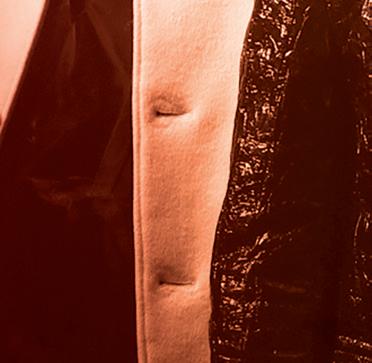







Chicago’s LGBTQ+ international film festival celebrates its 41st year with stories of found family, gay disco, bigoted parasitic worms, and more.
By ANDREA THOMPSONThe “second longest–running film festival of its kind,” Reeling International Film Festival is back to showcase a dizzying array of LGBTQ+ content, from campy horror to historical documentaries. Continue reading, and you’re sure to find something which appeals.
The Mattachine Family
Bring tissues, because Andy Vallentine’s The Mattachine Family packs plenty of feels, showing how longtime Los Angeles couple Thomas (Nico Tortorella) and Oscar (Juan Pablo Di Pace) react to their foster child being reunited with his birth mother. As Oscar’s acting career kicks o and he departs for long periods for filming, Thomas is left floundering and seeking comfort from his close-knit group of friends, all of whom are also contemplating what it means to find and create a family.
The winner of the Teddy Award at Berlinale, Colours (dir. Babatunde Apalowo) is a tenderly brimming love story between delivery driver Bambino (Tope Tedela) and photographer Bawa (Riyo David). After the two meet and tour Lagos together, their affection blooms beyond the photographs that are a chronicle of their time spent. But in Nigeria, where homosexuality is illegal and every move is closely monitored, the potentially deadly consequences are always just out of frame. And Bawa must overcome far more than his selfdoubt if he wishes to keep the man he loves in his life.
The city shines bright in Emily Railsback’s very improvised feature about two women who may have to depart their much-loved home for a new one in order to survive. Elsie (Kristen Bush) and Bette (Rebecca Ridenour) are struggling to raise their toddler daughter
in the midst of the pandemic, which has them grappling with the possible loss of their apartment. When Elsie learns she may soon receive a job o er that will solve their financial woes but will require a move to Oklahoma, the two must determine what will best serve the family they’ve fought to build.
As we continue to contend with the legacies of our cinematic heroes, writer-director Sav Rodgers takes a complex look at the film he credits with saving his life as a queer teen in Kansas: Chasing Amy (1997). Years later, Rodgers has a much different relationship with the film, and a friendship with director Kevin Smith, who is among many he interviews about what Chasing Amy means to them now. As the documentary also contemplates the 90s indie film scene, which often rewarded men like Smith at the expense of queer filmmakers, Rodgers likewise takes a personal journey onscreen as he realizes he’s a trans man.
Gen Z needn’t feel left out of the road trip genre thanks to the TikTok-funded Egghead & Twinkie (dir. Sarah Kambe Holland), which follows the titular BFFs—the straight, nerdy Egghead (Louis Tomeo) and Twinkie (Sabrina Jieafa), a recently out lesbian—as they hit the road after Twinkie’s online crush invites her to a lesbian dance party in Texas. True to the spirit of its intended audience, there’s hilarity, shattering realizations, and plenty of mangaand anime-inspired visuals.
Need more Lily Gladstone in your life for your pre-Killers of the Flower Moon fix? The Sundance feature Fancy Dance , directed by Erica Tremblay, has you covered; the film sees Gladstone’s Jax struggling to regain custody of her niece Roki (Isabel Deroy-Olson) after the disappearance of Roki’s mother. Jax is
aware of the odds against her sister’s return, especially with local authorities unwilling or unable to investigate missing Indigenous women. After Jax kidnaps Roki from her white grandparents, the duo dodge the authorities while pinning their hopes on the upcoming powwow to keep their family together.
Chicago-based filmmakers Colby Holt and Sam Probst aim to get under your skin with this southern gothic coming-of-age tale. Lee (Jordan Doww) is the repressed son of a local and very homophobic small-town politician who finds himself haunted (or perhaps awakened?) by a dark spirit after he develops feelings for his classmate Kyle (Pablo Castelblanco). As the weight of his father’s name and expectations begin to drag Lee under, the biggest question may be which version of the south will win in the end.
If Baz Luhrmann orchestrated a TikTok-inspired extravaganza overseen by Charli XCX, chances are it would look quite a bit like Tom Gustafson’s musical Glitter & Doom
When angsty aspiring musician Doom (Alan Cammish) and free-spirited circus performer Glitter (Alex Diaz) meet, this grumpy sunshine pairing is sparkling perfection, thanks in no small part to its fuel of choice, the music of the Indigo Girls. Filmed in Mexico City, the lush visuals include plenty of shout-outs to the movie’s many inspirations, but it’s the irresistible love story that ultimately propels it.
It is a truth universally acknowledged that everyone loves an underdog. And in Timothy Harris’s documentary, Malcolm Kenyatta, a “poor, gay, Black man from North Philly,” certainly fits any description of one as the Democratic state senator turns his ambitions to the U.S. Senate in 2022. As fierce an advocate for the
marginalized as he’s a formidable opponent to Republican cruelties, Kenyatta’s determination as he navigates various political obstacles— sans the funds the system demands from its candidates—is inspiring in itself. But stay for the complex questions people of color face in such a reality, especially as they contend with that oft dreaded word: electability.
Sometimes what an artist must fight for most is their due, and this documentary makes it clear how much (and how long) Ayo Leilani, aka Witch Prophet, a queer, immigrant Ethiopian Eritrean musician, has been putting in the work. Yet even momentum can have its problems, and Leilani’s struggle to remain in music goes hand-in-hand with her fight to remain proudly herself as she creates her latest album. Director Loveleen Kaur utilizes performances and deeply personal footage as she depicts the internal and professional life of an artist and her community.
West Hollywood’s Studio One would’ve made history for being the first gay disco, but it also saw a dizzying array of stars, from Liza Minnelli to Cary Grant, as patrons. Its rich history is far beyond celebrity name-dropping, with Marc Saltarelli’s documentary including footage from the decades its doors stayed open, and its darker, racist moments. It’s the third act that’s the most devastating, as various talking heads, both celebrity and civilian, recount still-lingering trauma and survivor’s guilt from the horrific ravages of AIDS.
Prolific trans teen filmmaker Alice Maio Mackay’s T Blockers is absolutely boiling with rebellion and middle fingers at the ready, unapologetically embracing camp and meta sensibilities. The movie follows Sophie (Lauren Last) and her group of queer friends, who are tight-knit in the way people under siege tend to be. As they cope with viciously anti-LGBTQ+ politicians, and friends begin disappearing, Sophie senses an evil that is eerily reminiscent of a rediscovered 90s horror film from a trans filmmaker about parasitic worms that spread bigotry. When the terror proves to be all too real, Sophie and her crew fight back in the face of alt-right rallies and despair, and T Blockers forces us to question our ability to recognize monsters and oppressive regimes alike. v
REELING: THE 41ST CHICAGO LGBTQ+ INTERNATIONAL FILM FESTIVAL Thu 9/21 –Sun 10/8, locations vary Festival passes $ 50 –$180 for members, $ 55 –$200 for nonmembers Single streaming tickets $10 ; single in-person tickets $10 for members, $12 for nonmembers (excludes special admissions), reelingfilmfest.org


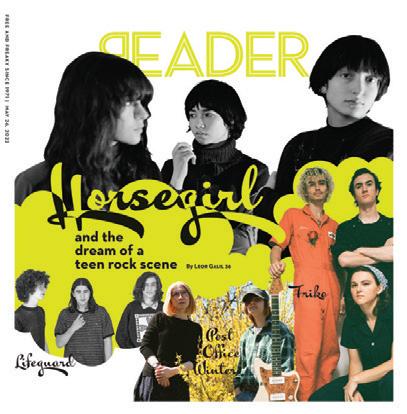


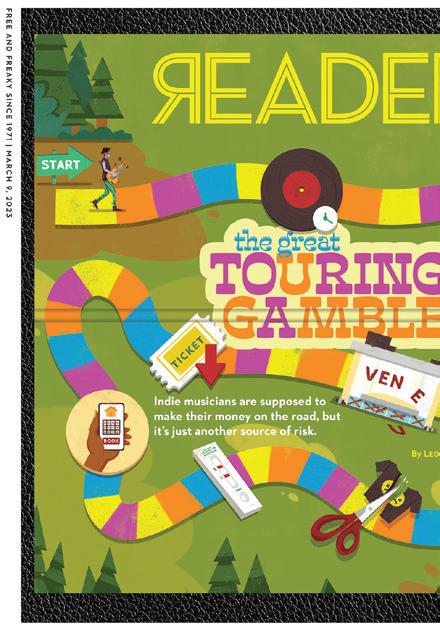










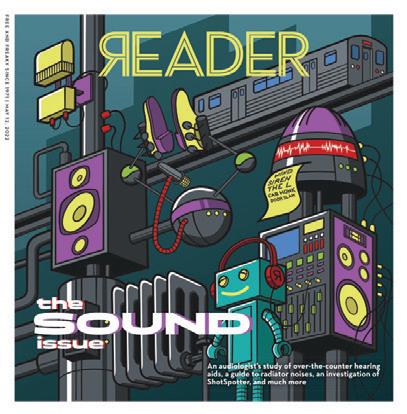








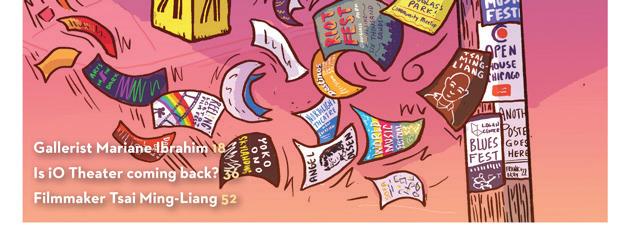



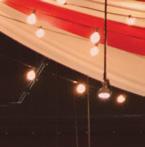
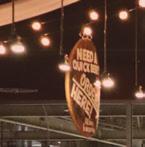


































In 2021, when the world was barely out of COVID lockdown, something weird happened in the stock market. Spurred by an unknown investor and YouTuber named Keith “Roaring Kitty” Gill and the rise of Reddit’s WallStreetBets forum, millions of amateur traders started buying shares of GameStop. Gill and his fellow investors had figured out that big-money hedge funds were shorting the stock, meaning they were betting against the company, and in an attempt to both make money and screw over those funds, they decided to get behind the brand, driving the stock’s price from about $.40 a share to well over $300. The world was suddenly introduced to phrases like “Diamond Hands” and “words” like “HODL,” and—up until some suspect intervention by Washington, hedge fund billionaire Ken Griffin, and the questionable CEOs of trading app Robinhood—a whole lot of regular people got very, very rich (on paper, at least).
With Dumb Money, Hollywood attempts to capture all that weirdness in one movie, with director Craig Gillespie (2017’s I, Tonya) embracing the inanity of Keith Gill’s suburban Massachusetts life, with his basement laundry room, pathetic YouTube setup, and love for frozen chicken tendies. Gill is played by Paul Dano, who is simultaneously triumphant and a little bit sad, choosing to go all-in on GameStop not because he believes in the product, necessarily, but because he believes in the power of the individual investor over the Wall Street behemoths that prey on individuals, who they call “dumb money.” He’s joined onscreen by a robust cast of entertaining players including Seth Rogen, Vincent D’Onofrio, Shailene Woodley, Nick Offerman, Pete Davidson, America Ferrera, Anthony Ramos, and Sebastian Stan, all of whom seem fully invested (har har) in making the movie sing.
It’s to the cast and Gillespie’s credit that Dumb Money is as good as it is, because the actual “story”
behind the rise of GameStop’s stock is a little cerebral, even if it involved a bunch of first-time investors who didn’t know their NASDAQ from their NYSE. Unlike The Big Short, which took financial issues and made them seem ridiculously tongue-in-cheek, Dumb Money sort of bathes in the mundanity of it all, doing its best to explain short squeezes, balance sheets, and call options while still focusing on the individual human beings who, arguably, should stand to benefit most from a stock doing well. It’s a combination that works, making the movie both tense and triumphant, frustrating and fun. Any cash and time moviegoers choose to spend on Dumb Money will be well invested, indeed. —MARAH EAKIN R, 104 min. Wide release in theaters
A Haunting in Venice officially derails Kenneth Branagh’s rebooted Agatha Christie films. And Branagh himself is the main culprit. The third installment of the revived Hercule Poirot series, following Murder on the Orient Express and Death on the Nile, embodies everything awry with Branagh’s quirky mustache-detective whodunits, from gaping plot holes to unconvincing performances. Unfortunately for us, the movie teases its potential several times, but nearly every time, it opts for more gimmicky tricks than suspenseful treats.
In a film reliant on (far too many) jump scares and twists, a surface-level synopsis is the best route. A Haunting in Venice opens with a retired Poirot (Branagh) living contentedly in isolation. It’s Venice in the late 1940s (though no one seems to try very hard to make us believe that). His retirement is interrupted by an old friend, Ariadne Oliver (Tina Fey), who approaches his doorman-bodyguard combo (Riccardo Scamarcio) with an apple. Vexed by a medium, played with the most conviction by Michelle Yeoh, Oliver invites Poirot to a seance at an allegedly haunted mansion where a young woman died. Not to mention, it’s Halloween night. A er several deaths, the skeptical Poirot falls prey to the haunting visions. And so on.
Admittedly, A Haunting in Venice has the makings of a memorable whodunit. Agatha Christie wrote it. But, to no one’s surprise, the movie emerges discordantly. In many ways, the problem stems from its underutilized cast. The story, like any good whodunit, introduces a dynamic ensemble—a doctor, an Edgar Allan Poe-obsessed child, a conflicted nun, a money-grubbing ex-fiancee, a tricky medium and her assistants, a mourning mother, and an ex-policeman—played by several star-power players. Still, the film resembles a high school production, where more legwork to expound these characters is in the dialogue than the performances. But strangely enough, the same can’t be said about Branagh’s Poirot, the only character given a significant morsel of attention. Now, there’s a mystery for us. —MAXWELL RABB PG-13, 103 min. Wide release in theaters
My Big Fat Greek Wedding 3 is aware that it’s yet another sequel in a franchise launched by a 21-yearold hit movie. It recycles jokes from its previous installments (Windex as a cure-all! Aunt Voula’s neck lump! All words being derived from Greek!), the characters baldly state their motivations, and both its plot and emotional beats just sort of happen.
The latest addition to the franchise follows Toula (Nia Vardalos, who also wrote and directed the film), husband Ian (John Corbett), and the rest of the Portokalos family as they travel to Greece ostensibly for a family reunion. Toula struggles with the changing dynamics in her family, namely the death of her father Gus (Michael Constantine in previous films), ailing health of her mother Maria (Lainie Kazan), and parent-child dynamics with her college-aged daughter Paris (Elena Kampouris).
The film juggles a handful of plot lines and characters, old and new, giving the film an overcrowded feel but also a lack of momentum for much of the run time. As a result, some characters, most notably Ian, are le without anything interesting to do. This juggling act is best exemplified in the final third, where multiple plot
points converge and effortlessly resolve within a matter of minutes. Most of the performances are rather stilted, save for franchise standout Aunt Voula (Andrea Martin), who can always be counted on to comedically bring the house down.
In spite of its third-film shortcomings, My Big Fat Greek Wedding 3 has some genuine laughs and a healthy dose of heart, primarily related to familiar themes of family and multicultural connection. Fans of the franchise will leave the theater satisfied, and its lighthearted tone makes for a fun, if not fluffy, night at the movies. —EMMA OXNEVAD PG-13, 92 min. Wide release in theaters
Against my best instincts, I’ve got to hand it to The Nun II. The chronology of the extended Conjuring universe reads like a Möbius strip at this point—this is a sequel to a spin-off of a sequel, which also acts as a distant prequel to the original The Conjuring—but instead of wasting time trying to make sense of that, director Michael Chaves sidesteps the never-ending lore to treat us to a pleasantly creaky haunted house experience.
The film is cowritten by Akela Cooper (alongside Ian Goldberg and Richard Naing), who was behind 2023’s most prominent entry into the New Queer Cinema canon, M3GAN, and her creative presence is felt. Like M3GAN, this works better as a string of loosely connected set pieces than it does as a dramatic work. Most of the plot’s heavy-li ing is dealt with in the first half, during which we’re given updates on all our favorite characters: Sister Irene (Taissa Farmiga) is back, and this time she’s Indiana Jones-coded and on a quest for a biblical artifact! And who could forget Frenchie (Jonas Bloquet), the demonically-possessed farmer with a heart of gold?
These narrative-driven stretches mostly amount to scary movie white noise, but once they sort out the logistics of why the eponymous nun Valak (Bonnie Aarons) is causing a ruckus at a French boarding school, we settle into a frenetic rhythm of teens scurrying from room to room for 45 minutes and discovering increasingly baroque terrors behind every door. Bugs! Monsters! Ghost children! The Catholic horror wheel isn’t reinvented, and Valak isn’t a movie monster so much as she’s a composite sketch of one, but the jump scares are so nonstop and occasionally clever that I was le wondering: is this the most fun I’ve had at the movies all summer? —JOEY SHAPIRO R, 110 min. Wide release in theaters






























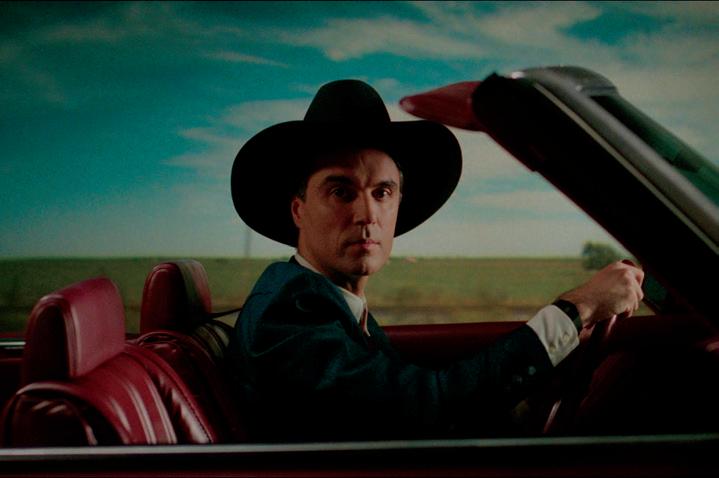
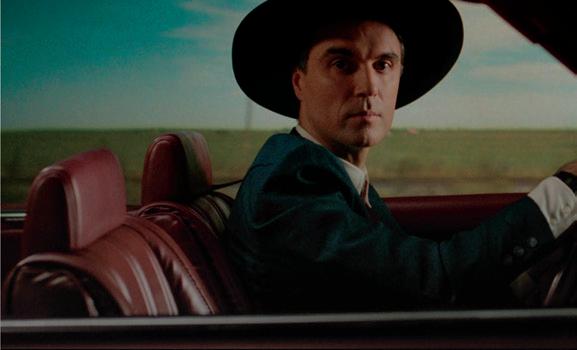
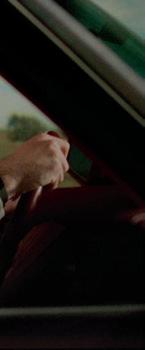



















I discovered the work of videographer Josh Horton through local music-media outlet Real Ones, which began as a podcast in 2020 and evolved to produce concerts and shoot interviews with local and national artists. Horton has shot Real Ones interviews at several festivals. He immersed himself in Chicago’s overlapping hip-hop and R&B scenes after graduating from Washington University in 2021 and returning here from Saint Louis. In those couple years he’s gotten involved in a lot of projects, and he’s recently begun collaborating with rapper and chef SoloSam, whose B-Eats parties bridge the worlds of music making and culinary arts.
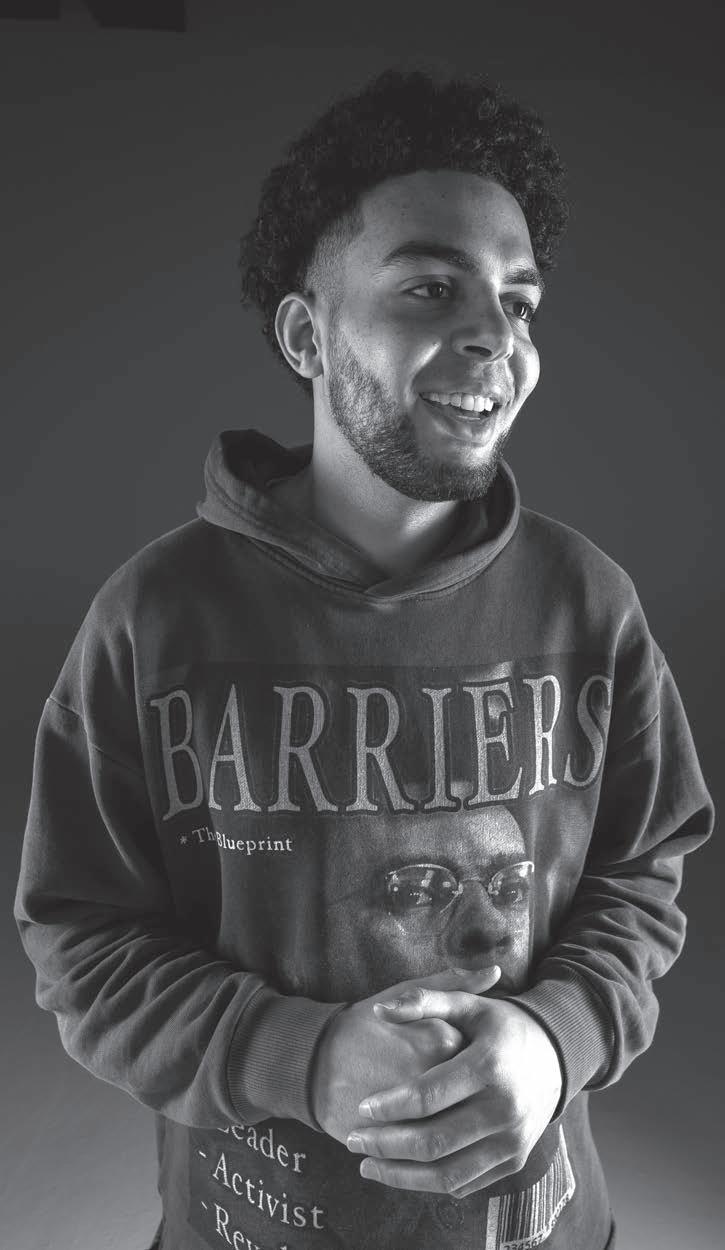
Igot interested in making videos in late 2017. I was in my first year of college at the time, and I didn’t really have a great idea of what I wanted to do as a career. But I got inspired by watching a lot of music content on YouTube. Music videos, performance videos, and interviews—tour blogs, even. I’m also really into listening to music. I’ve always been a passionate fan of the music scene, and getting a behind-the-scenes look at the industry was always interesting to me.
It wasn’t until summer of 2018 that I picked up a camera and started actually shooting videos. Around that time, my brother also got into making music, so I was just shooting his music videos. We were just running around—it was really fun. I was just shooting random things with my friends. But it wasn’t ever something too serious, and I wasn’t ever getting paid anything for it.
Then in 2019, I started shooting shows— like, performances. Me and my friends were going to a lot of underground rap shows. So I began either hitting up friends I knew who were throwing shows or who were performing—that were artists—who could let me shoot. That was really cool, just to get into the scene there, but it didn’t really turn into much. I was still going back and forth from school,
between Chicago and Saint Louis.
It felt hard to find opportunities when I was first getting into it. I didn’t really know much; I didn’t think my stu looked that good. But I was just trying to shoot as much as I could. I was doing stu while I was at school as well.
At the time, I had a couple di erent video internships through that, so I was getting onto some sets—just learning how the industry worked. That was my college experience.
I was a film major. I graduated in 2021. So when I moved back home to Chicago, since then I’ve been connecting a lot more and building a base here. That’s when I connected with people like Juicebox Collective. They threw some DJ events and day parties in Chicago.
I had a couple friends that put me on, and I ran with it. One of my brother’s friends, his name is LaSalle Grandeur—that’s his artist name. He put me on with Juicebox Collective; he just knew that I was into shooting videos. I pulled up to shoot one of their events, and I feel like just being consistent in my work, they [kept] hiring me.
That’s how people started to notice my work, and then that’s how I got put on with Real Ones. That’s been a great connection for me, because they’re also running around the city trying to make genuine connections.
“Giving people that fly-on-the-wall perspective on what it’s like to be in the scene is really interesting to me. That’s the visual language I’m trying to develop.”
As told to LEOR GALIL

continued from p. 50
Stuff like that—being a genuine person and being consistent in my work—has gotten me a long way.
I’m really into cameras in general. I work at a camera store and rental house in Chicago, Dodd Camera. I started that in April of this year. I’ve always been into the technical aspect of things. As I’ve learned more, especially this year, I’ve been feeling like I’m growing really quickly and getting better at what I’m doing.
It doesn’t have to be about making [the video] look good—it’s really just about the story you’re telling. I’m trying to focus on both aspects, but I’m trying to really focus on the stories at this point. I’m really into documentary work as well, so I feel like giving people that fly-on-the-wall perspective on what it’s like to be in the scene is really interesting to me. That’s the visual language I’m trying to develop, as far as being present but not being intrusive and seeing how this music scene works.
This past year I’ve been doing a lot of production-assistant work for corporate jobs, and that kinda turned into, through connections, a big music video. An assistant camera [operator] that I work with, he’s also a director of photography. His name’s Patrick Dowdle. He knew I was interested in the music scene. When he got the opportunity to work on a Vic Mensa and Chance the Rapper video [“$wish”] earlier this year, he just hit me up: “Yo, they’re looking for a production assistant.”
Doing this—being a PA and trying to be the best PA I could—the producers really liked me. I’ve been hired back on a lot of big music videos in the city. The things in 2017 that inspired me—it’s been a full-circle thing, this whole year, as far as actually seeing how those things are made. I’m still trying to get to a better place myself, as far as shooting those types of things. I wanna do AC [assistant camera] work—I’m very inspired by all the stu I saw on a lot of those sets.
I was definitely mystified for the first couple years, coming into things, and I feel like there’s a lot of stu I don’t know, especially on these high-level productions. But people are genuine; people are willing to reach out.
I think mentors are really important. If you can find someone that can show you the ropes a little bit—a lot of people in this industry can be really nice and really helpful, if you reach out to them. At first I wasn’t super into reaching out to people. I would wait for stuff to come to me. Just being able to actually ask these questions and figure
out technical things—or even just our creative process—has been something I’ve been trying to do.
I’ve been shooting a lot with Real Ones. They put me on with this artist, SoloSam, who got me into shooting the Summer Smash festival this year; we were shooting videos for Lyrical Lemonade, and that has been amazing. That was my first time shooting a festival. So the fact that I was able to come in there and shoot interviews for them and be around all of my favorite artists at the time was a wild weekend for me.
I got on with SoloSam—I shot one event, one of his B-Eats events he’s done. He was like, “I need you to shoot more things for me,” and we were doing Summer Smash. It was a crazy experience, and we’re gonna work on more things together. With Real Ones we shot two festivals—one day we were at From the ’Go shooting interviews, and then the Silver Room Block Party shooting a couple things. So that was really fun.
At first I didn’t know how to go about making friends in the industry, but it’s really come naturally, I guess. I’m still trying to connect with a lot more people. I’m trying to be nice to everybody I meet. I really, genuinely want to have interest in what other people are doing and recognize if you want to work with someone—how they can help you out, how you can help them out.
If you want to make anything collaborative, it’s all about listening and being someone’s assistant—so they want to work with you more, so they know what they’re getting. That’s how it’s been recently for me, the past couple of months.
I don’t even know how far I want to take this stu . I feel like a lot of times people will get comfortable where they’re at, so I’m trying to push myself. Like I said earlier, I’m interested in documentary work. I’m trying to make something in the future: some type of behindthe-scenes with an artist or a couple artists. I have a lot of [other] interests as well. I’m interested in sports. That’s why I got into videography in the first place, is because I was watching so much media—just of everything in general. I’m like, “I could make something like this.” At the end of the day, I’m just really into making visual stu . I was into 3D animation a bit in college; I’m trying to get back into more of that. Being a creative has been something that’s been fun for me, and I don’t know exactly where I’m going to take it. v m lgalil@chicagoreader.com





































Recommended and notable shows with critics’ insights for the week of September 21
Wed 9/27, 8 PM, the Promontory, 4311 S. Lake Park West, $15 early bird, $20 in advance, $150 couch section (six tickets, bottle purchase required). 21+
Cold Waves XI kickoff show See also Fri 9/22, Sat 9/23, and Sun 9/24. Riki headlines; Male Tears, Clubdrugs, and Scary Lady Sarah (DJ set) open. 9 PM, Sleeping Village, 3734 W. Belmont, $26.78. 21+
The Cold Waves festival was founded in Chicago in 2012 as a memorial for local sound engineer and musician Jamie Duffy, who’d played in industrial groups Acumen Nation and DJ? Acucrack. It began as a one-day concert packed with the darkwave and industrial music that Duff y loved, and it raised money for his family and raised awareness around suicide prevention, particularly for people in the nightlife biz. Since that first year, Cold Waves has expanded to Los Angeles and New York, with a cornerstone four-night festival in the city where it was born. A portion of this year’s proceeds benefits charities supporting mental health, among them Chicago nonprofit Darkest Before Dawn.
ACCORDING TO THE MAN HIMSELF, Reese LaFlare doesn’t get the credit he deserves—but the way things are going, that could change any minute. The rapper and record producer also known as Maurice Williams has been a more influential force in the modern Atlanta trap scene than many have noticed. He was experimenting with cadence, harmony, and production styles within trap music before it was a thing. Born in Birmingham, Alabama, the self-proclaimed “Fairfax kid” was a Nike-sponsored skateboarder who rode through the streets and frequented skate shops in Los Angeles and Atlanta before launching his rap career. Being a stylish dude in the right places at the right times a orded him chance meetings with rappers and executives such as the Cool Kids, DJ Drama, and Don Cannon, the last of whom hosted LaFlare’s first two mixtapes, 2011’s Reese vs the World and 2012’s Reese vs the World 2.
LaFlare’s die-hard fans will tell you that his subsequent features and
mixtapes have been influential, and just as his fashion propelled his rap career, he’s now using his rapping to push his fashion. In 2020 LaFlare became a fashion dealer with his own line, Diva; he began dropping accompanying mixtapes of the same name right after its launch. LaFlare’s slow and steady growth has landed him squarely in the company of those he’s influenced, and these days it seems like he’s quickly approaching the success he’s been aiming for since 2012.
His latest tape, Diva Vol. 4, contains a crazy roster of features, including Ty Dolla $ign and Benny the Butcher, and continues his impressive run of “if you know, you know” trap tunes. LaFlare has cosigns from damn near every major rapper, including Drake and Gucci Mane, so it’s only a matter of time before he’s a household name himself. While he’s previously held down opening slots for stars such as Wiz Khalifa, this headlining show provides an opportunity to see him up close on his ascent. —CRISTALLE
 BOWEN
BOWEN
Cold Waves XI features the usual carefully curated roster of genre pioneers, newcomers, and cult heroes. The kickoff party at Sleeping Village on Thursday, September 21, includes live sets from LA synth-pop artist Riki (who’ll also DJ at Smart Bar on Friday), California EBM-new wave hybridizers Male Tears, and Chicago goth-pop act Clubdrugs, plus a DJ set from local goth mainstay Scary Lady Sarah. The fest then moves to the Metro complex from Friday through Sunday, where the headliners include theatrical UK outfit IAMX (the brainchild of Sneaker Pimps cofounder Chris Corner, who merges cabaret, electronica, and synth-pop), Canadian electro-industrial chameleons Front Line Assembly (best known for the melodic, intricately layered sound they perfected on the classic “Mindphaser”), and pioneering UK industrial-metal outfit Godflesh (whose guitarist and vocalist, Justin Broadrick, will also play a techno set at Smart Bar as JK Flesh). Among the many other standouts are Italian dancenoise trio Ash Code, Texas darkwave darlings Twin Tribes, LA electro-pop chanteuse Kanga, and Oregon industrial outfit Lead Into Gold (the 80s and 90s project of former Ministry bassist Paul Barker, which he resurrected in 2015). All three-day and VIP passes are sold out, but at publication time singleday tickets were still available for every show. This weekend, when you apply your black eyeliner and pull on your best dancing boots, you can do it for a worthy cause.
—JAMIE LUDWIGInstigation Festival day one See also Fri 9/22, Sat 9/23, and Sun 9/24. Ibises (Dan Bitney, Nick Macri, and Steve Marquette) headline, with guests Aurora Nealand and Anton Hatwich; Damon Locks & Sasha Masakowski open. 8:30 PM, Elastic Arts, 3429 W. Diversey #208, $15, $10 students. b
The Instigation Festival is a semiannual transcontinental series that unites improvising musicians and other artists from Chicago and New Orleans. As it makes its eighth return to the city, it’s become such a tradition that it could just as easily be called the Continuation Festival. Instigation’s programming is split between New Orleans and Chicago, and this year’s local concerts pick up where their Big Easy
counterparts le off in February. Highlights of the fest’s four nights of performances across the city include multi-instrumentalist Aurora Nealand premiering her piece The Bowl of Communal Howling, composed for the 13-piece Instigation Orchestra, at the University of Chicago’s International House on Saturday. (That set is also part of the Hyde Park Jazz Festival, which runs Saturday and Sunday.) And on Friday night at Links Hall, a series of collaborations among musicians and video and movement artists will culminate in all 11 participants uniting for a collective improvisation.
Other enticing billings bring just two performers into dialogue with each other. Vocalist, composer, and producer Sasha Masakowski (daughter of esteemed Astral Project guitarist Steve Masakowski) closed the New Orleans festival with a DJ set; she opens the Chicago festival in an electronic duo with probing sound artist Damon Locks at Elastic Arts on Thursday night. On Friday, two prominent cello-playing Helens—Helen Gillet and Helen Money—share the stage at Constellation, and on Sunday, Jon Irabagon and Dan Oestreicher play a floorboard-rattling duo on bass saxophones at Hungry Brain. (You read that right: bass, not baritone.) Inexhaustible New Orleans bassist James Singleton, also of Astral Project, closes the festival in a quartet with Chicagoans Jim Baker, Ben Lamar Gay, and Quin Kirchner—they’re ostensibly playing selections from Singleton’s album Malabar, but knowing him, I’d expect plenty of devilish detours.
—HANNAH EDGAR
Melody Angel Part of the festival Chicago Live!, which continues Sun 9/24 and features three stages of music, dance, theater, and more. Complete schedule at navypier.org/chicago-live.
6:30 PM (entertainment from noon till 9 PM), Wave Wall Stage, Navy Pier, 600 E. Grand. F b
This concert is something of a homecoming for Chicago blues guitarist and singer Melody Angel, who’s wrapping up the first major tour of her career in support of her latest self-released album, Indie Blues Girl, which came out in June. By Angel’s own account, the album represents an affirmation of identity and a celebration of survival. She’s always been rooted in the blues, but her eclectic sound and blunt, socially conscious lyrics have nettled some purists through the years. (“I’m not going to just wait on the ‘blues community’ to be OK with me all the time,” she told me in a 2021 interview. “I have to be true to myself.”) On “Blues in My Hands,” the anthemic, hard-rocking 12-bar blues that opens the album, she proclaims her refusal to be tamed: “I know you’re scared now, I’m taking over / I’m getting bolder and bolder,” she sings. “Your opinion don’t impress me / Your dirty looks now keep me smiling.”
Cold Waves XI night one: Metro See Thu 9/21. IAMX headlines; Twin Tribes, Ash Code, Nuovo Testamento, Harsh Symmetry, and Bloody Knives open. 7 PM, Metro, 3730 N. Clark, $50. 18+
Cold Waves XI Night ONe: Smart Bar See Thu 9/21. Street Fever headlines; Club Music, Riki (DJ set), and Richard 23 (DJ set) open. 11 PM, Smart Bar, 3730 N. Clark, $25, $20 in advance. 21+
Instigation Festival day two: Constellation See Thu 9/21. A quartet of Quin Kirchner, Ben LaMar Gay, Dan Oestreicher, and Macie Stewart headlines; Helen Gillet & Helen Money open. 8:30 PM, Constellation, 3111 N. Western, $15. 18+
Instigation Festival day two: Links Hall See Thu 9/21. This improvised performance combines musicians and video and movement artists in several groupings: first a quartet of Kim Alpert, Paige Brown, Keisha Janae, and Kai Knight; second a quintet of Jeff Albert, Aaliyah Christina, Keisha Janae, Kristal Jones, and Olula Negre; third a quartet of Irene Hsiao, Sasha Masakowski, Olula Negre, and Cristal Sabbagh; and finally an ensemble of all 11 participants.
7 PM, Links Hall, 3111 N. Western, $16. b
Angel broke onto the citywide scene a little more than a decade ago, and in that time her guitar work has become increasingly focused and expressive. Though she remains true to the spirits of her initial inspirations, Prince and Jimi Hendrix, she doesn’t try to replicate their technical wizardry. Instead she borrows from them to forge a distinctive voice of her own, with precision and dexterity that never tip over into pyrotechnic overkill. Her vocals have also toughened and deepened, mining emotional complexity that listeners might associate more with soul, old-school R&B, or adult-oriented pop. Several semi-acoustic numbers on Indie Blues Girl allow Angel to revisit her love of folk-pop balladeers such as Tracy Chapman, but even when her music soens its tone, her message retains its bite. “Down to the River’’ invokes the racial prejudice and cultural appropriation that Black people continue to face in America; “I’ll Tell You” and “No Second Chances” portray the bleakness of inner-city life; “He’s a Man” praises a hard-bitten Black man for his strength and resilience; “Survivor’s Guilt” describes the torment of losing a loved one who’s “shot in the back running away” at the age of 19. Album closer “Hold On” is a spiritual song of perseverance through struggle with a cameo by Angel’s mother, vocalist and actress Stephanie Crystal, who also sings backup at her shows.

Angel’s music never tries to deny hardship or grief, but as exemplified by “Blues in My Hands,” its heart is celebration. This outdoor gig at Navy Pier should let her show off a side of herself she rarely has room for on cramped club stages—an impressive armamentarium of spins, leaps, guitar acrobatics, and spontaneous dance moves. As poet Toi Derricotte put it, “Joy is an act of resistance.”
—DAVID WHITEISCOLD Waves XI Night Two: Metro See Thu 9/21. Front Line Assembly headline; A Split Second, 16 Volt, Acumen Nation, Kanga, and Mvtant open. 7 PM, Metro, 3730 N. Clark, $50. 18+
Cold Waves XI Night Two: Smart Bar
See Thu 9/21. JK Flesh headlines; Enduser and Zoltar (DJ set) open. 11 PM, Smart Bar, 3730 N. Clark, $25, advance tickets sold out. 21+
Hyde Park Jazz Festival day one
See also Sun 9/24. Today the festival takes place at 13 venues around the neighborhood, including two outdoor stages on the Midway Plaisance, Rockefeller Chapel, two halls at the Logan Center for the Arts, the Smart Museum, Hyde Park Bank, and the DuSable Museum. 1 PM-midnight, complete schedule at hydeparkjazzfestival.org, $10 suggested donation. F b
The Hyde Park Jazz Festival may bear the name of a single neighborhood, but it’s a world-class event. The programming draws heavily from local talent, but Chicagoans such as saxophonist Ari Brown and vocalist Dee Alexander have earned international profiles. And the performers from elsewhere include the likes of Detroit drummer Louis Hayes and Philadelphia pianist Kenny Barron, both of whom have been recognized as jazz masters by the National Endowment for the Arts and worked extensively with major figures in bebop, hard bop, and beyond. If there’s a theme that unites the artists on this year’s bill, it’s the ways new alliances facilitate musical growth. Local vibraphonist Jason Adasiewicz will present his solo arrangements of compositions by Art Ensemble of Chicago founder Roscoe Mitchell. Bassist Luke Stewart, who’s from Washington, D.C., presents his combustible Exposure Quintet, which unites representatives of different Chicagoan free-jazz scenes: Edward Wilkerson Jr., Ken Vandermark, Jim Baker, and Avreeayl Ra. The Instigation Orchestra combines musicians from Chicago and New Orleans to present a new composition by tradition-steeped avant-garde saxophonist Aurora Nealand, a performance that’s also part of the concurrent Instigation Festival. A trio led by Italian bassist Silvia Bolognesi, who recently toured with the expanded Art Ensemble of Chicago, will partner with local alto saxophonist Nick Mazzarella to realize a new postbop suite, Storia di un Femminiello, that celebrates the roles played by ambiguously gendered individuals in Neapolitan popular culture. The trio Artifacts, which originally formed to present classic compositions by members of the Association for the Advancement of Creative Musicians, will collaborate with new-music group Ensemble dal Niente to present new work by the flute player in Artifacts, former Chicagoan (and former AACM chair) Nicole Mitchell. And Ches Smith & We All Break, which combines six Haitian singers and percussionists with Smith’s quartet, will perform a life-affirming program that absorbs his original tunes into traditional Vodou songs. —BILL MEYER
continued from p. 55
Instigation Festival day three See Thu 9/21. The Instigation Orchestra performs a new piece by Aurora Nealand in a set that’s also part of the Hyde Park Jazz Festival. 9:30 PM, International House, 1414 E. 59th, $10 suggested donation. b
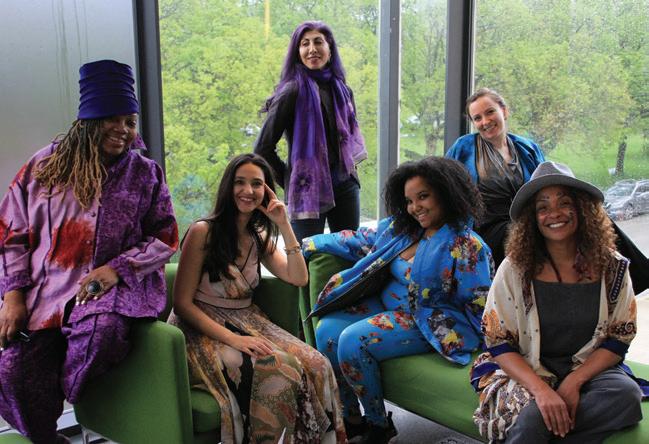
Cold Waves XI night three See Thu 9/21. Godflesh headline; Lead Into Gold, Sierra, Rabbit Junk, Lana Del Rabies, and Cel Genesis open.
7 PM, Metro, 3730 N. Clark, $50. 18+
Cold Waves XI closing Party See Thu 9/21. Zoltar, the Brother From Another Planet spins a DJ set. 11 PM, Gman Tavern, 3740 N. Clark, 21+. F
Hyde Park JAzz Festival Day Two See Sat 9/23. The second and final day of the fest takes place outside Rockefeller Chapel (5850 S. Woodlawn) and on two stages on the Midway Plaisance. The Rockefeller Chapel features carillonist Alex Johnson; the Wagner Stage (at S. Woodlawn) features Tito Carrillo, Clark Sommers, and the Chico Freeman Quintet; the West Stage (at S. Ellis) features Meagan McNeal and Roy McGrath Menjunje. 1-2 PM (Rockefeller Chapel), 2-7 PM (Wagner Stage), and 3-6 PM (West Stage), complete schedule at hydeparkjazzfestival.org, $10 suggested donation. F b
Instigation Festival day Four See Thu 9/21. James Singleton’s Chicago Malabar with Jim Baker, Ben Lamar Gay, and Quin Kirchner headlines; Jon Irabagon & Dan Oestreicher open.

9 PM, Hungry Brain, 2319 W. Belmont, $10. 21+
Delaney BailEy Opening act to be announced. 7:30 PM, Schubas, 3159 N. Southport, $20. b
The earliest Spotify track uploaded by Indianaraised singer-songwriter Delaney Bailey is the gentle 2020 song “Loving & Losing,” whose delicate, cycling acoustic guitar melody sounds like wind chimes in the breeze. Before the official release of the song, Bailey uploaded a TikTok video where she performs part of it in a dim, cluttered room. Lyrics appear in the frame as she softly sings them, and they’re sometimes annotated with tags for other TikTok users—people Bailey says influenced those lyrics. Bailey’s aesthetic—whether her gossamer music or her unfussy social media presence—foregrounds intimacy, and this is one of the clearest examples. Plenty of artists encourage their online fans to develop parasocial relationships with them, but how many make music that doesn’t just feel private but also draws literal inspiration from you?
“Loving & Losing” has been streamed on Spotify more than eight million times, and it’s far from Bailey’s biggest success. The drawling 2022 single “J’s Lullabye (Darlin’ I’d Wait for You)” has nearly 70 million streams, and a er she released it, Spotify selected her for artist-development program Fresh Finds. I don’t condone the program—Spotify has destabilized the music industry enough without hand-picking already successful musicians for preferential treatment—but I bring it up because it paired Bailey with producer Jon Seale, who brought unnecessary symphonic froufrou to her somber, sure-handed 2022 track “Praying for July,” released as a Spotify Single. Now 22 and living in Chicago, Bailey is performing a handful of dates in support of her second selfreleased EP, What We Leave Behind. These songs are first and foremost about soothing vibes, but the absence of big hooks doesn’t dilute the power of the velvety vocals on “Bloomington.” —LEOR GALIL
Reese LaFlare See Pick of the Week, page 54. 8 PM, the Promontory, 4311 S. Lake Park West, $15 early bird, $20 in advance, $150 couch section (six tickets, bottle purchase required). 21+
Slowdive Drab Majesty open. 7:30 PM, Riviera Theatre, 4746 N. Racine, sold out. b
I realize I’m in the minority when I say I love the days when autumn bleeds into winter. I love the crisp air that descends with the first seasonal chill; I love the smell of trees shedding the last of their leaves; I love that it all reminds me to embrace the warmth of cozy seclusion with the people I care about most. And the new fifth album from UK shoegaze pioneers Slowdive, Everything Is Alive (Dead Oceans), won me over because it evokes some of the same emotions. On “Prayer Remembered,” glassy guitar notes echo through weighty bass, hazy keyboards, and sparse drums sunk in a bottomless well of reverb—it simultaneously reminds of how allconsuming and eternal the first cold winter nights can seem and how calm and relieved I feel when I see warm light shining from my apartment window after a long walk in the deep freeze. Shoegaze is having a moment: upstarts such as They Are Gutting a Body of Water are experimenting with the style’s heavenly wall of sound, and early-90s cult bands are getting back together. (Boston fivepiece Drop Nineteens are releasing Hard Light , their first album in 30 years, this November.) Everything Is Alive is Slowdive’s second full-length since their own reunion in 2014, and its gentle, mature sound suggests that they have a lot more exploring to do within shoegaze—whether they meant to or not, they helped define its golden age, but they’re not about to settle for simply repeating the moves they devised before their Gen Z fans were born.
—LEOR GALIL
Thantifaxath, Sunless Thantifaxath headline; Sunless, Arid, and Echo Primordium open. 8 PM, Cobra Lounge, 235 N. Ashland, $18.03. 17+
Toronto-based black-metal trio Thantifaxath (whose members are deliberately anonymous) released a startling, unusual debut album, Sacred White Noise, in 2014. Since then, though, their recorded output has been tantalizingly sparse: just one EP in 2017. So their second full-length, Hive Mind Narcosis, which they released in June on Dark Descent, had plenty of time to whip up high hopes among fans. It opens with “Solar Witch,” whose twisted, counterintuitive riffs conjure a disorienting sense of liminal unreality, and Thantifaxath consistently subvert expectations throughout. The record’s trippy, psychedelic undercurrent makes every turn in a long track such as “Surgical Utopian Love” seem like a perverse decision; they zig where zagging would seem the more obvious choice and vice versa. Listening to the album produces an exhilarating vertigo, and the theatrical, declamatory feel of “Burning Kingdom of Now” and the warped, crushing crunch of “Sub Lilith Tunnels”
display a supervillainous level of versatility. “Mind of the Sun” features interplay between the rhythm section and guitar that sounds half collaborative and half antagonistic. If Thantifaxath were more prolific in the studio, they might have changed the metal landscape quite a bit more by now. But perhaps the power they possess works best in precious glimpses. Compared to Thantifaxath, Minnesota’s Sunless sound much more four-on-the-floor, but their latest release, 2021’s Ylem , digs satisfyingly into assured, self-possessed prog metal. “The Unraveling of Arcane Past” bangs around in its own attic, roaring and haunting itself, and “Spiraling Into the Unfathomable” lives up to its title. The album is the second in a trilogy, and the warmth in its restless energy gives it a more accessible feel than its 2017 predecessor, Urraca. Rounding out the bill are two up-and-coming Chicago bands, crust-punk and death-metal trio Arid and blackened death-metal duo Echo Primordium.
—MONICA KENDRICKYoung Fathers 8 PM, Vic Theatre, 3145 N. Sheffield, $30-$42. 18+

For about a decade, Scottish trio Young Fathers have been releasing subterranean-sounding exper-
imental hip-hop songs whose strange arrangements combine brawny percussion, squeaky synths, polyphonic singing, and radiant vocal harmonies. Their music traffics in the muck of the world—the torpid synth on 2015’s “Feasting” makes them sound like they’re stuck in mud up to their knees—but its depths conceal a gleaming, brilliant optimism that erupts in explosive bursts. The thundering drums that kick off the chorus of “Low” (on their 2014 debut album, Dead) manage to feel like a surprise, even though the rush of cathartic energy they create defines the feel of the track.
It took about a decade, but with February’s Heavy Heavy (Ninja Tune), Young Fathers finally foreground that out-of-body cheeriness, which has previously enlivened their music only in fits and starts. On “Geronimo,” the voices of Kayus Bankole, Alloysious Massaquoi, and G. Hastings float through gossamer synths that emphasize by contrast the grit in their whispers and shouts. The trio’s singing zigs apart into interlocking lines, then zags together to harmonize—and when they lock in like that, they sound like they’ve unlocked the secret of levitation. “Geronimo” includes the line “I’m on the verge of somethin’ divine that’s gonna keep me in line,” but Young Fathers already seem to have achieved that transcendence. —LEOR GALIL v
4544 N LINCOLN AVENUE, CHICAGO IL OLDTOWNSCHOOL.ORG • 773.728.6000
NEW SHOWS ANNOUNCED • ON SALE NOW!
10/20 Bill Frisell FIVE feat. Thomas Morgan, Rudy Royston, Tony Scherr & Kenny Wollesen
10/29 Spooky Singalong
11/5 Alison Brown / Special Consensus
11/26 Irish Christmas In America
12/3 Over The Rhine - An Acoustic Christmas
12/7-12/10 Songs Of Good Cheer (25th Anniv.) Caroling Party with Mary Smich & Eric Zorn
FRIDAY, SEPTEMBER 22 8PM
Chicago Plays For Maui!
Benefit Concert In Maurer Hall
FRIDAY, SEPTEMBER 22 8PM
Garnet Rogers In Szold Hall
SATURDAY, SEPTEMBER 23 8PM
Tom Paxton & The DonJuans In Maurer Hall
SATURDAY, SEPTEMBER 23 12PM
Chicago Latino Dance Festival In Maurer Hall
SUNDAY, SEPTEMBER 24 7PM
Barcelona Gipsy
balKan Orchestra In Maurer Hall
THURSDAY, SEPTEMBER 28 8PM
David Longstreth
(of Dirty Projectors) with Sen Morimoto In Maurer Hall

SATURDAY, SEPTEMBER 30 7PM
Joel Styzens with Herine Coetzee Koschak
and members of ATLYS In Szold Hall
SUNDAY, OCTOBER 1 7PM
Miko Marks In Szold Hall
WEDNESDAY, OCTOBER 4 8PM
Cut Worms with Ryder The Eagle In Maurer Hall
FRI, OCTOBER 6 & SAT, OCTOBER 7 8PM
The Handsome Family with special guests Jon Langford & Sally Timms In Maurer Hall
WORLD MUSIC WEDNESDAY SERIES FREE WEEKLY CONCERTS, LINCOLN SQUARE
9/27 World Music Festival 2023: Al-Qasar / Huzam Ensemble 10/4 Commemoration of the 50th Anniversary of the Coup of Chile
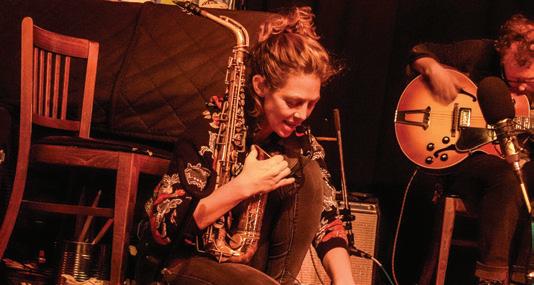
OLDTOWNSCHOOL.ORG

FRI 12/1
Brett Eldredge 8 PM, Chicago Theatre b
Joe Russo’s Almost Dead 8:30 PM, Riviera Theatre, 18+ San Pacho 10 PM, Prysm Nightclub
SAT 12/2
Brett Eldredge 8 PM, Chicago Theatre b
Joe Russo’s Almost Dead
8:30 PM, Riviera Theatre, 18+
SUN 12/3
Barrett Martin 1 PM, Bottom Lounge b
THU 12/7
Milk. 7:30 PM, Subterranean, 17+
FRI 12/8
Los Lobos, Them Coulee Boys
7:30 PM, the Vic b
SAT 12/9
THU 10/5
Drums Please featuring Preethi, Roaz, and Renan 10 PM, Smart Bar
FRI 10/6
Adekunle Gold, Nonso Amadi 8 PM, House of Blues, 17+
SAT 10/7
Villagerrr, Kneafsey 9 PM, Gman Tavern
SUN 10/8
Lola Young 7:30 PM, Beat Kitchen b
MON 10/9
Lewsberg, CB Radio Gorgeous, Daundry 8:30 PM, Sleeping Village
THU 10/12
Inferno with Glamour Cadaver, Ctrlzora, and Flores Negras 10 PM, Smart Bar
FRI 10/13
Genesis Owusu, Godly the Ruler 9 PM, Thalia Hall, 17+

SAT 10/14
Bia, Lakeyah, Lebra Jolie 8 PM, Avondale Music Hall b
TUE 10/17
Tommy Bravos, Næ, J-Line, And the Animal 8 PM, Golden Dagger
WED 10/18
Tech N9ne 7 PM, Radius Chicago, 17+
THU 10/19
Chris Cresswell, Jon Snodgrass, Seth Anderson 7 PM, Cobra Lounge, 17+
Jim Lauderdale with the Texas Rubies 8:30 PM, Hideout
SAT 12/30
Freddy Jones Band 7:30 PM, Park West, 18+
SAT 1/13/2024
Rebirth Brass Band 8 PM, Thalia Hall, 17+
Sidepiece, Mark Knight, Gene Farris, Freak On 10 PM, Radius Chicago, 18+
MON 1/29/2024
Joey Valence & Brae 7:30 PM, Subterranean b
FRI 2/23/2024

FRI 10/20
Bill Frisell Five featuring Thomas Morgan, Rudy Royston, Tony Scherr, and Kenny Wollesen 8 PM, Maurer Concert Hall, Old Town School of Folk Music b
SAT 10/21
Borgore, Yakz, Sisto 10 PM, Concord Music Hall, 18+
SUN 10/22
Chris Darby, Oh Yeahs, Bird & Butterfly, Rosalba Valdez 2 PM, Golden Dagger
WED 10/25
Duro Wicks’s Hip-Hop Birthday Joint and Lower Links Reunion featuring Spalaney’s, Ang13, Aztec Dinero, DJ Ceez, Mass Hysteria, Urbanized, Dirty MF, SP1, Sean Doe, Rapture, and Tone B. Nimble 7 PM, the Promontory
THU 10/26
Carlos Rivera 8 PM, Rosemont Theatre, Rosemont b
FRI 10/27
Halloweensteen featuring Michael McDermott & the Duke Street Kings 8 PM, Park West, 18+
Twin Talk, Steven Lugerner’s SLUGish 9 PM, Hungry Brain
SAT 10/28
Flo Milli, Maiya the Don 7:30 PM, Riviera Theatre b
Craig Harris, Tyehimba Jess, DJ AQ 7 PM, Logan Center for the Arts b
Jeremiahs 7 PM, Irish American Heritage Center b
SUN 10/29
Shi-An Costello 8:30 PM, Constellation, 18+
WED 11/1
Jaap Blonk 8:30 PM, Constellation, 18+
Sumac, Olivia Block, Stress Positions 8:30 PM, Sleeping Village
THU 11/2
Mipso, Humbird 8:30 PM, Thalia Hall, 17+
SUN 11/5
Alison Brown, Special Consensus 7 PM, Maurer Concert Hall, Old Town School of Folk Music b
THU 11/9
Last Dinner Party, Brigitte Calls Me Baby 7:30 PM, Bottom Lounge b
Walter Etc., Suzie True, Xyzxyz 8:30 PM, Sleeping Village
FRI 11/10
Anna Mieke 8:30 PM, Hideout
THU 11/16
Carly Pearce, Adam Doleac 7:30 PM, Riviera Theatre b
FRI 11/17
Mochakk 10 PM, Concord Music Hall, 18+
FRI 11/24
Henhouse Prowlers, Pert Near Sandstone, Miles Over Mountains, Sullivan Sisters
7:30 PM, Park West, 18+
TUE 11/28
Imminence 8 PM, Metro, 18+ The Landlord’s Cats 7:30 PM, Park West b
WED 11/29
Pentatonix 7 PM, Allstate Arena, Rosemont b
Beyond the Gate featuring Stephen O’Malley & François J. Bonnet 6:15 and 9:15 PM, Bohemian National Cemetery, 18+
Princess Chelsea, Kitty 8 PM, Subterranean, 17+
SUN 12/10
Ginger Root 8 PM, Metro, 18+
Nick Zoulek 8:30 PM, Constellation, 18+
MON 12/11
Andrew Bird 8 PM, Fourth Presbyterian Church b Roy Woods 8 PM, House of Blues, 17+
TUE 12/12
Andrew Bird 8 PM, Fourth Presbyterian Church b
WED 12/13
Andrew Bird 8 PM, Fourth Presbyterian Church b
THU 12/14
Andrew Bird 8 PM, Fourth Presbyterian Church b Freeway 9 PM, the Promontory
FRI 12/15
Andrew Bird 8 PM, Fourth Presbyterian Church b
SUN 12/17
Irina Kairatovna 9 PM, Concord Music Hall, 17+
TUE 12/26
Waco Brothers Winter Wonderland night one featuring Waco Brothers, Kent Rose 8:30 PM, Hideout
WED 12/27
Waco Brothers Winter Wonderland night two featuring Waco Brothers, Deano & Jo, Jane Hobson and band
8:30 PM, Hideout
Cold War Kids, Joe P 8 PM, Salt Shed, 18+
WED 3/13/2024
Horse Lords, Ka Baird 9 PM, Empty Bottle
SUN 3/17/2024
Paper Kites 8 PM, Thalia Hall, 17+
TUE 3/19/2024
Olivia Rodrigo, Chappell Roan 7:30 PM, United Center b
WED 3/20/2024
Olivia Rodrigo, Chappell Roan 7:30 PM, United Center b
FRI 3/22/2024
Dan & Shay, Ben Rector, Hailey Whitters 7 PM, United Center b
SAT 3/23/2024
Marc Broussard 8 PM, Thalia Hall, 17+
Bob Schneider 8 PM, City Winery b
TUE 4/16/2024

Steve Mason 9 PM, Empty Bottle
SAT 4/27/2024
Madeleine Peyroux 8 PM, City Winery b
TUE 5/28/2024
Needtobreathe, Judah & the Lion 7 PM, Huntington Bank Pavilion b
SUN 9/1/2024
King Gizzard & the Lizard Wizard 6:30 PM, Huntington Bank Pavilion b
WED 9/18/2024
Keane 8 PM, Chicago Theatre b v
GOSSIP WOLF FIRST became acquainted with multi-instrumentalist Joel Styzens via his remarkable hammered dulcimer playing on the Elijah McLaughlin Ensemble album III , which Reader writer Bill Meyer praised in May for its attempts at “musical transcendence.” As you might expect from that record’s shimmering acoustic textures and accessible melodies, Styzens’s own compositions play out across an open vista of unfussy, tuneful minimalism that evokes an easy, natural splendor. Styzens says his new album, Resonance (which drops Friday, September 29, via his own Relax Your Ears imprint), is “based on connection and how we resonate with each other, with nature, with the great beyond. It’s a celebration of the challenges and triumphs of life and the potential for transformation.”
On “Esplanade” and “Heritage Garden,” the dynamic sweep of his dulcimer playing gets perfect accompaniment from UK cellist Sophie Webber , local pianist Rob Clearfield, and Chicago-born string quartet Atlys . On Saturday, September 30, Styzens celebrates with a record-release show at the Old Town School of Folk Music, where he’ll be joined by cellist Herine Coetzee Koschak and Atlys members Jinty McTavish and Genevieve Tabby
Gossip Wolf has been eager for a new project from rapper Matt Muse since 2019’s Love & Nappyness, which shares its name with his annual wintertime hair-care drive and concert fundraiser. Thankfully, Muse dropped the Bandcamp-only EP Three for a Dollar in July (a fellowshipfunded collaboration with the Economic Security Project), and on Tuesday, September 19, he self-released the EP So Far, So Decent. He powers through the all-toobrief set of songs on this newest project with calm assurance—he sounds at ease even when he accelerates his spry, melodic flow on “Leave Here,” skimming over rippling synths and minimal percussion. —J.R. NELSON AND LEOR
GALILGot a tip? Tweet @Gossip_Wolf or email gossipwolf@chicagoreader.com.
Enjoy Jazz & Blues from Logan Center and its partners; jazz, classical, early, world, and contemporary from UChicago Presents; special guest soloists, multi-arts collaborations, world premieres, masterworks, and unusual repertoire treasures from UChicago’s Department of Music; world premiere and recently composed works by leading and emerging composers from the Chicago Center for Contemporary Composition; and much more.
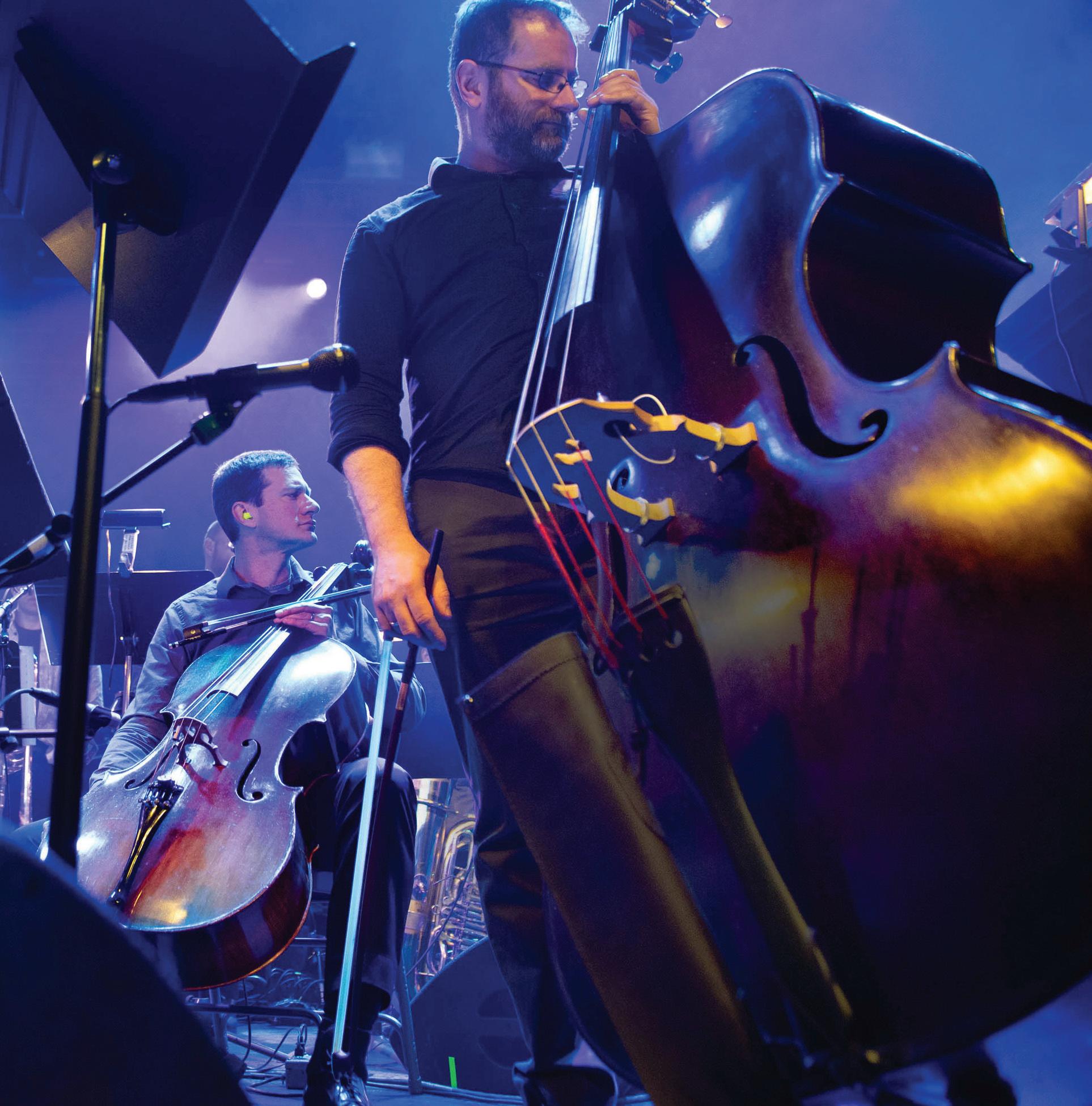
sound like your girlfriend is very happy. You’ve tried to help, and it hasn’t worked, but, hey, maybe something will click after another year or two or three and your girlfriend will start seeing her psychologist again and the specialists she needs to see. (I would recommend a pelvic floor specialist.) But what if things don’t get better? What if this is it? Are you willing to stay in this relationship, as-is, for the rest of your life?
Q : I’m reading you from Italy, and I could really use your advice. About four years ago, I started dating a girl who I’ve been living with for the past two months. Since I’ve known her, she has been suffering from periods of depression and anxiety, although I didn’t know it when we first started to date. She used to spend a lot of time in therapy and continues to take medication. It has been very tough for both of us, and I even ended up talking to a psychologist for a while.
I was immediately captivated by her sensitivity, her sweetness, and the way she sees things. In many ways, she completes me. But soon a er the beginning stages of our relationship, our connection lost its passionate side almost entirely, mainly due to the medication she’s taking but also because of her anxieties related to the fear of pain in her intimate areas. I’ve tried to accept this while encouraging her to see specialists who could alleviate her fears. I’ve also been encouraging her to resume her conversations with her psychologist, which she stopped about three months ago.
What should I do? I don’t want to break up with her. I care about her and believe that with time, things will get better, but right now there is a significant void in our rela-
tionship. —VEXED OVER INTIMATE DECLINE
a : You’re not fucking, right?
I don’t know what else, “our connection lost its passionate side,” could possibly mean, so I’m gonna go with “not fucking.” And it sounds like the fucking stopped (it sounds like the passion was lost) pretty early in the relationship (“soon after the beginning stages”), which means you’ve been in a sexless relationship for three years and change.
Just in case you need to hear it from someone: There’s nothing wrong with wanting to have sex with your romantic partner, VOID, particularly if the relationship was sexual at the start. And while I don’t think it’s fair to head for the exits at the first sign of a physical or emotional challenge—it’s certainly not loving—we aren’t obligated to stay in relationships that don’t meet our reasonable emotional and physical needs. (There’s also a huge difference between abandoning someone after decades together and ending a relationship relatively early in life that isn’t meeting your needs.)
You said don’t want to break up, VOID, but at the very least you need to consider breaking up. Because not only are you growing increasingly unhappy in this relationship, VOID, it doesn’t
a married man who has two children, both around the age of ten. He joined my sports league this winter. We had a long flirtship that became sexual in April, and we fell in love.
Having a loving and supportive partner in our corner during a life crisis can make all the difference. But sometimes having a partner who refuses to leave us because we’re depressed or unemployed or on fire—sometimes knowing our partner would never abandon us in that condition—can perversely incentivize not seeking treatment or looking for work or stamping out the flames. Which is why a person in your position, VOID, a person with your values, eventually has to ask himself, “Is staying helping my partner or hurting my partner? Am I standing by them or am I enabling them?” Some other questions you need to ask yourself at this point: “Am I happy?” “Am I being cared for?” “If nothing changes, can I live like this? Can I live with these unfilled voids for the rest of my life?”
Once you’ve answered those questions and answered them honestly, you’ll know what you need to do. Leaving will be extremely hard, if that’s what you ultimately decide you need to do, but leaving someone doesn’t have to mean abandoning them. You can still be there for this amazing woman—not as a boyfriend, but as a close friend. Still supportive, still encouraging, and still amazed.
Q: I’m a 31-year-old Italian girl. I’m in a relationship with
The first months were awesome, and we had great sex that incorporated both romance and roughness. As our relationship went on, he started saying things that seemed to show a desire to separate from his wife. (He says they don’t have sex.) He said things like, “I would love just doing laundry with you,” and, “I really would love to sleep with you every night.”
At some point, things with his wife worsened. He shared thoughts about separation and divorce with me and with his parents. (His parents now know of my existence.) At some point, during a conflict with his wife, they finally used the word “separation.” He became sad and told me he couldn’t do it. He said his kids would suffer too much.
From that moment, I could not bear this relationship anymore. I am too deeply in love, and my expectations could not revert to what they once were. I’m trying to break up with him, but it is hard. I talked with him about my feelings, and he feels guilty about telling me things that made me believe in a future with him.
So now, even though he says he is in love with me, he has agreed to break up, because he doesn’t want me to suffer. But I am sad. I don’t know what to do. I know it would be better for me to forget about him, but it is hard.
Are there any solutions to overcoming this situation quickly? One of the problems is that we are on the same recreational sport team, which means we see each other twice a week.
a: So, you want to break up with him. He’s graciously agreed to break up with you, but you’re having a hard time sticking the dismount, because, like Neil Sedaka discovered back in 1960, breaking up is hard to do. It’s particularly hard to do when the sex is great, the connection is awesome, and circumstances keep throwing you together.
But circumstances, at least the ones you mentioned, aren’t outside your control. If you can’t see him without feeling sad, and/or wanting to fuck him, and/or feeling sad right after you fuck him, BASIC, then you’ll have to stop seeing him. That means asking him to quit the team (you were there first) or, if he refuses, quitting the team yourself. If you’re not willing to do that—if you’re not willing to quit the team—then I can only conclude you don’t want to stop fucking this guy and you aren’t going to stop fucking this guy. You have the decency to feel bad about continuing to fuck him, though, which speaks well of your character.
P.S. If your lover is only staying in his marriage because the kids are young and divorce would upend their lives, your lover and his wife are likely to part ways, amicably, once their kids are grown. I realize a decade is a long time to wait, but mistresses who play the long game sometimes win the crown. Just ask Camilla.
Q : I am a 29-year-old Italian man living in London. In April, I started dating a guy from here, one year older than me, who recently came out as gay a er thirteen years with a woman. I assumed from the beginning that it wasn’t going to work, as he understandably needed to explore his sexuality. However, we dated
for a couple of months and had a very strong bond. We talked every day, we saw each other whenever we could, we spent whole weekends together. It didn’t feel like a casual relationship. Anyway, a er a couple of months, I brought up the “boyfriends” topic and he was very clear that didn’t want a “relationship” even though he was loving his time with me.
So, I put up my defense shield and disappeared. That was a month ago, and we basically haven’t spoken since. However, a week ago, two of my friends told me that he hit on them. As in, there were two times when we were all hanging out together and he was very flirty with them. Even to the point that he apparently asked one of my friends for a blowjob.
I know we weren’t in an exclusive relationship, but what the fuck? Hitting on my friends? Go and do it with whoever you want, bro, but my friends? I feel like I completely misunderstood everything, that he didn’t give a fuck about me, and that I am worthless. I’m in therapy and I know this is something I have to work on. But I just can’t get over it, I feel completely played and worthless. What do you think? —COMPLETELY IN SENSITIVE AND OUTRAGEOUS
a: Pull yourself together. Unlike your ex-whateverhe-was, CIAO, you didn’t come out yesterday. You’re a nearly 30-year-old out gay man with a good group of friends around you—assuming none of your friends blew this guy while you were in the other room—and you’re a having a meltdown because things didn’t work out with someone you dated for two months
It sucks when someone
you wanted doesn’t want you back and it sucks when someone turned out to be the kind of person who would hit on your friends. But it’s a very big jump from “This guy didn’t care about me,” to “I am utterly worthless.”
Frankly, CIAO, that’s the kind of reaction I would expect from a guy who just came out, i.e., a guy with zero experience dating people he was actually attracted to, and not from someone who’d been out and dating for years.
You can’t help but to feel your feelings, CIAO, and I’m not trying to shame you. It’s good you’re seeing someone—it’s good you’re getting help—because if this is your reaction after a two-month relationship with a baby gay
ended badly, having someone to talk you through it is a good idea.
You should also talk with your therapist about how you ghosted this guy because he wasn’t ready to tell you precisely what you wanted to hear and precisely when you wanted to hear it. Hitting on the friends of someone who has feelings for you is a shitty thing to do, CIAO, but disappearing on people because they’re not ready to commit— ready yet or ready ever—is also a pretty shitty thing to do. Maybe your therapist can help you see that.
Finally, it’s not unheard of for a gay man to introduce a new boyfriend to his friends (or a new casual fuck buddy to his friends) only to discover that his new boy-
friend and/or fuck buddy has already slept with half of his friends. That’s not what happened in this case: this guy hasn’t been out long enough to have slept with half your friends already.
You were casual sex partners, but keeping things casual isn’t a license to be inconsiderate. And it was incredibly inconsiderate of this guy to treat being introduced to your friends—usually a sign that a relationship is moving away from casual and towards something more serious—like a night at home scrolling through Grindr. v



Ask your burning questions, download podcasts, read full column archives, and more at the URL savage.love. m mailbox@savage.love


SAT



FRONT
+


GODFLESH


SUN
+ Robert DeLong




TUE OCT 10 / 8PM / 18+



YEULE
+ Sasami
JOBS
Sales/Biz Dev Representative-Chicago
Reader Sales representatives sell print, digital, and ad products to local businesses. Sales reps shoudl have 2 years of sales experience OR similar skills, & knowledge of media/advertising products. Ideal candidates will be familiar with CRM software & GSuite. Comp packages vary (full or part time), & include salary, commission, and health benefits. Diverse candidates encouraged to apply. This is an ongoing search. Send a resume to careers@chicagoreader. com.
IT Manager Baxter Healthcare Corporation is seeking an IT Manager in Deerfield, IL to Contribute to and execute on IT strategy to ensure alignment with organization goals and objectives; Maintain holistic view of the organization strategy, processes, information and technology assets
Full time. $122,990$204,000 per year. Qualified applicants can apply directly to the Baxter Website at: jobs.baxter. com. Please search job # JR-111844. EOE
RESEARCH
PROFESSIONALS & SERVICES AUDITIONS
COMMUNITY MATCHES

ADULT SERVICES
execute unit, Integration & user acceptance test plans. Perform the migration of salesforce environments. Travel/ reloc to various unanticipated locations. Send res to: Maxil Technology Solutions, Inc., 2625 Butterfield Rd. Ste 132S., Oak Brook, IL 60523
Senior Software Developers Senior Software Developers, Oak Brook, IL: Dsgn BODS jobs to load into S/4HANA using LTMC, iDocs, LSMW and BAPI. Design meetings w/ Data BPLs / BPXs (Business Process Leads / Experts) to gather reqs for Material Master Data Object of the project. Administer Master Data Management by mntning a sys of records based on suggestions received from data quality reports. Travel/reloc to various unanticipated locations. Send res to: Maxil Technology Solutions, Inc., 2625 Butterfield Rd., Suite 138S., Oak Brook, IL 60523
Associate Product Manager Relativity (Chicago, IL) seeks Associate Product Manager to participate & lead discovery & development to achieve a specific product goal & help lead a team of skilled designers & engineers focused on creating exceptional user experiences & actualizing the project goals. Occ. travel w/in the U.S. & internationally. Remote work option. Submit resumes to Recruiting@ relativity.com, to be considered, reference Job ID: 23-9005 in the subject line.
Technology Risk Consulting IT Risk Manager (Chicago, IL) RSM US LLP: Support external financial statement & SOX compliance engagements to ens proper application & info tech general computer controls. Reqs: Bachelor’s (or foreign equivt) in Acctng, Finance, Bus Admin or rel (will accept three or four year degrees); 5 yrs as an Internal Auditor or a rel position. Employer will accept any combination of edu, exp, or training.
Email resumes to: Attn: C Volkening – Ref # 2709, claudine.volkening@ rsmus.com
Computer Programmers Computer Programmers, Oak Brook, IL: Design & dvlp sltns for new & existing business needs. Maintain flow, data Validation, Apex code & other Salesforce processes already deployed. Develop &
Sr Mgr, Computational BIM Product Design in Chicago, IL (Master’s w/3 yrs exp or Bach w/5 yrs exp; Majors: Arch, CS, CIS, or equiv). Job entails & reqs exp in BIM incl: program BIM tools; create workflow & implement computational solutions in structural engr projects; develop toolsets for modeling, platform interoperability, & environ sim/analysis; coding in C# for customizing Rhino & Grasshopper; maintaining custom Revit plugins to exchange model & data between Revit, Rhino, SAP, E-Tabs, & Tekla; Collaborate to develop web apps for model/ data visualization, & design automation using Angular, Vue, AWS; train users. $120k to $140k per yr. Various worksites: relocation & travel to project-based unanticipated locations within USA possible. Send resumes to VIATechnik LLC, Attn: HR, 200 E Randolph, Suite 5400, Chicago, IL 60601
Associate Consultant, Structural Engineer –WSP USA Inc. (Chicago, IL): Perf prof struct engr’ng work & assist w/ inspecting existing structures. Reqs: Bach deg in Cvl Engr’ng, Struct Engr’ng, or rltd, & 2 yrs of exp as a Struct Engr, Trans Engr, or rltd. Ref #7856. Email resumes to: Attn: Julia Savaneli – Ref #7856, Julia.Savaneli@ wsp.com
Asst Prof of Clinical Med/Phy Surg & Dir of Academic Program
The Dept of Medicine, at the Univ of IL College of Medicine at Chicago, located in a large metropolitan area, is seeking full-time Asst Prof of Clinical Med/Phy Surg &
Dir of Academic Program to assist the department with the following responsibilities: Under direction and supervision, assist department in providing full-time clinical patient care to a medically underserved patient population in the hospital and outpatient clinic(s) in the fields of Transplant Hepatology & Gastroenterology. In addition to providing fulltime clinical patient care, teach, train, and advise medical students and residents in Transplant Hepatology & Gastroenterology. Conduct medical science research in Transplant Hepatology & Gastroenterology, publish scientific research findings. Oversee and manage Gastroenterology Fellowship program, and perform University service and administrative duties as assigned. Some periodic travel may be required for conferences, professional development, and/or local travel in between worksite locations. This position minimally requires a Medical degree (MD) degree or its foreign equivalent, 3 years of Internal Medicine residency training, 3 years of Gastroenterology fellowship training, 1 year of Transplant Hepatology fellowship training, a valid IL med license or eligibility for IL med license, and BC or BE in Gastroenterology and Transplant Hepatology. For fullest consideration, please submit CV, cover letter, and 3 professional references by 09/30/2023 to Alejandra Moore, University of IL Chicago, 840 S. Wood Street, Suite 1020, Chicago, IL 60612 or via email to medicineHR@ uic.edu UIC is an Equal Opportunity, Affirmative Action employer. Minorities, women, veterans, & individuals w/ disabilities are encouraged to apply. UIC may conduct background checks on all job candidates upon acceptance of a contingent offer letter. Background checks will be performed in compliance with the Fair Credit Reporting Act. As a qualifying federal contractor, the University of Illinois System uses E-Verify to verify employment eligibility. The University of Illinois System requires candidates selected for hire to disclose any documented finding of sexual misconduct or sexual harassment and to authorize inquiries to current and former employers regarding findings of sexual misconduct or sexual harassment. For more information, visit https://www.hr.uillinois. edu/cms/One.aspx?-
portalId=4292&page-
Id=1411899
Project Engineer Project Engineer - (Chicago, IL):
Review & analyze contract specs & drawings. Assist w/development of estimates & schedules. Communicate & review project schedule & milestones w/Project Manager, Superintendent, & subcontractors. Assist & coord the change order mgmt process. Submit change requests for approval & follow through w/subcontract change orders/purchase orders as directed. Oversee the overall process of RFIs & submittals w/subcontractors & A/E team. Monitor & control project quality. Perform duties reltd to project close out by collecting warranties, O&M manuals, assisting w/final pay apps, & archiving docs. Perform other reltd duties as req\’d by the Project Manager. Reqs a Mstr\’s deg in Civil Engrg & 12 mnths relev work exp. Mail resumes to HR; Burling Builders, Inc. 44 W. 60th St., Chicago IL 60621.
Project Engineer Integral Construction Inc. is seeking 1 FT (40 HW) for the Project Engineer position at 320 Rocbaar Dr, Romeoville, IL 60446 for a competitive salary.
Project Engineer: Preparing, tracking, & managing submittals, shop drawings, and material samples. Preparing and tracking RFI’s per project. Preparing and managing timely project close-out documents. Supporting project management and superintendent teams. Educational & Exp Requirements: Bachelor’s in Civil Engineering. We offer comprehensive benefits. To apply send your resume to the above address.
Senior Data Scientist with Crowe, LLP (Chicago, IL) – respbl for wrkng as prt of a tm to spprt all machn lr’ng & artfcl intllgce needs thrghout the firm. Remote work avail. Req ed & exp. For full details & how to apply, visit: bit.ly/ Crowe018
Vice President, Strategy and Business Development Yunhong CTI Ltd. Lake Barrington, IL. Analyze financial & performance data & make recommendations for future business activities, investment opportunities, ensuring adequate financial capital aligns with business plan. Explore merger, acquisition, investment & divestiture opportunities. Provide financial models and forecasting. Req: Master’s degree, or foreign equiv, in business, finance, or related field + 1 yr exp in strategic biz development. Email resume to fcesario @ ctiindustries.com.
Reveal Data seeks Software Engineer, Java in Chicago IL to add support for new platforms to our existing products and dvlp new products. Snd CV to hr@revealdata. com, ref#7fyel4ek_nprd
A.T. Kearney, Inc. has multpl openings for Principal – Practice Aligned(s) to work in Chicago, IL (Extensive travel and/ or possible relocation in unanticipated locations throughout the U.S.) to specialize in providing management-consulting services to private and public organizations. Conduct organizational studies and evaluations and develop solutions or alternative methods to assist management in operating more efficiently and effectively. Telecommuting is permitted. Requirement: Bach’s deg in Economics, Engineering, Management, Business, Information Technology or rltd fld and 4 yrs rlvt exp in Economics, Business, Engineering, Management, Information Technology or rltd fld. Exp to include Financial modeling and data analytics to forecast performance; Experience leading cross-functional projects/teams; Conducting extensive primary and secondary research on corporate strategy topics; Conducting commercial due diligence, top-line transformation, or merger integration assessments; Driving strategic decisions for clients (e.g. market entry analysis and strategy, cost structure assessment, and improvement strategy); Collaborating in an international setting to better serve the global needs of clients; and Executing on detailed project plans to assure successful delivery. Apply online at www. kearney.com. Reference [Job ID #IL016].
Reverse Flow Property Leader Reverse Flow Property Leader, HDI Global Insurance Co, Chicago, IL: Responsible for underwriting an assigned commercial book of business; directly supervise employees in their specific Underwriting Dept; carry out supervisory responsibilities in accordance w/ organization\’s policies & applicable laws; assign & direct work to staff; conduct performance reviews; reward & discipline employees; address employee complaints & resolve problems; allocate underwriting authority to staff, establishing their ability to accept risks, determine pricing & coverage, & address reinsurance issues; provide effective & efficient account review & guidance to home office & producing offices; reconcile premiums & monitor out-
WANT TO ADD A LISTING TO OUR CLASSIFIEDS? Go to classifieds.chicagoreader.com
standing premiums; timely & accurate issuance of contractual docs; works on most complex underwriting risks employing advanced diagnostic & systematic analysis to assess acceptability; dvlp specialized endorsement language as necessary; review apps & financial reqrmnts for risks requiring complex underwriting skills; determine acceptability of risk in accordance w/ co. guidelines & standards; determine appropriate pricing based on financial & competitive analysis in line w/ compliance reqrmnts; prepare quotes & answer questions from agents, policyholders, home office & producing office or other external contacts & escalate issues to mgmt along w/ proposed solutions as necessary; negotiate w/ agents to reach positive & profitable outcomes. Must have 5 yrs exp. as a Property Underwriter or rel. occupation. Prior exp. must incl. at least 5 yrs exp. w/ ea. of following:
(i) managing Intl. Property Insurance Programs from perspective of Leading Insurer; (ii) training Jr Underwriters & Underwriting Assist. in how to work w/ Intl. Programs w/ in co. guidelines & tools;
(iii) perform technical underwriting w/ emphasis in commercial property insurance industry; (iv) analyzing complex intl. accounts & make independent underwriting decisions w/in underwriting guidelines & authorities; & (v) ensuring placing, binding & accounting of FAC Reinsurance. Must live w/in normal commuting distance of office. Individual may work from home or office. Apply at: https://recruiting. paylocity.com/recruiting/ jobs/All/99a7857a-705a41f0-b4ff-2803d238b62b/ HDI-Global-Insurance-Company__;!!Hj9Y_P0nvg!XTLcJE80bnGL39qLibZ9-cJZmeDSoW9ahaSz5DcL6i-0eiL GOdYm8CeERMKvF1-uC9zE-LQ2LW0IWAFnn_uSr797aih30aXHVofDLkiR6XYhn7pKNU2DGiU$
Have you had an unwanted sexual experience since age 18? Did you tell someone in your life about it who is also willing to participate?
Women ages 18+ who have someone else in their life they told about their experience also willing to participate will be paid to complete a confidential online research survey for the Women’s Dyadic Support Study. Contact Dr. Sarah Ullman of the University of Illinois at Chicago, Criminology, Law, & Justice Department at ForWomen@ uic.edu, 312-996-5508. Protocol #2021-0019.
CLEANING SERVICES
CHESTNUT ORGANIZING AND CLEANING SERVICES: especially for people who need an organizing service because of depression, elderly, physical or mental challenges or other causes for your home’s clutter, disorganization, dysfunction, etc. We can organize for the downsizing of your current possessions to more easily move into a smaller home. With your help, we can help to organize your move. We can organize and clean for the deceased in lieu of having the bereaved needing to do the preparation to sell or rent the deceased’s home. We are absolutely not judgmental; we’ve seen and done “worse” than your job assignment. With your help, can we please help you? Chestnut Cleaning Service: 312-332-5575. www. ChestnutCleaning.com
All romantic dates women wanted All romantic fun dates all requests 24.7 Call (773) 977-8862 swm
Two Mature Male Friends Seek DWF 35-45 For Sexy Fun! Good friends who appreciate a sexy lady who would appreciate the attention of two attentive males eager to please!
MJM 52 SEEKS JEWISH FEMALE HOT OIL MASSAGE MJM 52 SEEKS JEWISH FEMALE WEEKEND DRINKS HOT OIL AND ORAL MASSAGE SPANKING BONDAGE CAN HOST DISCREET CALL/ TEXT-224-292-9899.
MJM DOM SEEKS SUB FEMALE MJM DOM 52 SEEKS SUBMISSIVE WHITE FEMALE 40+ WILL TRAIN SEX SLAVE PUNISHMENT BONDAGE ORAL SPANKING CAN HOST-CALL/ TEXT-224-292-9899.
Free audition notices! The Chicago Reader is offering free auditions in our classifieds through Oct. 1. Create an account and your listing at chicagoreader.com/ auditions

FTM4M, 35 Seeks M4M Gym Partner Hi, I’m looking for a gym partner to spot with, and to be safe in the gym with while working out. NOT LOOKING FOR A HOOKUP.
I’m fat, FTM (trans man), Mexican who is very shy and very introverted. NO TRANSPHOBES NEED APPLY, ESPECIALLY CIS STRAIGHT MEN. Must have Planet Fitness card. Text only 872-529-0333. Prayer To The Blessed Virgin Prayer To The Blessed Virgin (Never known to fail.) Oh, most beautiful flower of Mt. Carmel, fruitful vine, splendor of Heaven, Blessed Mother of the Son of God, Immaculate Virgin, assist me in my necessity. Oh, Star of the Sea, help me and show me, herein you are my mother. Oh, Holy Mary, Mother of God, Queen of Heaven and Earth! I humbly beseech you from the bottom of my heart to succor me in this necessity. There are none that can withstand your power. Oh, show me herein you are my mother. Oh Mary, conceived without sin, pray for us who




have recourse to thee (3x). Holy Mother, I place this cause in your hands (3x). Holy Spirit, you who solve all problems, light all roads so that I can attain my goal. You who gave me the divine gift to forgive and forget all evil against me and that in all instances in my life you are with me. I want in this short prayer to thank you for all things as you confirm once again that I never want to be separated from you in Eternal Glory. Thank you for your mercy toward me and mine. The person must say this prayer 3 consecutive days. After 3 days, the request will be granted. This prayer must be published after the favor is granted.

Danielle’s Lip Service, Erotic Phone Chat. 24/7. Must be 21+. Credit/ Debit Cards Accepted. All Fetishes and Fantasies Are Welcomed. Personal, Private and Discrete. 773-935-4995










A premier contractor serving Chicago and the surrounding areas since 1976. We o er remodeling, repairs, maintenance work, spray foam installation, and


















• High-pressure, high-heat power washing to clean & sanitize






























• Commercial & residential pressure washing
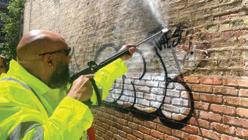









• Eco-friendly cleaning

• One-time, monthly or quarterly cleanings A collection of profiles and features hand-picked by Ben from his 40 years of writing for the Reader










9/22 – 10/1
Free Admission
35 bands. 3 DJs. 20 countries.
11 venues across Chicago.




10 consecutive days of live, global music.
WRITTEN BY TARYN ALLEN, LESLIE ALLISON, NOAH BERLATSKY, AARON COHEN, SALEM COLLO-JULIN, LEOR GALIL, ALEJANDRO HERNANDEZ, CATALINA MARIA JOHNSON, JOSHUA MINSOO KIM, STEVE KRAKOW, JAMIE LUDWIG, BILL MEYER, PHILIP MONTORO, SANDRA TREVIÑO, TYRA NICOLE TRICHE, SHEBA WHITE, AND AUSTIN WOODS

With 11 free concerts in ten days, the festival gives us dozens of chances to participate firsthand in the way music builds kinship across borders.
Produced by the city’s Department of Cultural Affairs and Special Events (DCASE). Full schedule on page 16. Friday, September 22, through Sunday, October 1, various times and venues, all concerts free, several all ages
By TarynAllen, Leslie Allison, Noah Berlatsky, Aaron Cohen, Salem Collo-Julin, Leor Galil, Alejandro Hernandez, Catalina Maria Johnson, Joshua Minsoo Kim, Steve Krakow, Jamie Ludwig, Bill Meyer, Philip Montoro, Sandra Treviño, Tyra Nicole Triche, Sheba White, and Austin Woods
In July, I attended a community meeting at the Broadway Armory in Edgewater about the city’s plan to turn the Park District facility into a temporary shelter for asylum seekers. A group of protesters, angry that much of the armory’s programming would be relocated or otherwise disrupted, carried bright yellow signs reading “Don’t Displace Us.”
No matter your grievance, you shouldn’t style yourself as “displaced” by migrants with nowhere to live if you’re going home to sleep in your own bed. But let’s leave that lousy messaging aside. Xenophobic protests like this are fueled by fear that anything given to someone else will be taken from us. And that fear is reasonable, unfortunately, because America’s ultrawealthy have bought themselves a society where we’ll brutalize each other for crumbs rather than confront their staggeringly immoral hoarding of resources.
Take capitalism out of the picture, in other words, and all we’d see arriving on those buses would be new neighbors. But if there’s one thing the rich and powerful have always hated, it’s ordinary people who understand their kinship across categories and borders.
In case you were wondering what this has to do with the World Music Festival, there it is: music brings people from different countries and cultures together, and this festival lets you participate in that process firsthand. No other event gives so many of Chicago’s diverse populations the joy of a concert that says “home.”
Founded in 1999, World Music Festival Chicago is produced by the city’s Department of
Cultural Affairs and Special Events (DCASE), with Carlos Cuauhtémoc Tortolero and David Chavez as lead programmers and Brian Keigher of People of Rhythm partnering with Tortolero on Ragamala, the dusk-till-dawn extravaganza of Indian classical music that’s been part of every fest since 2013.
The 2023 festival runs from Friday, September 22, through Sunday, October 1, with 11 events at 11 venues. Nobody fences off a public park, you don’t have to deal with a crowd bigger than the population of Waukegan, and every concert is free.
This guide to the festival includes descriptions of every act (except the three DJs), and at chicagoreader.com you can watch or listen to almost all of them. They come from Burkina Faso, Malawi, Mexico, Brazil, France, Ethiopia, India, Senegal, Morocco, Colombia, and beyond. Some devote themselves to sustaining folkloric traditions, while others update or hybridize them.
In the former category, you’ll find ecstatically funky Addis Ababa troupe Ethiocolor, austere but passionate local Arab group Karim Nagi & Huzam Ensemble, and many of the virtuosos at Ragamala; the latter includes California- based Afro-Latine dance-party starters Quitapenas, intricately propulsive Burkina Faso groove machine Baba Commandant & the Mandingo Band, and the hypnotizing French Occitan voice-and-percussion kaleidoscope of San Salvador.
Of the 35 acts previewed here, 17 perform at two big all-ages events: Ragamala at the Chicago Cultural Center on September 29 and the Global Peace Picnic in Humboldt Park on
September 30. More than 45 percent of those 35 acts are locals, a bit more than last year and a steep increase from 2019, when they accounted for around 15 percent of the bill.
The increasing percentage of locals—acts that don’t require DCASE to find money for travel or lodging—suggests discouraging things about the level of city funding for this festival (or the difficulty of supplementing it with grants and sponsorships). But the locals themselves remain worth seeing: they include the cosmic globe-trotting fusions of Magic Carpet, the bittersweet tropical-tinged pop rock of Rudy De Anda, and the playful bossa nova of Silvia Manrique.
The festival continues to make extensive use of conventional music venues, a practice it began in part to help those businesses rebound from pandemic shutdowns. Such venues make for concerts on an intimate scale, but only the Old Town School admits all ages. This approach unfortunately also replicates a bias built into Chicago’s infrastructure.
Nine of the fest’s 11 venues are on the north side—all but the Promontory in Hyde Park and the Cultural Center downtown. The 2022 and 2019 installments were somewhat better about this: they included south-side shows at the Logan Center for the Arts, Reggies Rock Club, the Beverly Arts Center, and Ping Tom Memorial Park.
On the plus side, the total number of World Music Festival Chicago artists has stayed pretty consistent since 2019. DCASE has accomplished this partly by focusing on emerging acts rather than paying for Pritzker Pavilion headliners. I’m sorry to see that this
year’s festival hasn’t booked anyone from east Asia—I loved the Yandong Grand Singers and Gamelan Çudamani in 2019—but longer flights cost more.
It’s increasingly difficult to simply exist anywhere in an American city without being expected to spend money—look what’s happening to public libraries, especially under Republican rule. So we shouldn’t take for granted that the World Music Festival offers us ten days of dazzlingly varied performances for free. We’ve all paid for this programming already, and we ought to enjoy it.
In 2006, the World Music Festival booked more than 60 artists at more than two dozen venues, but it’s shrunk since founder Michael Orlove and his staff were laid off in 2011. We won’t convince the city to return the festival to its glory days unless we demonstrate demand by coming out to these shows en masse. So please mask up if you’re headed to an indoor gig—we’re in the middle of another COVID-19 surge—and open your ears. Our species developed music tens of thousands of years before written language, and you’ll be surprised how much you can hear. —Philip
MontoroWorld Music Festival Chicago 2023 is presented by the Chicago Department of Cultural Affairs and Special Events (DCASE) and sponsored by the Chicago Transit Authority and Millennium Garages. Additional support is provided by the following partners: Center Stage, the Chicago Park District, the International Latino Cultural Center of Chicago, People of Rhythm Productions, South Asian Classical Music SocietyChicago, and the South Asia Institute.
Baba Commandant & the Mandingo Band COURTESY OF DCASE
Baba Commandant & the Mandingo Band, Magic Carpet, DJ Onwa Fri 9/22, 10 PM (doors at 9 PM), Martyrs’, 3855 N. Lincoln, 21+
Baba Commandant & the Mandingo Band come from the landlocked West African nation of Burkina Faso, which tends to enter Americans’ consciousness only when international media report on its economic or political travails. But Burkina Faso has a vibrant culture that encompasses traditionally oriented and forward-thinking movements in cinema, fashion, theater, music, and more, and this concert gives us a welcome glimpse of it. “Baba Commandant” is the stage name of Mamadou Sanou, who’s been active in various ensembles since the 1980s, singing and playing donso ngoni. This six-string harplike instrument, which uses a large gourd resonator like a kora, was until recently played almost exclusively in ceremonial settings by a society of traditional hunters known as “donso” or “dozo”; it can also be heard in the music of Toumani Koné, Yoro Sidibe, and Don Cherry. (The smaller, banjo- like ngoni familiarized in the U.S. by Bassekou Kouyaté is sometimes called “jeli ngoni” or griot’s ngoni.)
Baba and his associates in the Mandingo Band have

with Teddy Afro. For their World Music Festival performance, Magic Carpet will consist of Mayer, Bey, Jackson, and King, joined by bassist Joshua Ramos, guitarist and oud player Alex Wing, and drummer Justin Boyd. Break out your best dancing shoes—it’ll be worth it. —Jamie Ludwig
Cheikh Ibra Fam, Gizzae, DJ TopDonn Sat 9/23, 10 PM (doors and DJ at 9 PM), Avondale Music Hall, 3336 N. Milwaukee, 21+
In 2022, Senegalese singer Cheikh Ibra Fam released his first album under his own name, Peace in Africa (Soulbeats), but his career stretches back some 15 years. He’s worked as a vocalist with Orchestra Baobab, a venerable Afro-Cuban dance band whose five-decade history has made it an institution in Senegal, and he’s recorded three hip-hop albums (virtually unfindable in the States) under the name Freestyle.
crafted a driving, groove-forward sound that leavens classic Afrobeat in the muscular mode of Fela Kuti with an easy, dance-friendly lope and a sparkling lattice of strings and tuned percussion. On the combo’s three albums, all released by Seattle label Sublime Frequencies, chiming melodies leap between layers of liquid guitar, brittle balafon, and lilting donso ngoni.
Baba Commandant & the Mandingo Band balance elements drawn from the past half century of West African music, many with roots that go back much further than Afrobeat. In some ways they’re a bit old-school, but they also address immediate concerns in their songs (“Chasser les Sachets,” for instance, urges listeners to give up disposable shopping bags on environmental grounds). Baba never lets Auto-Tune near his rough, gravelly voice, and he clearly doesn’t need to—his adroit, unerring singing, in French and several Burkinabè languages, always lands in just the right spot. The band’s grooves are likewise free of electronic intervention, and for exactly the same reason. For this tour they’re stripped down to a quartet, trimming away the balafon and a layer of percussion from the arrangements on last year’s Sonbonbela Their road lineup consists of Baba Commandant, drummer Abbas Kaboré, bassist Wendeyida Jessie Josias Ouedraogo, and guitarist Issouf Diabaté, whose splendid playing flows with spectacular ease
between intricate phrases, terse rhythms, and distorted leads. —Bill
MeyerFormed more than 20 years ago, Chicago groove wizards Magic Carpet weave together hypnotic rhythms and cosmic melodies that conjure visions of not-yet-imagined places and endless possibilities. Their music merges influences from Africa, India, the Caribbean, and the Middle East with jazz, funk, reggae, psychedelic rock, and more. Their easy fluidity and impressive chops have made them a beloved local institution, able to fit seamlessly into any setting, whether an intimate club or a massive street festival—though many north-siders know them from a long-running weekly gig at Ras Dashen Ethiopian Restaurant in Edgewater. Magic Carpet recorded their spectacular new LP, Broken Compass (out last month on local label FPE Records), in 2016 with a lineup of drummer Makaya McCraven, percussionist Ryan Mayer, guitarist Temuel Bey, saxophonist Fred Jackson Jr., keyboardist Tewodros Aklilu, and bassist Parrish Hicks. Sadly, Hicks passed away in 2017, but his bandmates have carried on with new music and new members. Since the recording of Broken Compass , they’ve added vocalist and dancer Tracy King to their lineup, and they’ve also recruited a handful of regular substitutes—McCraven is frequently busy with his own gigs, of course, and Aklilu lives in Ethiopia and tours
Given his pedigree, you’d expect Cheikh Ibra Fam to be a polished performer—and you would not be disappointed. In press materials, he describes discovering the soul music of Otis Redding when he was ten as a life-changing event, but as Western touchstones go, Al Green seems more obvious— Cheikh’s silken, soulful vocals are a perfect fit for the lush Afro-pop beats on Peace in Africa . Some of his album performances, including the title song, are buttressed by big electronic production that’s obviously angling for a dance-floor hit. But he’s best when he keeps things relatively analog, like he does with the itchy, butt-wiggling riffs and rhythms of “The Future,” a duet with the commanding Balla Sidibé, one of the founding singers of Orchestra Baobab (who died three days after the sessions in 2020). Another highlight, with a backing track that sounds plausibly like a band, is the reggae-tinged “Diom Gnakou Fi,” which features the remarkable vocals of French Cape Verdean artist Mo’Kalamity. When Cheikh plays live, he sometimes pares his material down even further—in summer 2021 he posted a lovely medley to YouTube that includes an arrangement of “Cosaan” for just guitar, bass, sax, and voice. He glides and sways over gentle rhythms that feel almost as Latin as West African (and as much smooth jazz as either). Cheikh Ibra Fam doesn’t overwhelm or dazzle, but he’ll sneak up on you and win you over with his warm, feel-good vibe.
—Noah BerlatskyLong-running Chicago band Gizzae, anchored by bassist and front man Brian “Rocket” Rock, exemplify reggae’s global reach and the midwest’s work ethic. The group formed in 1992 from members of two groups that both had more than a decade of gigging under their belts: Moja Nya from New York City and Dallol from Chicago, whose members reconvened here in 1979 after leaving Ethiopia and in the 1980s joined Ziggy Marley’s Melody
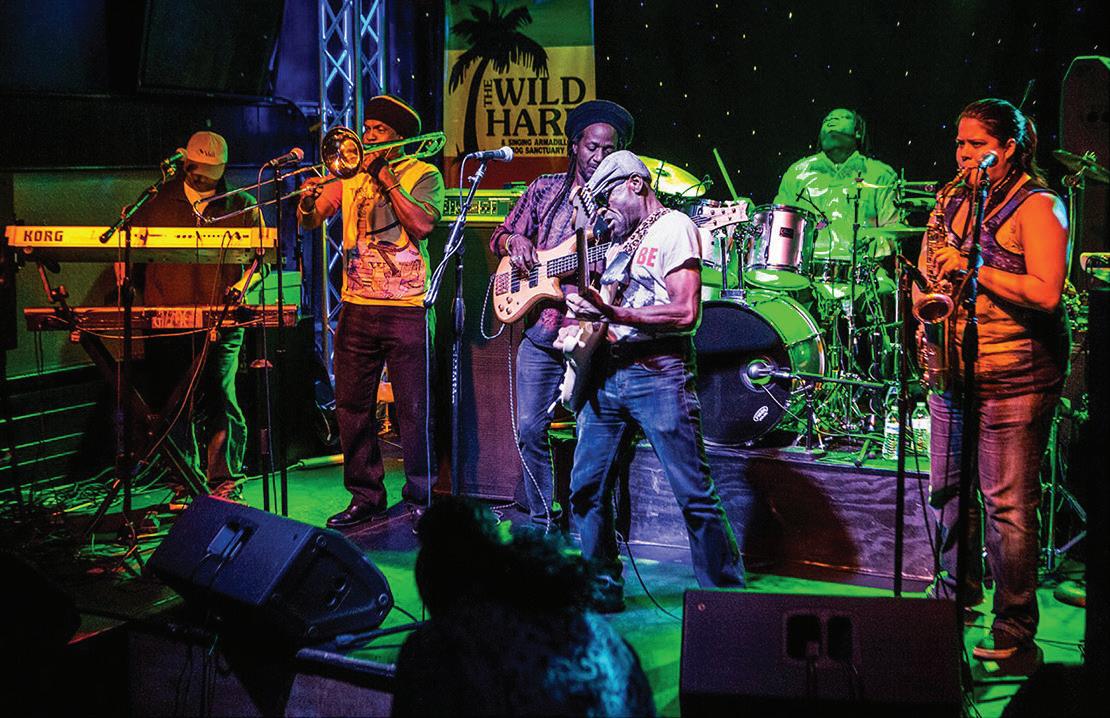
continued from p. 3
Makers. Gizzae became Sunday-night regulars at Lincoln Park reggae hub the Wild Hare, and though Rock is the only remaining member from those early years, the group have maintained their soulful roots-reggae sound (flecked with country, rock, and gospel) even as their lineup has undergone extensive turnover. When Gizzae came together, for instance, drummer and keyboardist Evans Atta-Fynn (who’s since left the band) was still living in his native Ghana and playing in popular highlife act the Western Diamonds. He moved to Chicago with that group in 1997, bringing him closer to his future bandmates. On Gizzae’s most recent release, the 2008 self-released album Roots Like a Lion , they maintain a Talmudic scholar’s strict adherence to the basic building blocks of reggae—they infuse every accented upbeat and harmonized vocal with learned devotion, even as they flavor their music with twangy harmonica or psychedelic guitar. There’s no reason reggae can’t be big enough to contain 80s rock frizz (“I Just Can’t Wait”), doo-wop harmonies (“Going Steady”), and smooth-jazz piano froufrou (“Love Me”). In Gizzae’s hands, all sorts of pop sounds can work in harmony with buoyant, soothing reggae. —Leor
GalilFlamenco Quartet Project meets
Chicago blues, jazz, and rap

Ethiocolor is on tour as part of Center Stage, CenterStageUS.org. Sun 9/24, 3 PM (doors at 2 PM), Sleeping Village, 3734 W. Belmont, 21+
Melaku Belay had a rough time of it growing up on the streets of Addis Ababa in the 1980s, but that’s also where he developed the lifelong love for classic Ethiopian dance and music that’s since taken him far beyond his country’s borders. Today, Belay is a global artistic ambassador who delivers major speeches abroad on the need to preserve this heritage; he also works directly to preserve it by running the multipurpose Fendika Cultural Center, which he founded in 2016 as an expansion of long-running Addis Ababa venue Fendika Azmari Bet. He leads a troupe called Fendika, which has visited Chicago as recently as 2018, as well as the associated folkloric music and dance ensemble Ethiocolor, which performs regularly at the Fendika center and likewise carries its mission around the world.
Ethiocolor features instruments with centurieslong histories, including washint (wooden flute), masenqo (one-string bowed fiddle), and krar (pentatonic lyre). Though the group uses drums arranged like a stripped-down version of a Western trap set, its rolling, swinging beats derive from the Ethiopian pentatonic funk that emerged in the late 1960s (pioneers of the style can be heard on the Ethiopiques compilation series). The music usually provides improvised commentary on current personalities or
situations, much like griot songs in the western part of Africa. The accompanying dances, called eskista, feature rapid pistoning of the shoulders, which also directs the musicians’ energy. Throughout a performance, the artists build up a communal ecstasy that makes it clear why this tradition has endured. Onstage, Belay immerses himself completely in the action: during introspective passages, he can enter a trancelike state, and when the music swells in energy, he erupts in moves that have earned him the nickname “the Walking Earthquake.” Belay also embraces any modern technology that can spread his message of cultural and musical heritage: he
draws on his collection of vintage Ethiopian jazz LPs when he spins tunes online as DJ Melaku. Frustratingly, the authorities in Ethiopia are hardly unified in support of Belay’s mission—Fendika currently faces a demolition order, the result of a governmentsponsored private development. A GoFundMe page has been set up to help Belay and his community fight back. —Aaron
CohenEthiocolor is part of Center Stage, a public diplomacy initiative of the U.S. Department of State’s Bureau of Educational and Cultural Affairs with funding provided by the U.S. government, administered by the New
England Foundation for the Arts in cooperation with the U.S. Regional Arts Organizations. General management is provided by Lisa Booth Management, Inc.
Wendy Clinard’s dance company has been devoted to flamenco since she founded it in Pilsen in 1999, but the group’s interpretations are far from orthodox. Clinard Dance uses the intimate interplay that drives flamenco—among dancer, guitarist, and singer—as the engine for even its most daring experiments. Critic and painter Dmitry Samarov described Clinard’s process in a 2018 Reader article: “Although her work is rooted in flamenco,” he wrote, “she’s just as likely to find new moves watching a bus driver steer his or her vehicle down Halsted as in a performance hall or theater.” The occasion for Samarov’s story was itself a daring experiment: Clinard developed a multimedia collaboration called Everyday People/Everyday Action with Japanese photographer Akito Tsuda, inspired by his 1990s photos of people in Pilsen. Nine years ago, Clinard Dance launched the Flamenco Quartet Project , whose lineup consists of Clinard, guitarist Andrea Salcedo, percussionist Diego Alvarez, and vocalist José Díaz “El Cachito.” Since 2021, they’ve made a point of collaborating with Chicago artists outside their turf, with the goal of using flamenco as a lens to see blues, jazz, and hip-hop in new ways. In keeping with that mission, the other people involved in this World Music Festival set are activist and rapper King Moosa, jazz and R&B vocalist Joan Collaso, and blues harmonica player and singer Billy Branch.
—Leor GalilBab L’ Bluz, Así Así Mon 9/25, 9 PM (doors at 8 PM), Empty Bottle, 1035 N. Western, 21+
The beginnings of Moroccan-French psychedelic rock band Bab L’ Bluz date to 2017, when Moroccan singer and guitarist Yousra Mansour met French guitarist and producer Brice Bottin. They decided together to learn how to play the guimbri (aka gimbri, guembri, or sintir), a three-string bass lute associated with the Gnawa people of Morocco. Traditional all-night Gnawa rituals associate different spiritual entities with different rhythms plucked on the guimbri, using ecstatic music and dance to evoke and communicate with these spirits. These ceremonies foreground a central pillar of Gnawa music: capturing trancelike states through hypnotic repetition. The Gnawa are descendants of enslaved people from the Sahel, south of the Sahara in present-day Nigeria, who were brought north to Morocco and later converted to Islam; their music, in its drumming and singing and purpose, reflects this multicultural reality.
Bab L’ Bluz build on Gnawa sounds and usher them into the present. On “Gnawa Beat,” the opener to their electrifying 2020 debut, Nayda! (Real World), they build a tight, swerving groove from
bubbly electric guimbri (plus its smaller, higherpitched cousin the awisha), a heavy sashaying beat, and rustling percussion. Flute melodies periodically adorn the sinuous melodies, but Mansour’s commanding vocals lead the charge. The band’s joyful long-form jamming primes listeners to luxuriate in the textural pleasures of their music: “El Gamra” contains a striking passage of wordless, hocketing vocals, “El Watane” seems to firmly anchor every sound with its shuffling beat, and “Waydelel” builds a solo on rebab (a hoarse-sounding traditional fiddle) from frantic repeated phrases powered by a sudden shift to a staggered beat. Album closer “Bab L’ Bluz” begins in media res, so it feels like you’re stumbling upon a public festival. The instruments’ infectious syncopation and dotted rhythms seem to conjure a centripetal force that drags you into the mesmerizing arrangement, where the guitar solo can overwhelm you with the force of its roaring timbre. Bab L’ Bluz’s songs are always like this: they draw you in and leave you pleasantly dazed. —Joshua Minsoo Kim
Guitarist and vocalist Fernando de Buen López formed an eclectic indie-rock outfit called El Mañana in Mexico City in 2009, but when he moved to Chicago in 2012, his bandmates didn’t follow—the group released an album of old material in 2014, but by then they were defunct. In 2018, though, de Buen López ended his music-making drought by resurrecting the project under the name Así Así with new collaborators: the current lineup consists of drummer Ben Geissel, keyboardist and vocalist Celeen Rusk, bassist Sam Coplin, and guitarist Christian Caceras. Despite his relocation, de Buen López continues to write all his lyrics in Spanish, which he says works best with the music he makes. On the 2022 full-length Mal de Otros, Así Así create structured, compact fusions of indie rock, dance, surf, cumbia, and other Latin styles, in contrast to El Mañana, who played looser, jammier songs—in an interview with WBEZ’s Sasha-Ann Simons, de Buen López attributed the change to the pandemic, which prevented Así Así from developing material in live rehearsals. But that relatively understated approach has served his new band well: the title track of Mal de Otros collides space-age surf rock and clanging postpunk in a frenetic, psychedelic odyssey, while “Descubrimientos” builds slowly from a pensive melody into a sleek, industrial throb that could shake a dance floor. —Jamie Ludwig

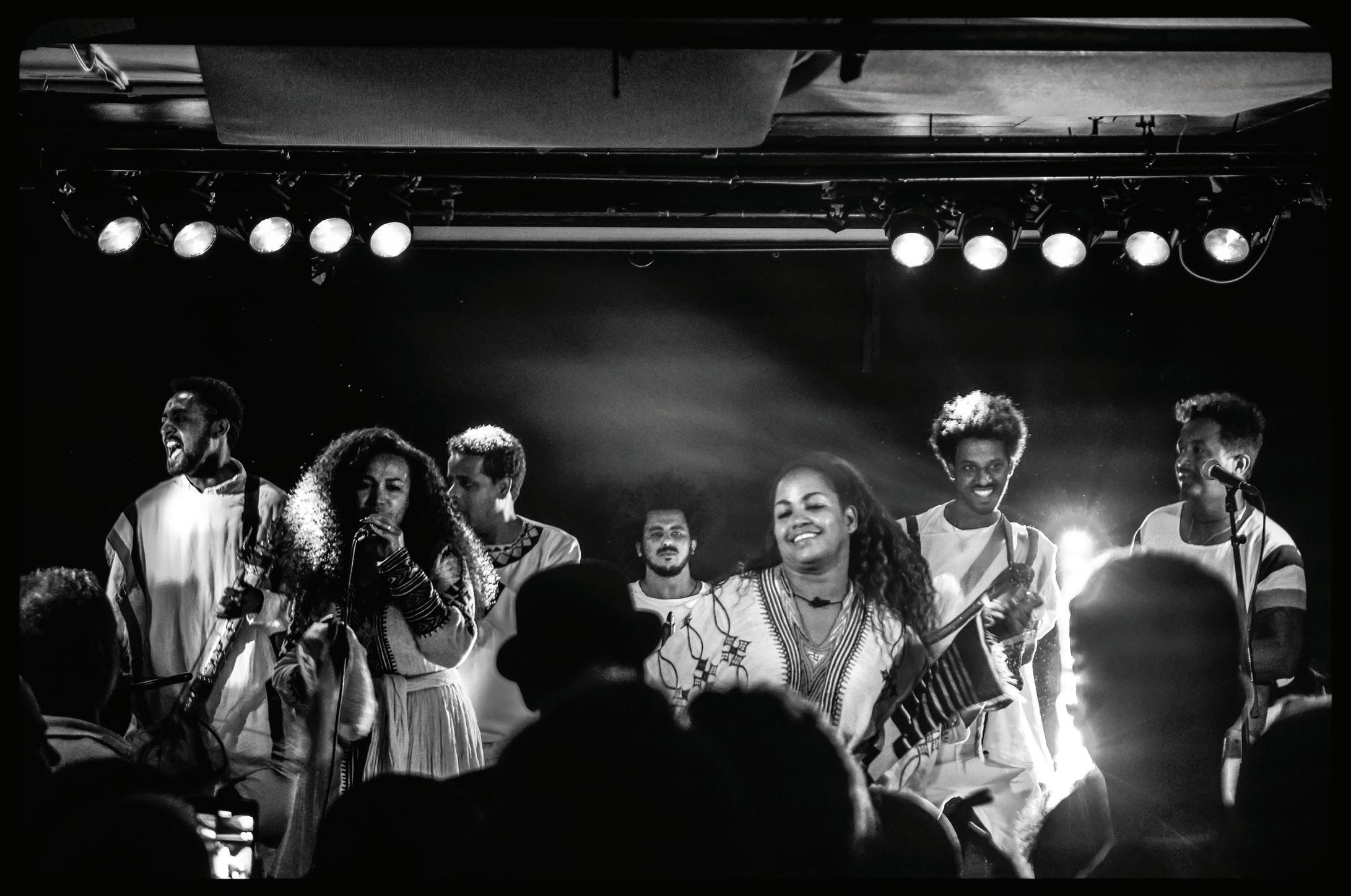
San Salvador, Silvia Manrique Tue 9/26, 7 PM (doors at 6 PM), Constellation, 3111 N. Western, 18+
I love Occitan folk music, but I feel like the term needs unpacking for the layperson. “Occitan” doesn’t describe a particular country or even a single culture—it’s a dwindling minority language

continued from p. 5
spoken mostly in parts of southern France, northwest Italy, and northeast Spain (specifically Catalonia, where it’s an official language). The Occitan language is beautiful, and so is Occitan folk music, which survives mostly in the valleys of the Piedmont region in Italy. Common instruments include button accordion, clarinet, violin, harmonica, and hurdygurdy (called “vioulo” in Occitan), and yearning, soul-searing Occitan ballads accompany all sorts of celebrations in the Piedmont valleys. Because the ruggedness of the region’s terrain has enforced a degree of isolation on its people, each valley has been able to persist in its own melodies and dance steps, even when their communities hold songs in common.
Young French group San Salvador carry on this ancient tradition, though they name-drop John Coltrane and My Bloody Valentine in their press materials—and when you hear their music, you’ll instantly recognize the trance-inducing qualities it shares with modal jazz and shoegaze. San Salvador are nearly an a cappella outfit—their six voices ebb and flow in dense, hair-raising harmonies, moving in intricate counterpoint that’s augmented only by handclaps, a few low-pitched drums, and tambourine. If this seems like it’d add up to thin arrangements, you’re underestimating what six voices can do—the band’s latest release, the 2021 album La Grande Folie , has a remarkably dense and vivid sound. “Quau te Mena” begins by stacking interlaced vocal ostinatos over hushed drones before exploding into soaring, overlapping melodies, while “La Grande Folie” opens with an immediate rhythmic attack, fueled by snapping beats and deftly woven chants. San Salvador’s music manages to be incredibly intense but also soothing, so that it feels pagan and divine at once. Onstage they’re sure to bewitch anyone within earshot.
—STEVE KRAKOWChicago jazz singer Silvia Manrique recalls wearing out the grooves of the bossa nova tracks on her dad’s favorite albums when she was six years old. That’s part of why she decided in 2006 to focus exclusively on Brazilian music—and why in 2008 she founded the group Beaba do Samba, which specializes in samba, its subgenre pagode, and bossa nova. Manrique’s fourth appearance at the World Music Festival arrives as she emerges from an almost complete performance hiatus that began around a decade ago. In 2020 she was diagnosed with breast cancer, and she says her battle with the disease has changed the way she approaches singing—she takes more risks now.
In May of this year, Manrique dropped her first solo release, the four-song EP Sonho . Recorded in Brazil with coproducer and Afro-Brazilian singer Fabiana Cozza (Manrique’s vocal coach), the EP combines Latin and Brazilian material in a bassforward mix. It includes a bolero that nods to Manrique’s Mexican American heritage and funky spins of bossa nova classics that share the folksy playfulness of Brazilian singer-songwriter Joyce Moreno.
The EP also showcases Manrique’s vocal prow-
ess, of course. Under Cozza’s encouraging tutelage, she says, she’s been “tapping into the entire system of what makes sound”—a technique her coach calls “o corpo de voz,” meaning “the body of the voice.” It’s easy to hear the work Manrique has put in, because it’s given her already heart-fluttering leaps into bossa nova standards a new boldness.
—SHEBA WHITE
Farah Siraj, Karim Nagi & Huzam
Ensemble Wed 9/27, 7 PM, Maurer Hall, Old Town School of Folk Music, 4544 N. Lincoln, all ages

In 2012, TimeOut New York called Jordanian singer and guitarist Farah Siraj “the Norah Jones of the Middle East,” and the comparison works on several levels. Jones is well-known for her environmental and progressive political activism, and Siraj has been recognized for her years of humanitarian work with an invitation to perform at the 2012 United Nations Humanitarian Awards in New York. In her

sound for contemporary ears.
Their debut album, last year’s Who Are We? , weaves together its kaleidoscopic grooves by combining electric guitar with Arabic lutes (electric saz and awtar) and kit drums with traditional percussion (including frame and hand drums, the tablalike tbila, and the metal castanets often called karkabou in Algeria). “Awal” perhaps best embodies this marriage of Middle Eastern and Western stringed instruments, with guest guitarist Lee Ranaldo (formerly of Sonic Youth) haunting the track with slow-burning, dissonant licks.
Al-Qasar’s poetic Arabic lyrics often touch on political topics, such as the pervasiveness of injustice and government corruption. The seven-minute epic “Ya Malak” speaks on the power imbalance between the world’s haves and have-nots, and it features a not-so-subtle cameo by Jello Biafra
(founding front man of Dead Kennedys) reciting an English translation of Egyptian revolutionary poet Ahmed Fouad Negm. Other guests include Algerian oud master Mehdi Haddab, who adds a knotty, impassioned solo to the end of “Barbès Barbès,” and Brooklyn-based Sudanese expat Alsarah, who pours her heart out on “Hobek Thawrat.” She sings about the turbulent aftermath of the 2019 military coup in her homeland, and the chorus even borrows the words of a slogan chanted at protests.
—Alejandro HernandezChicago percussionist and composer Karim Nagi hails from Egypt, and his expertise in Arab folk traditions colors his music to its roots. Nagi records and performs with the Huzam Ensemble , a quartet of Chicagoans from across the Arab diaspora. On the 2021 album Huzam, he plays a small frame
drum called a riqq—essentially a tambourine with a fish-skin membrane. The rest of the group consists of Ronnie Malley (Palestine), who plays the oud, a short-necked fretless lute; Naeif Rafeh (Syria), who plays the ney, an end-blown wooden flute; and Emad Roushdy Ibrahim (Egypt), who plays a violin in an Arabic tuning. “Huzam” is the name of a common maqam (an Arabic melodic mode or scale), and every song on the album employs it. This particular maqam begins and ends on a microtone, placing it firmly outside the framework of conventional Western harmony; Nagi also uses rarely performed traditional Arab art-music forms, in a further effort to create something he calls “un-imperial, unoccupied, and distinctly ours.” Throughout Huzam, the ensemble perform with passion and precision, transforming Nagi’s compositions into immersive environments. Much of the music is heterophonic, with multiple instruments performing simultaneous versions of the same melody, but the players also take occasional solos: when Rafeh steps out near the end of “Longa Huzam,” his peripatetic playing evokes the blissful, aching final steps of a long walk through summer heat. Nagi and Huzam Ensemble will perform original compositions as well as traditional material. —Leor Galil
La Perla, Kafolike School of Percussion Thu 9/28, 7 PM (doors at 6 PM), the Promontory, 5311 S. Lake Park Ave. W., 21+

Founded in Bogotá, Colombia, in 2014 by Karen Forero, Giovanna Mogollón, and Diana Sanmiguel, La Perla is a percussion and vocal trio whose music interlaces vocal harmonies with indigenous flutes

called gaitas and a wide variety of percussion: African drums, scrapers, bells, shakers, and more. La Perla root their compositions in the traditional music of Colombia’s Caribbean coast, but they aren’t bound by it. “We do traditional music our way,” Mogollón told Spanish online newspaper El Español in 2018. As a band of bogotanas, these women stand out among practitioners of this musical style—it originated in rural communities, and it’s often considered the domain of men. La Perla fortify their music with punk attitude and touches of rock and hip-hop, sometimes adding beatboxing to their explorations of South American and Caribbean rhythms such as Dominican merengue, Cuban rumba, and Peruvian chicha. Their lyrics often center women’s rights and social justice, and their 2019 single “Bruja” (featured in Colombian Netflix series Siempre Bruja) became a popular anthem at protests and solidarity marches. Its title means “Witch,” and it indicts misogyny toward women who dare to be different: “Me querían quemar / Ya no tengo miedo / Me quité el disfraz / Yo hago lo que quiero, no me van a callar” (“They wanted to burn me / I am no longer afraid / I took off the costume / I do what I want”).
La Perla titled their 2022 album Callejera, a term for street wanderer or explorer that also has less positive connotations (it can mean “streetwalker”). The record’s 12 tracks include songs that address the rights of the working class and our responsibility to protect the planet from the travesties of climate change, and their danceable modern take on ancestral Afro-Colombian rhythms has the kind of energy that can fuel collective struggle. This performance promises to demonstrate the power of community and celebration. —Catalina Maria Johnson
In 2013, Chicago percussionist and educator Sekou Tepaka Lunda Conde founded the nonprofit Kafolike School of Percussion to educate students
about West African music, cultural history, ethics, and folklore. Conde began his own studies in 1978 at Muntu Dance Theatre, founded in Chicago in 1972, and he currently serves as the theater’s executive director. He’s spent decades sharpening his skills on the djembe, a large-bodied goblet-shaped hand drum that can produce a wide, expressive range of tones, from piercing pings to deep, resonant booms. Developed around 800 years ago by the Mandinka people (who now live mostly in Mali and Guinea), it’s often played in a traditional percussion ensemble, and it’s loud enough to stand out as a solo instrument in that context.
Conde’s biography includes an impressive list of master musicians—among them Mamady Keita and Famoudou Konaté from Guinea and Moussa Traore from Mali—who’ve guided him on the djembe and taught him the musical culture of the Mandinka. For this World Music Festival performance, Conde and friends will demonstrate a sampling of what Chica-
goans can learn through intensive study at the Kafolike School. —Leor
GalilRagamala: A Celebration of Indian Classical Music Presented in collaboration with the South Asia Institute, South Asian Classical Music Society-Chicago, and People of Rhythm Productions. This event continues into the morning of Saturday, September 30. Fri 9/29, 6 PM-8 AM, Preston Bradley Hall, Chicago Cultural Center, 78 E. Washington, third floor, all ages
The Sanskrit word “Ragamala” translates to “garland of ragas.” Since ragas are the fundamental melodic materials of Indian classical music, you might expect a Ragamala to be a music festival—especially

because that’s what the city calls this one. But “Ragamala” actually describes a historical style of painting: a set of ornate miniatures depicting ragas with colorful, narrative imagery. Indian classical music has historically developed multidisciplinary, synesthetic forms, and Chicago’s Ragamala participates in that tradition by presenting a “garland” of artists, some budding and others in full flower, who’ve built bridges between their Indian classical training and disciplines such as film, theater, dance, and rock ’n’ roll.
Like its European counterpart, Indian classical music evolved out of devotional practices, blossomed with the patronage of royal courts, and is now beloved around the world. Over the course of thousands of years, interactions among peoples of diverse religions, languages, and geographies generated its rich musical landscape, which is sorted today into two large, regionally demarcated genres, Hindustani (north) and Carnatic (south). Especially in the north, a profusion of musical terms, song

forms, instruments, and melodic styles have come from Arabic and Persian sources. Indian classical compositions in general have been shaped by Islamic, Sufi, Buddhist, Jain, and Hindu spiritual ideas, as well as by secular poetry; they’re also sung in many languages, including Sanskrit, Tamil, Telugu, Urdu, Punjabi, Hindi, Kannada, and Rajasthani.
In recent years, violent propagandists have sought to erase this vibrant history of cultural plurality, instead pressing Indian classical music into service to uphold Hindutva, a Hindu nationalist ideology—a destructive lie. This ancient cultural treasure belongs to everyone, and Ragamala embodies that truth.
The vast sea of Indian classical music contains an unfathomable number of fascinating sounds to explore, and at Ragamala you’ll have the opportunity (14 hours of opportunities, in fact) to dive in, wade, float, or do whatever you please. You can drop in for a few hours after dinner, on a typical evening concert schedule; you can roll through at 2 AM,
after the clubs close; you can arrive at sunrise, do stretches, and meditate; or you can go whole hog and experience the epic magnificence of the entire marathon event. No matter how much time you commit, Ragamala will commit itself to your memory for days and weeks to come.
—Leslie Allison6-7:15 PM Unfretted featuring Sruti Sarathy, Vishaal Sapuram, and Akshay Anantapadmanabhan
The trio Unfretted derive their name from a quality shared by Sruti Sarathy’s violin and Vishaal Sapuram’s chitravina. Neither instrument has frets, and this makes them ideally suited to the melodic contours and expressive bends at the heart of the Carnatic ragas they play. These musical gestures might remind you of the slide-guitar licks that impart an emotional punch to country blues. You might also sense similarities between lap-steel technique and the method used to play the chitravina: the instrument is laid flat in front of the musician, who stops the strings with a handheld cylinder made of glass, metal, or wood. There’s no confusing the chitravina’s complex, nasal tone for that of any other stringed instrument, though—if anything, it sounds a bit like a human voice. This is a highly desirable quality in Carnatic music, where even instrumental performances of a raga relate to the lyrics of a song. Carnatic music, developed in southern India, is usually performed by a trio of one rhythmic and two melodic instruments, and the latter two often divvy up the roles of lead and accompaniment. That delineation isn’t necessarily strict, though, and in the case of Unfretted, either Sapuram or Sarathy might play lead. Akshay Anantapadmanabhan articulates complex percussive melodies and rhythmic figures with mridangam (a double-headed drum) or his own voice. This is a return engagement for Sarathy, who played two Ragamala sets in 2022, but it’s the first Unfretted date in Chicago.
—Bill MeyerIn 1969, the stoned throngs at Woodstock were rocked by the north Indian classical duo of Ravi Shankar (sitar) and Alla Rakha (tabla). These legendary partners did more than anyone else to catalyze the flow of Indian music into the mainstream of Europe and the United States. More than 50 years later, the crowd at Ragamala will be rocked by two of their musical descendants— Gaurav Mazumdar (sitar) and Amit Kavthekar (tabla).
Mazumdar is among Shankar’s disciples, and he’s taken up the unofficial mantle of Sitar Ambassador to the World. As such, he’s performed at an Olympic opening ceremony and at the Vatican for the pope.
In July he released an album called Crossing Cultures: India and the West (Ropeadope), which consists of four original compositions for sitar, violin, cello, and tabla. Mazumdar seems to maintain a dialogue with his instrument, as though it commands him as much as he commands it, and this makes

clear how intrinsic the act of listening is to his technique. The layered resonances of his sitar’s sympathetic strings rise up with the might of a chanting choir to hold the melodies aloft, then melt into a plush carpet that draws them close with a soft gravitational pull. Whatever a raga’s mood, Mazumdar’s attentive, grounded playing ensures you hear every detail.
Amit Kavthekar, who’s graced the Ragamala stage many times, was trained from early childhood by Alla Rakha and later by Rakha’s tabla-playing son Zakir Hussain, who might be more famous than his father today. Kavthekar has emerged from this tutelage with the ability to play his paired drums with the impact of an entire ensemble. He’s a charismatic and open performer, and he shares with Mazumdar not only a lineage but also a dedication to exploring the synergies among arts traditions. Together, this powerhouse duo is carrying forward the expansion of Indian music beyond India that their teachers famously began in the 1960s. —Leslie Allison
9:30-10:45 PM Ramakrishnan Murthy, Charumathi Raghuraman, and NC Bharadwaj
This stunning set is the only one at Ragamala to showcase the foundational relationship between violin and voice in Indian music. In training and performance, these instruments act as extensions of each other, embracing in an entwined timbre that’s more than the sum of its parts. Two distinguished young Carnatic musicians—violinist Charumathi Raghuraman and vocalist Ramakrishnan Murthy—will unite with fiery mridangam player NC Bharadwaj to deliver the power of this melodic pairing.
Over the past decade, Chennai-based Murthy has galvanized the international Carnatic community, winning prizes, attracting press, and booking performances on several continents. He’s a magnetic performer known for his creative, multidisciplinary aesthetic—in 2019 he collaborated with a visual artist and architect in a performance that combined ragas with paintings. Murthy embellishes his distinctively pearly upper-range voice with round, dancing gamakas (elaborations) that burble like a stream rushing over stones. With his open sound and expressive face, he uncovers each phrase as if for the first time.
Raghuraman is a commanding violinist with a correspondingly impressive performance history. Her ambitious, nuanced playing relishes the secrets hidden between notes; her silken melodies flow with the same organic potential for surprise as a train of thought. Onstage she has a cool, grounded composure that complements Murthy’s intrepid flights of fancy, a balance they’ve developed over years performing together. Illuminated by the focused, burnished patterns of Bharadwaj’s mridangam, Raghuraman and Murthy will maneuver through a thoughtfully curated Carnatic repertoire, delivering their own polished, vibrant, and original interpretations. —Leslie Allison
continued from p. 9
11:15 PM-12:30 AM Max ZT, Kunal Gunjal, and Amit
KavthekarSantoor player Kunal Gunjal carries on the legacy of his groundbreaking teacher, the late Shiv Kumar Sharma, who’s credited with integrating this south Asian hammered dulcimer into north Indian classical music in the 20th century. Previously performed mainly in Kashmiri music, the santoor is unlike other Hindustani stringed instruments. Instead of creating the distinctive glides between notes (called meends) characteristic of north Indian strings, the player strikes the santoor’s 100 strings with thin mallets, producing sparkling waves of tones that peal and crash into one another. Each pitch is discrete, like those of a harp, but Gunjal has developed a technique that manipulates rhythm and volume to create halos of polyphony from the resonance hanging in the air between notes. With light, rapid trills, he manifests a kind of effervescent tickle for the ears.
In a duet for the ages, Gunjal will be joined by fellow santoor master and Sharma disciple Max ZT, aka Max Zbiral-Teller. Based in Brooklyn, ZbiralTeller has traveled from Senegal to Mumbai to pursue his training, and he’s a major innovator of the dulcimer in contemporary American music. Zbiral-
Teller’s expansive explorations can be heard on his improvised 2022 solo release, Daybreak , created as a musical salve to the pain of the pandemic, and in the ensemble House of Waters (see the Global Peace Picnic on Sat 9/30). Both Gunjal and ZbiralTeller zealously uphold the santoor’s relatively new place in Indian tradition, and they’ve dedicated themselves to further expanding the instrument’s reach. Gunjal cowrote a 2018 album of cinematic scores featuring the santoor, Nature of All Things, while Zbiral-Teller appears on the 2020 album Periphery by singer-composer Priya Darshini.
Gunjal and Zbiral-Teller will perform with tabla player Amit Kavthekar (see tonight’s 7:45 PM set). The sounds of 200 strings and two drumheads will immerse listeners in a radiant dreamscape of melody and rhythm from which they won’t want to awaken. —Leslie Allison
1-2:15 AM Akkarai S. Subhalakshmi, Akkarai S. Sornalatha, R. Sankaranarayanan, and Vijay Ganesh
The violin is generally thought of as a Western classical instrument, but it’s been a staple of Carnatic music for more than 200 years and Hindustani music for nearly a century. It’s an ideal tool for the glides and drones characteristic of Indian classical
performance. Baluswamy Dikshitar is credited for pioneering the use of the instrument in Carnatic music in the late 1700s, and he and his peers adjusted its tuning and playing style to fit a new context. In the West, of course, the violin is usually held between the chin and shoulder and played while sitting in a chair or standing, but Indian musicians typically perform while sitting cross-legged on the floor, with the bottom of the violin leaning against the neck or chest and the scroll balanced on the foot. To Western eyes, they may appear to be playing it upside down.
The Akkarai sisters, aka Akkarai S. Subhalakshmi and Akkarai S. Sornalatha , are two of southern India’s most celebrated classical violinists and vocalists. Following in the footsteps of their violinist father, Akkarai S. Swamynathan, and grandfather Suchindram S.P. Sivasubramaniam, the sisters began playing at an early age. Their grandmother R. Sornambal performed harikatha (a form of traditional musical storytelling), and Subhalakshmi participated in a concert when she was four years old.

The sisters’ traditional sound is instantly recognizable to anyone familiar with classical Indian music. But as they saw away together, you may also hear hints of the painful pleasure of raspy Appalachian fiddle tunes. Live, the Akkarai sisters are a joy to watch, whether they’re playing in unison or toss-
ing the lead back and forth—each vigorously bows when it’s her turn and grooves along to the beat when it isn’t. They’re joined for this set by two mridangam players, R. Sankaranarayanan and Vijay Ganesh . With its 2,000-year history, this doubleheaded drum predates the violin by a few centuries, but in combination they sound like they were made for each other.
—Noah BerlatskyRagas don’t just evoke a mood, they embody a mood—they directly install it in the listener’s consciousness. Central to Indian classical music, these melodic frameworks act more like atmospheres or environments, and to master them is more than a craft. It’s a way of life.
Few understand this better than Jai Sovani. The Chicagoland Hindustani vocalist practices three to four hours per day when her schedule allows, with the goal of keeping herself immersed in the various ragas. She compares her studying to breathing.
“The deeper you go into it, the more it envelops you,” she explains. “You do it subconsciously. You’re not thinking about inhaling or exhaling. You’re into the music the whole time, without even actively doing it.”
With her lustrous, agile voice, Sovani completely inhabits the ragas. She glides between notes with grace and tirelessly sustains long tones as if traversing a vast space. Sovani is looking forward to this predawn set, in part because certain ragas are associated with certain times of day—most of her concerts take place in the afternoon or evening, so this will be a rare chance for her to publicly perform early-morning ragas that convey freshness, devotion, and tranquility.
Sovani will be joined by Giri Aigalikar on tabla and Praneet Marathe on harmonium. All three were raised in the Indian city of Pune. Sovani says this shared background adds to their onstage chemistry. “They grew up in similar atmospheres, so they know how to bring out the performance,” she says. “It’s like one homogenous piece of art that we put together. It just works.” —Austin
Woods4:30-6 AM Saraswathi Ranganathan and Sai Raghavan
Veena master Saraswathi Ranganathan has been a leader in Chicago’s international music scene for decades, and her many appearances at Ragamala have made her a beloved fixture. The veena is a large wooden lute with its own surround-sound speakers—it has a bulbous resonator at each end,
one positioned on each side of the player’s body. The veena is often called India’s most ancient instrument, but its diverse palette of sounds exists outside time and can call to mind unexpected hints of searing blues guitar or warbling theremin.
Ranganathan is a hometown champ—she’s won a Chicago Music Award, composed for the Chicago Humanities Festival, played for Goodman Theatre, and joined the historic Chicago Immigrant Orchestra. She pursues an ethos of intercultural community building, both as a musician and as the founder of two organizations she continues to run: Surabhi Ensemble, a performance collective whose thoughtful, genre-spanning compositions celebrate music as a common global language, and the Ensemble of Ragas School, a nonprofit that uses musical training to help students see humanity as an interconnected family.
Even without these sustained contributions to
Chicago culture, Ranganathan’s exquisite playing would speak for itself. Holding court with the elaborately painted veena across her lap, she plucks the instrument’s main strings to craft careening, exuberant melodies that slide, bob, and weave; meanwhile she brushes the drone strings to summon haunting, nuanced harmonies. At this year’s Ragamala, she will duet with Chennai-based Sai Raghavan on mridangam. Raghavan shows his enjoyment of the music through his body language; his movements radiate the feelings of the songs, and his eyes invite you to wonder along with him at the drum’s mysteries. Ranganathan and Raghavan have collaborated before, and they’re sure to build on their chemistry—expect wild creativity, dizzying virtuosity, and generous, welcoming energy. —Leslie
 Allison
Allison
6:30-8 AM Lyon Leifer and Hindole Majumdar
Chicago-based bansuri player Lyon Leifer and Milwaukee-based percussionist Hindole Majumdar are like-minded musicians who both excel as educators. In their duo, where Majumdar plays tabla, they blend their expertise in Hindustani music. Leifer has played the bansuri, a keyless bamboo flute, for more than 50 years, and he crafts many of his own instruments. Using his well-honed breath control, he quietly navigates the intricacies of serene ragas, and his fleet fingers help him push through rapid tempos and ornamental improvisations. His dexterity on the bansuri owes a debt to his early years studying with Devendra Murdeshwar, one of India’s most prominent advocates for the instrument. Along with mastering the ragas’ myriad styles, Leifer founded the South Asian Classical Music Society-Chicago, one of the presenters of Ragamala. He wrote an instruction book based on Murdeshwar’s teachings, How to Play the Bansuri, and he also gives les-
sons online. Along with immersing himself in Indian classical music, he’s also worked extensively within European-derived idioms; among his many accomplishments, he played first flute with the Lake Forest Symphony.

Majumdar has played tabla since childhood and continues to transmit the discipline as the founder of the Hindole Majumdar School of Music and Dance in Milwaukee. His globally minded musical vision includes collaborations with Uzbek percussionist Abbos Kosimov and Mexican American drummer Glen Velez. Also an entrepreneur, he’s released albums on his own Sunanda label. Leifer and Majumdar’s past performances, which include previous installments of Ragamala, suggest that they may be ideal onstage partners; Majumdar’s easy grasp of different polyrhythms matches Leifer’s melodic flow in a seemingly relaxed but undoubtedly intense intuitive dialogue. —Aaron
Cohencontinued from p. 11
Global Peace picnic This mini festival features nine sets on two stages. The artists on the ¡Súbelo! Stage are presented in partnership with the Chicago Latino Dance Festival of the International Latino Cultural Center of Chicago. Sat 9/30, 1-7:15 PM, Humboldt Park Boathouse, 1301 N. Sacramento, all ages
¡Súbelo! Stage, 1-1:25 PM Mexican Folkloric Dance Company of Chicago with Mariachi Perla de México

The renowned Mexican Folkloric Dance Company of Chicago , founded in 1982, shares the vast richness of the iconic dances from Mexico’s 32 states. The company’s costumes are works of art in and of themselves, reflecting different regional traditions as well as the stories narrated by the dancers’ movements. Their twirls and spins propel their ornate, flowing skirts into ephemeral sculptures of cloth and color, shaped and reshaped by their precise, intricate footwork.
The dance company will be accompanied for this performance by Mariachi Perla de México, founded in 1997 by Margarito “Ricardo” Rivera, originally from Amatitán, Jalisco. The state of Jalisco is the birthplace of modern mariachi (and tequila, which makes total sense). The current lineup of Mariachi Perla includes the genre’s classic instruments: trumpet, violin, guitar, guitarrón (a large bass guitar), and vihuela (a higher-pitched five-string guitar). Their repertoire covers the full range of emotions
expressed so well by mariachi music, from tragic lovelorn despondency to euphoric celebration.
This program will showcase two cultural traditions, both transplanted here generations ago, that have grown deep, vital roots in our community. It’s sure to be a feast for the senses, as well as a display of Mexico’s millennial history and Chicago’s immigrant pride. —Catalina
Maria Johnson¡Súbelo! Stage, 1:30-1:55 PM Samba1
Brazilian Dance Group with Chicago
SambaOne of Chicago’s finest Brazilian music ensembles and one of its most exuberant Brazilian dance companies join forces for this high-energy performance. Chicago Samba , directed by vocalist and multiinstrumentalist Mo Marchini, have been a local staple for more than three decades, stirring up crowds with lively takes on popular Brazilian styles—including not just samba but also bossa nova, forró, chorinho, and blistering all-percussion batucada jams. At this show, they’ll be joined by the long-running Samba1 Brazilian Dance Group, led by Edilson Lima. They’ll kick up the heat with snappy, hip- shaking steps that evoke the “anything goes” spirit of a great Carnaval celebration. The bubbling rhythms will have you dancing your tail off, and even if you’d rather just watch, the brilliantly colorful plumed costumes (designed by Chicagoan Daniel Sabec) will provide a feast for the eyes. —Jamie Ludwig
The northwest suburban Korean Performing Arts Institute of Chicago (KPAC) was founded ten years
ago to celebrate a traditional Korean performing art called pungmul. Pungmul includes drumming, dancing, and singing, and it was originally performed as part of collective farmwork and to accompany rituals or mask dances at community gatherings. Korean villagers would use pungmul performances at harvest festivals to speak to the hardships they experienced, but the practice declined in the early 20th century as a consequence of urbanization and suppression by Japanese colonial authorities. In the 1960s, pungmul enjoyed a resurgence at Korean pro-democracy protests, as the people returned to addressing their grievances together through public song and dance.
KPAC presents several other artforms as well, including the semi-improvised solo folk music called sanjo and the dramatic musical storytelling called pansori, but their outdoor public performances for city festivals tend to employ dazzling folk-drumming ensembles made up of KPAC instructors and students. I’m hoping this set will include a demonstration of sangmo pankut, in which the performers wear a special hat (the sangmo) with a long ribbon on top that they can spin using motions of their heads while simultaneously dancing and drumming.
—Salem Collo-JulinA troupe of dancers from Chicago’s Center of Peruvian Arts will perform with local Peruvian band SolAndino in a program that honors Indigenous cultures and centers decolonization. Founded by Rubén Pachas and Jessica Loyaga, the Center of Peruvian Arts is based in Belmont Cragin and presents workshops and performances across Chicago land, highlighting traditional
Amazonian, Andean, and coastal Peruvian dances. SolAndino are a four-piece consisting of Pedro Verástegui, Pedro Verástegui Jr., Alberto Otarola, and Huguito Gutiérrez, and they’ll back the dancers with traditional guitar, Andean flute, charango (basically a tiny guitar with strings in pairs, sometimes made from an armadillo’s shell), and percussion (including the box drum or cajón, which originated in Peru). The dancers’ vivid traditional clothing combines with the musicians’ stirring songs to give audiences a taste of Peru’s distinct regions while creating an intentional celebration of humanity and the natural world.
—Taryn Allen¡Súbelo!
Led by Humboldt Park native Ivelisse Diaz, Bomberxs D’Cora are a Chicago-based collective of dancers, singers, and drummers connected to an Afro-Puerto Rican performing arts school, La Escuelita Bombera de Corazón, that Diaz founded in 2009. Both organizations are dedicated to bomba, an art form developed more than 400 years ago by enslaved African people in Puerto Rico. They combined dance, percussion, and voice in running dialogues as a means of communication, selfexpression, and resistance. Bomba dancers sing call-and-response melodies to the beats of hand drummers, one of whom (the “primo” drummer) follows the lead dancer’s movements; other traditional percussion includes the cuá (a wooden barrel on its side, played with two sticks) and maracas.
The sounds, movements, and lyrics of bomba merge African diasporic traditions with European and Indigenous influences. The long, flamenco-style skirts and petticoats often worn by the dancers originated in Spain; the maracas and cuá come from
the Caribbean’s native Taino culture; and the drums (barriles de bomba) are historically made from goatskin and rum barrels, reflecting bomba’s roots among enslaved African sugar-plantation workers who found ways to assert their identity in the face of colonial rule. Bomberxs D’Cora will bring this history to vivid life in a way that’s sure to stick in your heart and mind. —Jamie
LudwigGlobal Stage, 4-5 PM House of Waters
Hammered dulcimer player Max ZT (see also Ragamala on Fri 9/29) started learning his instrument as a seven-year-old in Chicago, taking weekly lessons from folk singer-songwriter Kat Eggleston. After moving to upstate New York to attend Bard College, where he studied folk, jazz, and Celtic music, among other things, he expanded his musical horizons abroad: over the course of several years, he took repeated trips to Senegal to learn from the Cissoko griot family (especially kora player Fodé Cissoko) and traveled to India on a grant to study Indian classical music with santoor master Shiv Kumar Sharma. In the late 2000s, he met Japanese six-string bassist and jazz improviser Moto Fukushima in New York, and in short order they’d started a band. Their idiosyncratic trio House of Waters (currently with a revolving-door drum spot, occupied by Antonio Sanchez for the brand-new album On Becoming ) perform original instrumentals that capture something from all the genres and countries that have informed their aesthetic. ZT’s intricate technique, inspired by the way kora players weave together lead and bass lines, provides a range of melody that might recall gospel bluegrass on one song and Kashmiri folk on another. House of Waters play sneakily complicated music: it sounds superficially like it belongs in the background (and
the group have in fact scored several films), but their dazzling musicianship reliably breaks through the glossy surfaces of their sound to command your attention.
 —Salem Collo-Julin
—Salem Collo-Julin
¡Súbelo! Stage, 5-5:25 PM Tamboula Ethnic Dance Company


Founded by dancer and choreographer Daniel Desir, who’s still the troupe’s artistic director, Tamboula Ethnic Dance Company has been sharing Haiti’s dance culture with Chicago for more than two decades. Tamboula combines elements of contemporary jazz and ballet with traditional Haitian dance forms (including Ibo, Kongo, Dahomey, Nago, Yanvalou, and Mayi) that merge African foundations with Taino, French, and Spanish influences. Tamboula makes tradition approachable, achieving the troupe’s goal of transcending stereotypes and demystifying Haitian culture. The dancers look at once grounded and light as air, and the drumming will stir your body with its pulse. —Taryn
Allen¡Súbelo! Stage, 5:30-5:55 PM Laruni
Hati Garifuna Dance GroupFormed in 2010, the local Laruni Hati Garifuna Dance Group consists of drummers, singers, and dancers who specialize in traditional dances of the Garifuna people (called Garínagu in the Garifuna language). The Garifuna are of mixed African and Indigenous Caribbean ancestry, descendants of island natives and formerly enslaved Africans shipwrecked on Saint Vincent in the 1600s. Garifuna Settlement Day, a national holiday in Belize, commemorates the arrival of the Garifuna on that country’s shores on November 19, 1802, after being deported from the nearby Grenadine Islands by
continued from p. 13
the British. Members of the Laruni Hati Garifuna Dance Group plan and perform at a Chicago celebration of that holiday each year. The group’s repertoire includes hunguhungu, chumba (a solo dance similar to salsa), and punta, the most iconic expression of Garifuna culture—its lively drumming, dancing, and singing unite the communities of the Garifuna diaspora and connect its past to its present.
—Tyra Nicole TricheGlobal Stage, 6-7:15 PM
Abraham “Duke” Amayo spent more than 20 years fronting Brooklyn-based Afrobeat band Antibalas, but since he kicked off his solo career in 2021, he’s been embracing seemingly disparate inspirations in much the way a good festival of world music does—he’s not worrying whether things seem to fit together, but rather making sure people are enjoying themselves. Amayo joined Antibalas in 1999, a few months into the group’s first year, after baritone saxophonist Martin Perna and guitarist Gabriel Roth met him in Williamsburg. Before his time in Antibalas, Amayo ran a storefront space called the Afro-Spot, which served as a home for his fashion line, his screen-printing business, and his dojo (he’s a sifu in the Jow Ga style of kung fu, a discipline he’s been practicing since the late 70s). Amayo’s first gig with Antibalas was filling in for a percussionist who couldn’t make it, but with his onstage charisma and skill at writing lyrics, he soon evolved into the group’s lead singer. In 2020 Antibalas released their final album with Amayo, Fu Chronicles , and it’s as close to a solo project as he could’ve gotten: he wrote all the songs and created the cover art, and his Nigerian heritage and martial-arts background informed the material. The album combines the moody side of Antibalas’s take on 1970s Fela-style Afrobeat with serene and focused lyr-

ics that sound lifted from The Art of War . On his own this year, Amayo has been performing with a smaller band, though “smaller than Antibalas” (which could be as big as 15 pieces) still leaves room for shekere, congas, and horns. You can expect some lion dancing along with your booty shaking. —Salem Collo-Julin
Quitapenas, Rudy De Anda, DJ La Colocha Sat 9/30, 10 PM (doors at 9 PM), Chop Shop + 1st Ward Events, 2033 W. North, 21+
“We play dance music that is fun. . . . It’s happy music,” says Quitapenas vocalist and guitarist Daniel Gómez. The southern California band’s name translates to “remove worries,” which also speaks to what they’re trying to do with their infectious tropical Afro-Latine fusions: leave listeners without a care in the world.
A group of Inland Empire–based first-generation friends (some of whom went to high school and college together) formed Quitapenas in 2011, uniting around their shared passion for tropical and traditional dance music from far-off places such as Peru, Colombia, Angola, Cape Verde, and Haiti. Though they had prior experience playing rock, they wanted to dig into Afro-Latine dance-music styles that had developed in the 60s, 70s, and 80s—not just to celebrate their sounds but also to help keep them alive.

“Obviously, we are not from these countries, so [the music] gets reinterpreted through our lens of southern California and also the perspective of students using the Internet as crates, as vinyl crates— digital crates where we get to pull music and pull the things that we like from each area, each culture, each sound,” Gómez says.
Quitapenas have increasingly leaned into experimenting with tropical rhythms, including Congolese
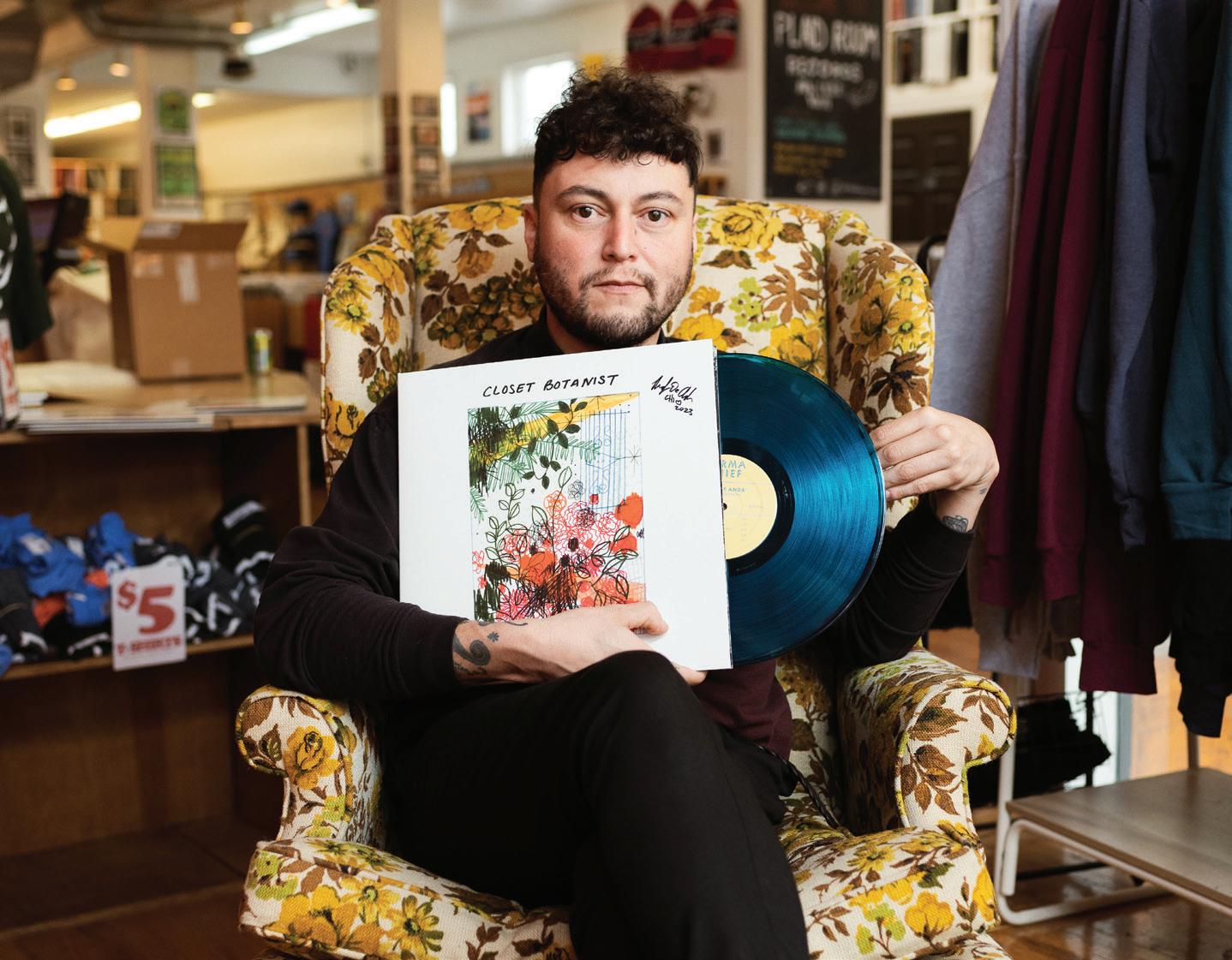
soukous, Colombian champeta, Haitian kompa, and Cape Verdean funaná. “We have improved our craft writing songs,” Gómez says. “We communicate better together, and we have a clearer vision of what we want, what we want to sound like and want to represent.” Cumbia, salsa, merengue, and electronics—mostly drum pads and samples—round out the Quitapenas sound. They offer an excellent introduction to the diverse diaspora of music composed by the next generation of multicultural art makers.
—Sandra TreviñoSinger-songwriter Rudy De Anda moved from Los Angeles to Chicago in 2020. In a May 2023 interview with Vogue México, he said he’d taken a liking to our city while on tour. At first the pandemic made gathering a challenge, but he found a community of like-minded Chicagoans that included plenty of Latine folks and Spanish speakers. Among the people De Anda befriended was Blake Rhein, a guitarist and producer who’s played in R&B combo Durand Jones & the Indications. De Anda had an album mostly written when he arrived, and Rhein helped him finish the songs on what became Closet Botanist (Colemine/Karma Chief), which came out this April. The record’s poppy, understated 60s-style rock carries De Anda’s wistful, lovelorn voice like it’s ferrying him in a palanquin. He sings in English and Spanish, and no matter the topic, he delivers his lyrics with doe-eyed warmth. On “WYD,” sunny key-
board swells, relaxed guitar riffing, and a busy but wispy drumbeat nudge the song from its restrained verses into its tender, swooning chorus—De Anda starts out skipping through clipped, nimble phrases, then opens up and lets himself soar. Simultaneously melancholy and suave, his performance will keep you following whatever moves he makes.
—Leor GalilMadalitso Band, Luciano Antonio’s Funk no Samba Sun 10/1, 8 PM (doors at 7:30 PM), Hideout, 1354 W. Wabansia, 21+
In 2009 a local producer saw Yobu Maligwa and Yosefe Kalekeni busking outside a shopping center in Lilongwe, Malawi. Now the duo is known as the formidable Madalitso Band, and they tour the world with an updated take on their country’s folk music. Kalekeni plays a four-string guitar and a cowskin foot drum, while Maligwa plucks a homemade babatoni, basically a variety of washtub bass whose single string is played with a slide. The guitar fills a role analogous to the hand-built banjos in 1970s Malawian music (similar to the traditional ngoni), and you can hear the spirit of Alan Namoko’s old blues recordings in Madalitso Band’s rhythms. The eight

songs on their third album, last year’s Musakayike (Les Disques Bongo Joe), live up to the title—it translates to “don’t doubt us.” On opener “Ali Ndi Vuto,” the duo’s lively vocal back-and-forth mirrors the jubilant pulse of the drum and guitar, and the simplicity of the composition allows it to radiate playfulness. Halfway through the track, Maligwa digs into the babatoni with a rapid series of notes whose resonant thwack crescendos into an almost distorted buzz—it’s a thing of modest beauty. The cyclical vocal melodies of “Mwaza” suffuse it with a joyous splendor that’s complemented and heightened by the urgent thrum of the babatoni. Throughout these songs, the duo maintain an elegant dance: the vocals most often work in perfect lockstep with the instrumentation, but they also maneuver expertly in and out of transcendent moments where they soar beautifully above it. That’s especially true for album closer “Jingo Janga,” which alternates between passages where vocal harmonies help drive the beat and showcases of Maligwa and Kalekeni’s vocal prowess. Madalitso Band often sing of love—on the title track, for instance, they insist that marriage should be rooted in love, not money—but you don’t have to understand the lyrics to feel how warmhearted this music is. —Joshua
Minsoo KimLuciano Antonio arrived in Chicago via a circuitous route from a rural area of the Brazilian state of Paraná, where he was one of several musicians in his
family. The guitarist, singer, and composer has been kicking around in local music circles for decades, and he first came here while working toward a bachelor’s degree in music performance at the University of Missouri–Kansas City. He was invited to join Chicago Samba (see the Global Peace Picnic on Sat 9/30), and until he finished his education and relocated permanently, he commuted back and forth from Kansas City each week.
More recently, Antonio has been performing solo acoustic sets at local venues and fronting small combos (usually with piano, bass, and drums) that showcase his knowledge of Brazilian classics and skill with group improvisation. Funk no Samba , he says, is a new group put together specifically for the World Music Festival, inspired by a recent conversation he had about 70s Brazilian funk and samba funk.
Funk no Samba may be new, but Antonio’s bandmates are all previous collaborators of his: Heitor Garcia will play hand percussion, building loops in real time with electronic assistance, while bassist Marcel Bonfim and drummer Jonathan Marks will (in Antonio’s words) “funk it up in a coherent manner with the grooves that Heitor will lay down.” Because Antonio also composes, his sets are a robust mix of classics and originals. He promises detours into material by the likes of Tim Maia, Seu Jorge, and Jorge Ben Jor during his band’s own fusion of experimental funk and samba. —Sheba White v
FRIDAY22
Baba Commandant & the Mandingo Band, Magic Carpet, DJ Onwa 10 PM (doors at 9 PM), Martyrs’, 3855 N. Lincoln, 21+
SATURDAY23
Cheikh Ibra Fam, Gizzae, DJ TopDonn 10 PM (doors and DJ at 9 PM), Avondale Music Hall, 3336 N. Milwaukee, 21+
SUNDAY24
Ethiocolor; Clinard Dance’s Flamenco Quartet Project meets Chicago blues, jazz, and rap 3 PM (doors at 2 PM), Sleeping Village, 3734 W. Belmont, 21+
MONDAY25

Bab L’ Bluz, Así Así 9 PM (doors at 8 PM), Empty Bottle, 1035 N. Western, 21+
TUESDAY26
San Salvador, Silvia Manrique 7 PM (doors at 6 PM), Constellation, 3111 N. Western, 18+
WEDNESDAY27
Al-Qasar, Karim Nagi & Huzam Ensemble 7 PM, Maurer Hall, Old Town School of Folk Music, 4544 N. Lincoln, all ages
THURSDAY28
La Perla, Kafolike School of Percussion 7 PM (doors at 6 PM), the Promontory, 5311 S. Lake Park Ave. W., 21+

FRIDAY29
Ragamala: A Celebration of Indian Classical Music This event continues into the morning of Saturday, September 30. 6 PM-8 AM, Preston Bradley Hall, Chicago Cultural Center, 78 E. Washington, third floor, all ages
6-7:15 PM Unfretted featuring Sruti Sarathy, Vishaal Sapuram, and Akshay Anantapadmanabhan

7:45-9 PM Gaurav Mazumdar and Amit Kavthekar
9:30-10:45 PM Ramakrishnan Murthy, Charumathi Raghuraman, and NC Bharadwaj
11:15 PM-12:30 AM Max ZT, Kunal Gunjal, and Amit Kavthekar
1-2:15 AM Akkarai S. Subhalakshmi, Akkarai S. Sornalatha, R. Sankaranarayanan, and Vijay Ganesh
2:45-4 AM Jai Sovani, Giri Aigalikar, and Praneet Marathe
4:30-6 AM Saraswathi Ranganathan and Sai Raghavan
6:30-8 AM Lyon Leifer and Hindole Majumdar
SATURDAY30
Global Peace Picnic This mini festival features nine sets on two stages. 1-7:15 PM, Humboldt Park Boathouse, 1301 N. Sacramento, all ages
¡Súbelo! Stage, 1-1:25 PM Mexican Folkloric Dance Company of Chicago with Mariachi Perla de México
¡Súbelo! Stage, 1:30-1:55 PM Samba1 Brazilian Dance Group with Chicago Samba
Global Stage, 2-3 PM Korean Performing Arts Institute of Chicago (KPAC)
¡Súbelo! Stage, 3-3:25 PM Center of Peruvian Arts with SolAndino
¡Súbelo! Stage, 3:30-3:55 PM Bomberxs D’Cora
Global Stage, 4-5 PM House of Waters
¡Súbelo! Stage, 5-5:25 PM Tamboula Ethnic Dance Company
¡Súbelo! Stage, 5:30-5:55 PM Laruni Hati Garifuna Dance Group
Global Stage, 6-7:15 PM Amayo
Quitapenas, Rudy De Anda, DJ La Colocha 10 PM (doors at 9 PM), Chop Shop + 1st Ward Events, 2033 W. North, 21+
Madalitso Band, Luciano
Antonio’s Funk no Samba 8 PM (doors at 7:30 PM), Hideout, 1354 W. Wabansia, 21+ v